For the second consecutive year, Bonington Gallery proud to collaborate with Nottingham School of Art & Design to curate and commission a new digital artwork for the Design and Digital Arts (DaDA) building. This year’s commission is by artist Ibiye Camp, coinciding with her solo exhibition layt de kam at Bonington Gallery (17 January – 7 March 2025).
Camp’s commissioned work employs photogrammetry technologies and draws from a personal narrative surrounding a family funeral. The piece is inspired by Chinua Achebe’s short story The Sacrificial Egg, which explores the tension between Nigerian traditions and modern Western influences. This theme resonates strongly with Camp’s practice, which interrogates the intersections of tradition, spirituality, and modernity through both digital and physical media.
The completed work will be showcased on the large-scale screen in the DaDA building lobby and within the immersive 270-degree projection space on the first floor. As part of the commission, Camp will also lead two student workshops and deliver a public lecture, offering further insight into her creative process and thematic concerns.
This presentation is accessible to NTU students and staff Mon-Fri 10-5pm. The general public can access it via two public tours led by Bonington Gallery Curator & Director, Tom Godfrey.
Ibiye holds an MA in Architecture from the Royal College of Art, and BA (Hons) in Fine Art, from the University of the Arts London, Central Saint Martins. Ibiye’s Thesis project titled Data: The New Black Gold was awarded the School of Architectures Dean’s Prize and was nominated for the RIBA Silver Medal Award.
Ibiye has presented her work at The Sharjah Architecture Triennial titled Rights of Future Generations in 2019 and Triennale Milano The State of the Art of Architecture conference in 2020. She showed in the Istanbul Biennial titled Empathy Revisited in 2020, and MAAT – Museum of Art, Architecture and Technology’s exhibition titled X is Not a Small Country in 2021 and the 13th Shanghai Biennale titled Bodies of Water in 2021, and London’s Art Festival, Deptford X in 2022. In 2023 Ibiye was included in the Venice Architectural Biennial within the group exhibition Guests from the Future, and in 2024, was included in Unseen Guests, a project organized by Iniva as part of the British Pavilion’s public programme at the 60th Venice Biennial.
Ibiye Camp, Rhiarna Dhaliwal and Emmy Bacharach run a BA Studio titled Digital Native at the Design Academy Eindhoven.

For our eighth display from the Bonington Archive, we are looking at an exhibition in our more recent history: House of Wisdom (September 27th – October 27th 2018). This exhibition was staged in the areas outside of the gallery and showcased hundreds of objects, books, articles, research and furniture which looked into the political power of books and libraries over the past century.
The central focus of the cabinet display is an A4 folio which contained over 100 newspaper articles around the closure of libraries, censorship of texts, new discoveries of ancient texts and political actions around libraries and freedom of speech. This is displayed alongside photo documentation, the original exhibition text, and a flyer listing the artists involved in the original project.
As part of the original project, there was a full public programme which took place across the city. All the recorded content from those talks, film screenings, and performances can be found by following this link
Archive cabinet was curated by Alex Jovčić-Sas, the original exhibition by Cüneyt Çakırlar
Please note, this is an archive presentation of a historical exhibition which occurred in 2018.
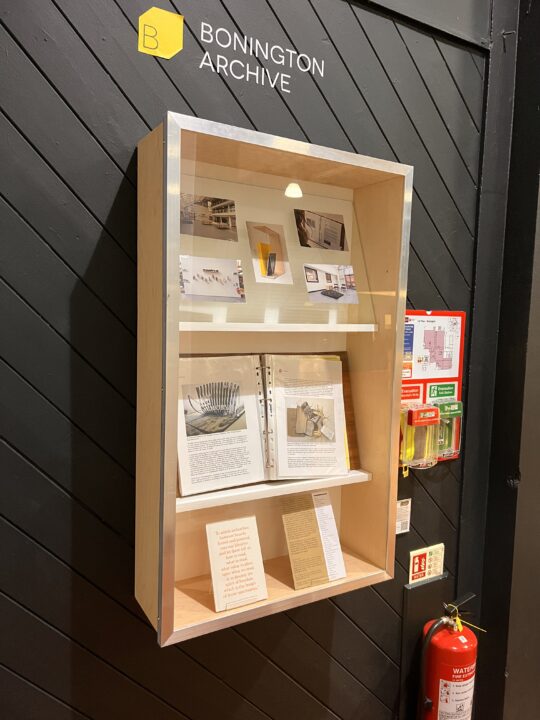
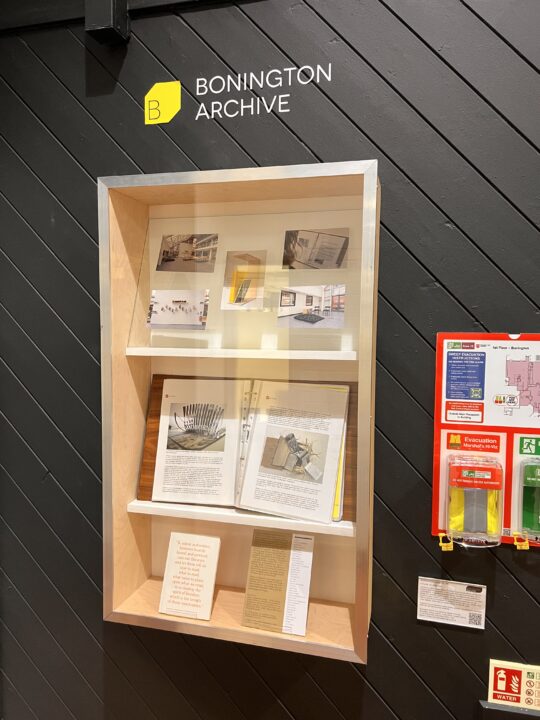
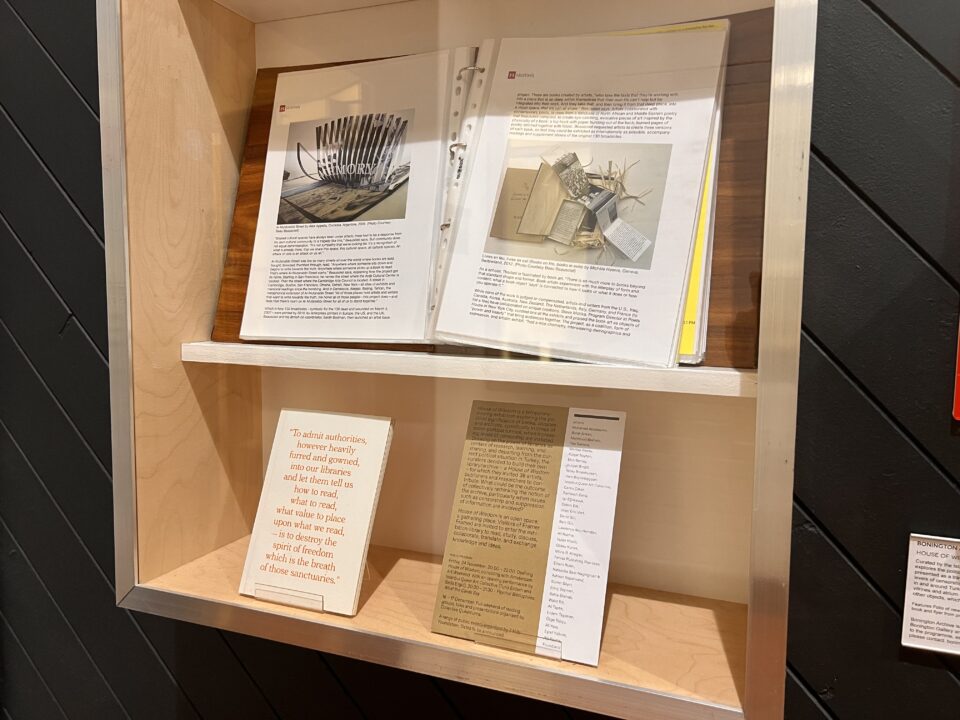
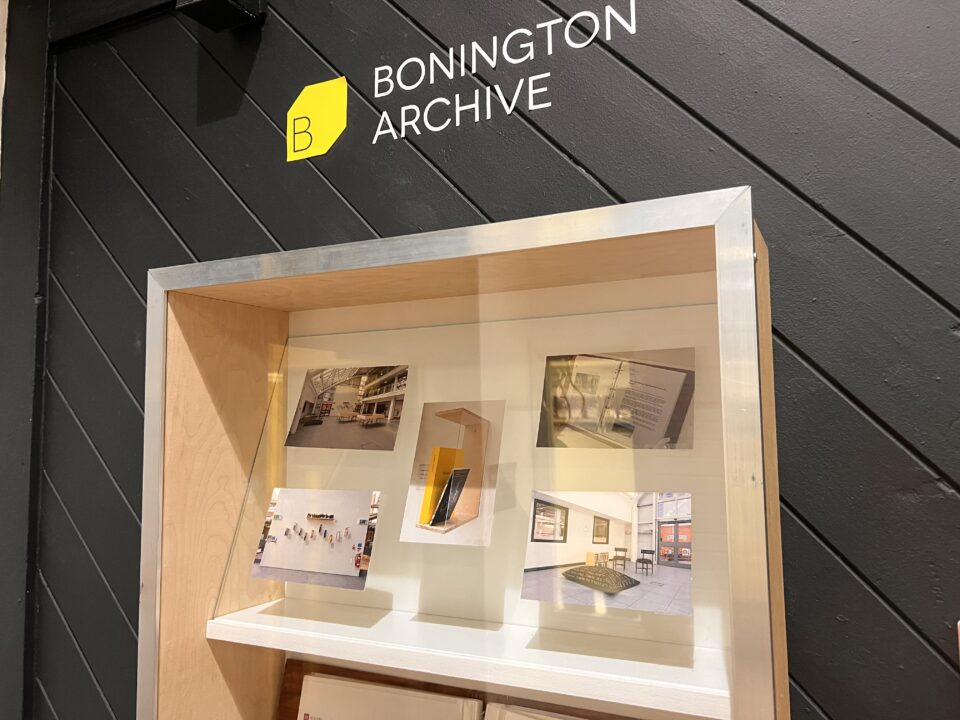
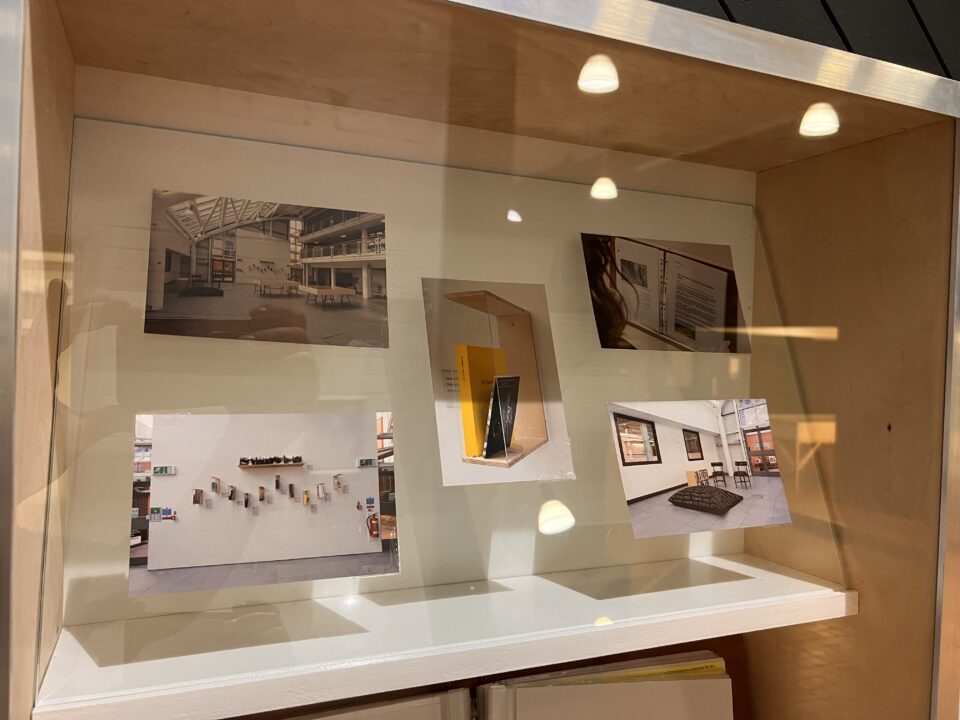
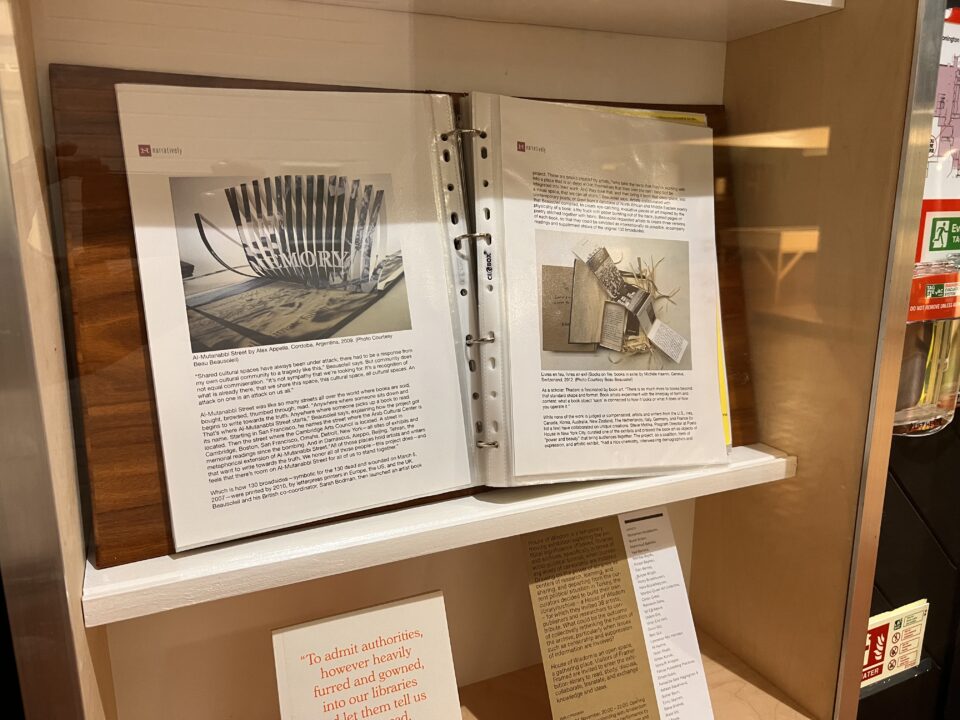
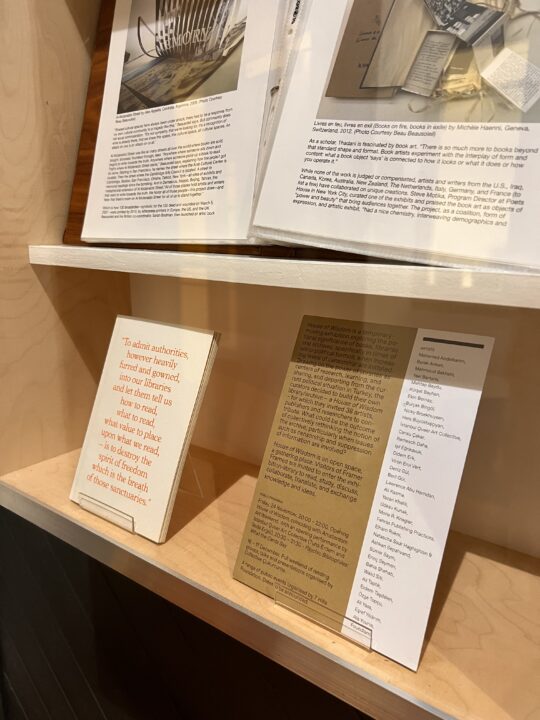
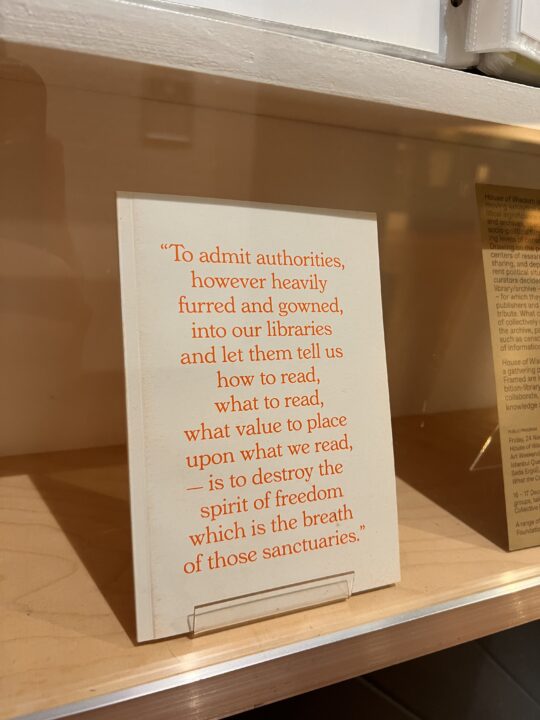
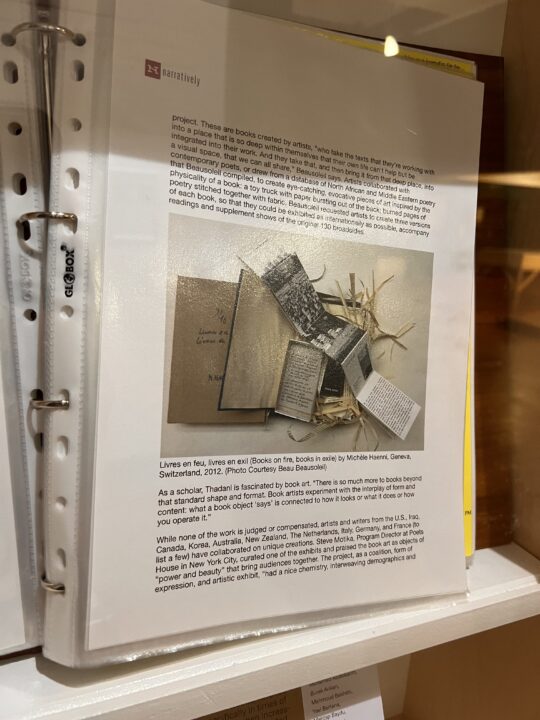
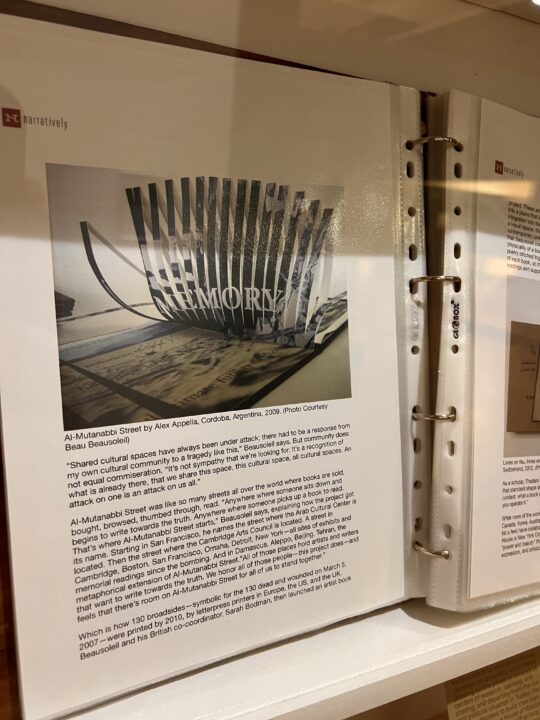
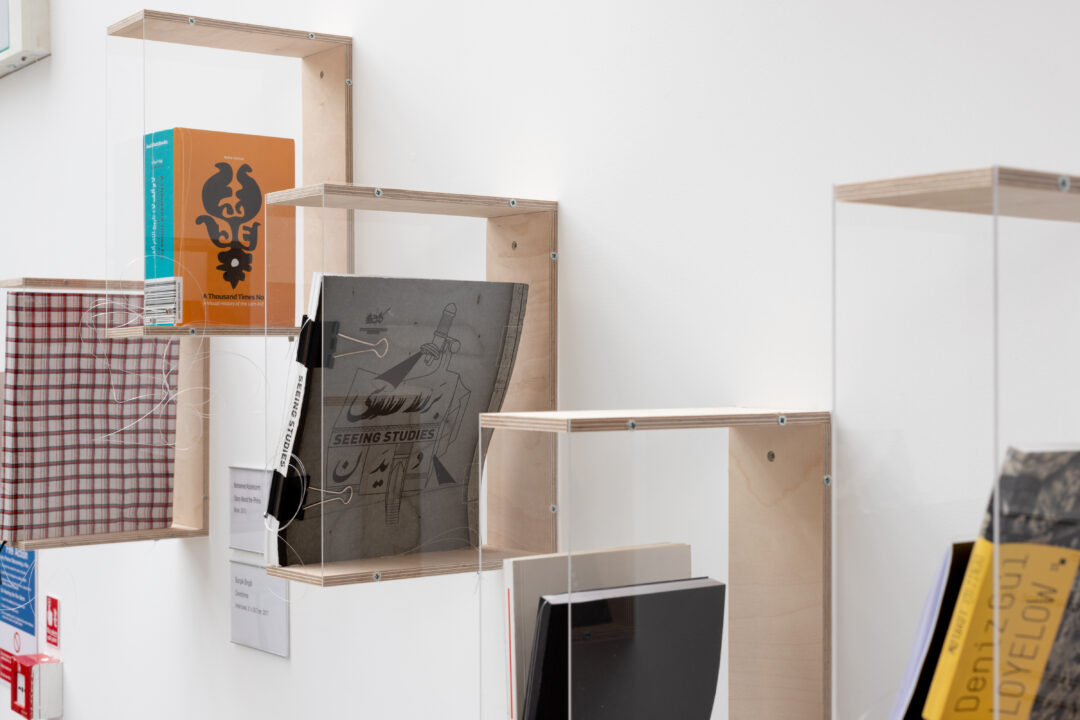
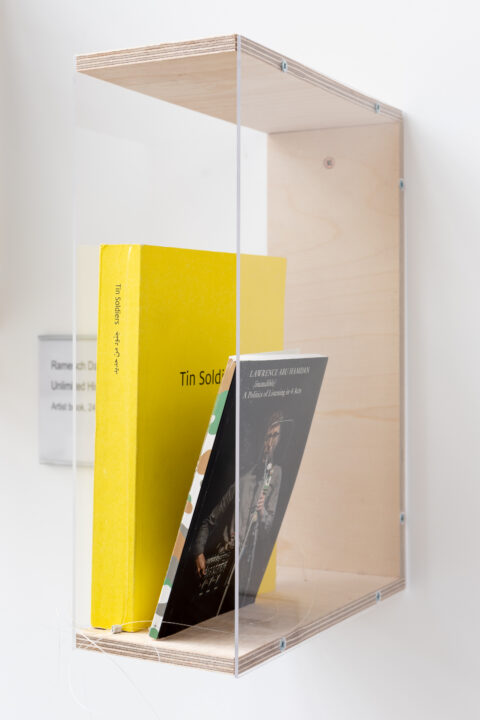
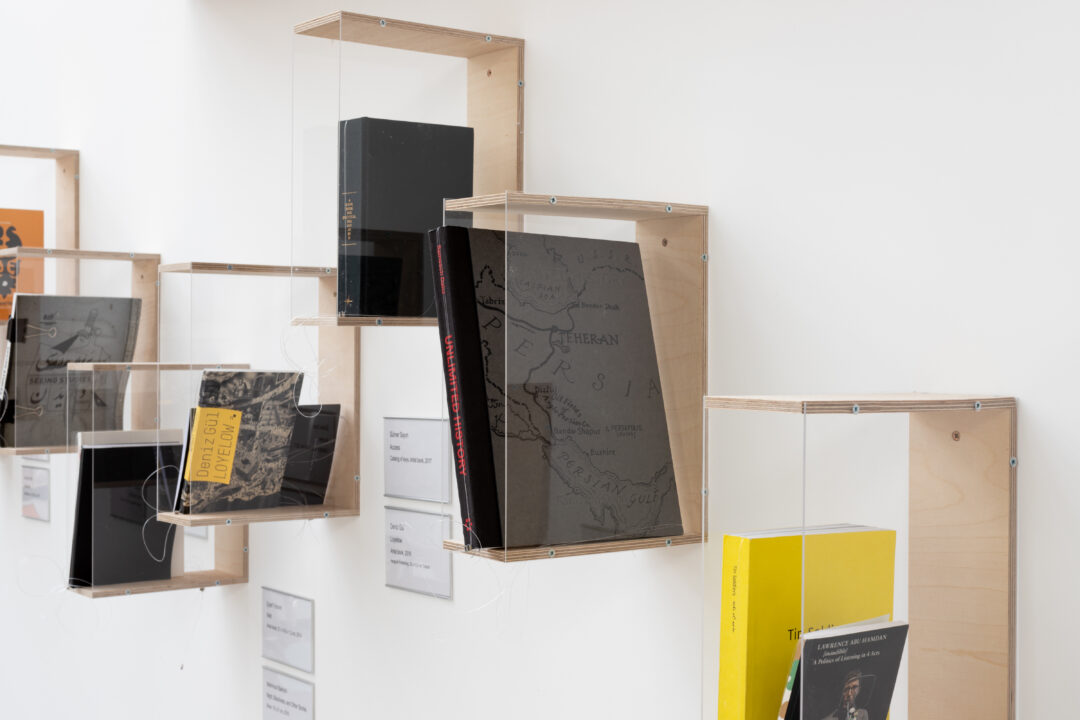
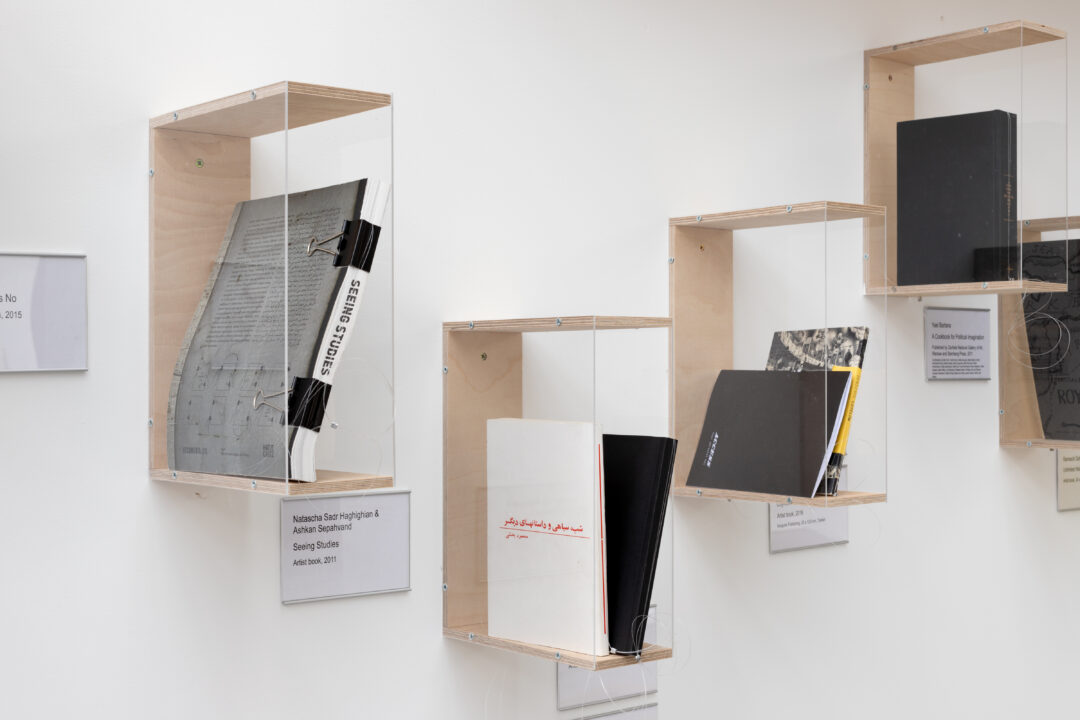
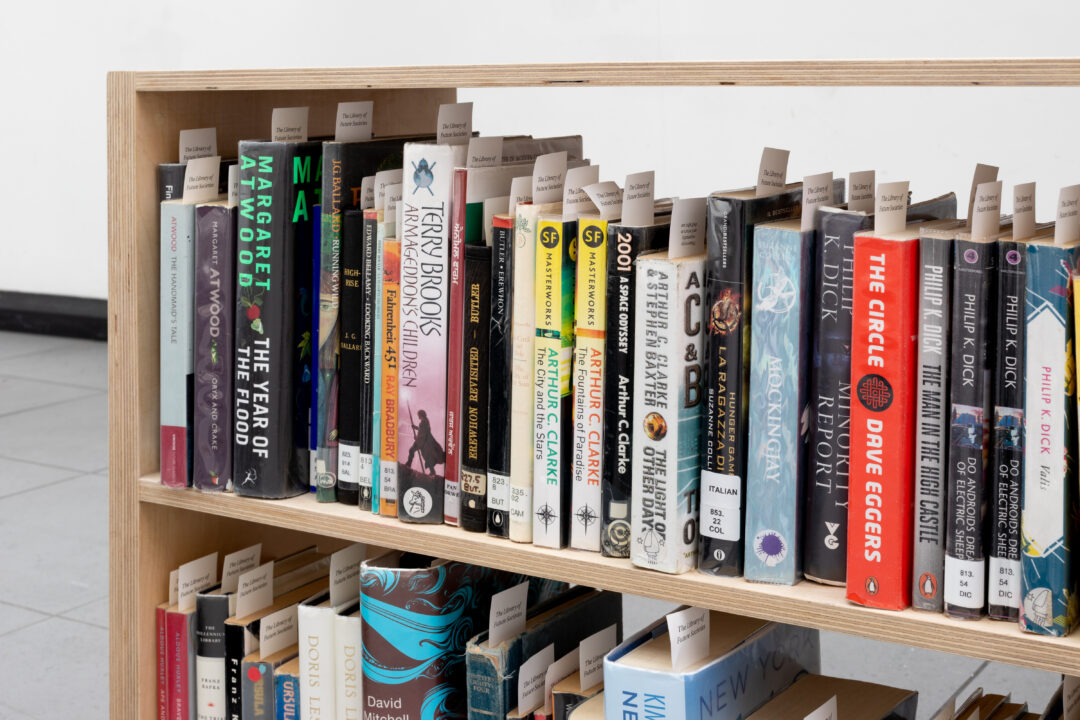
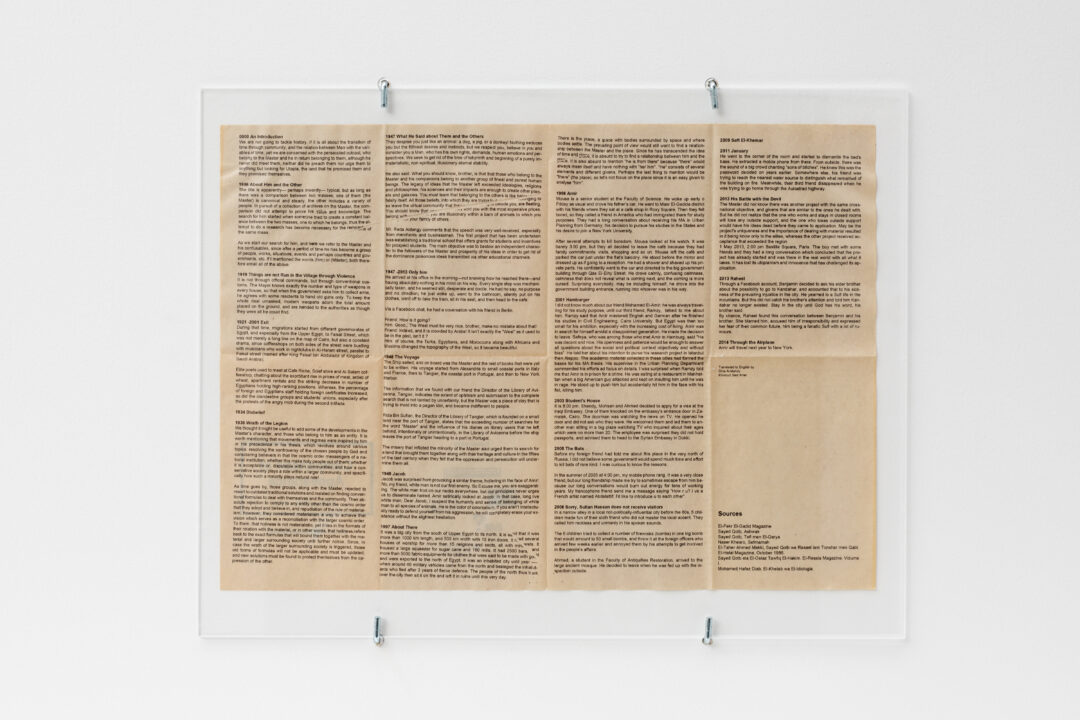
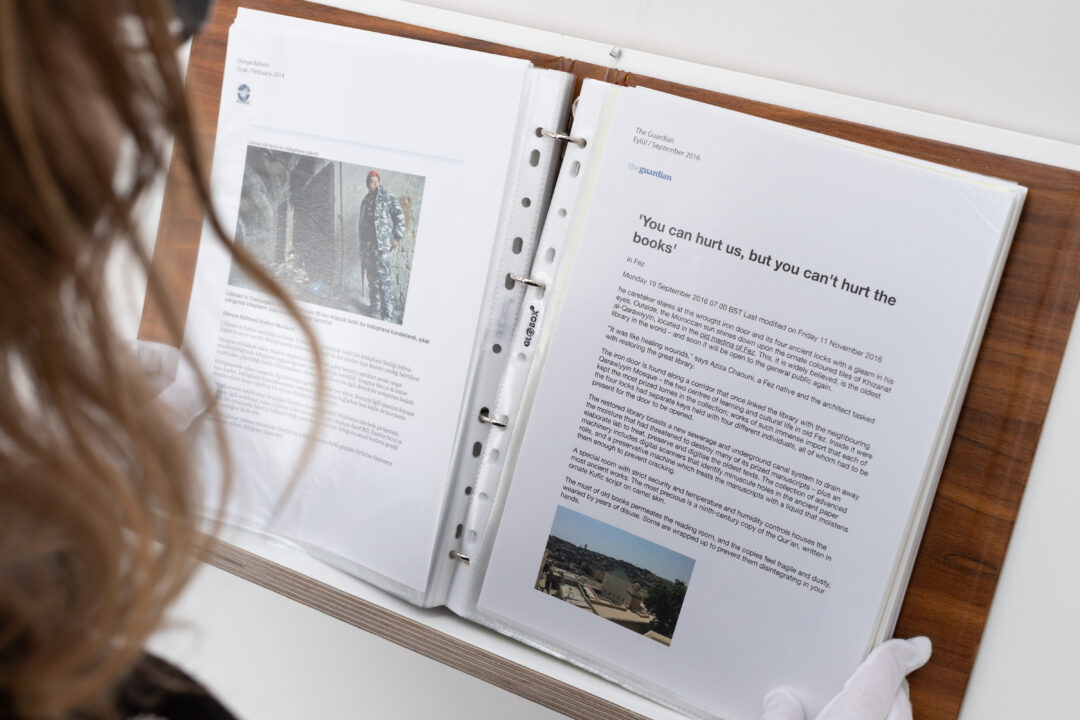
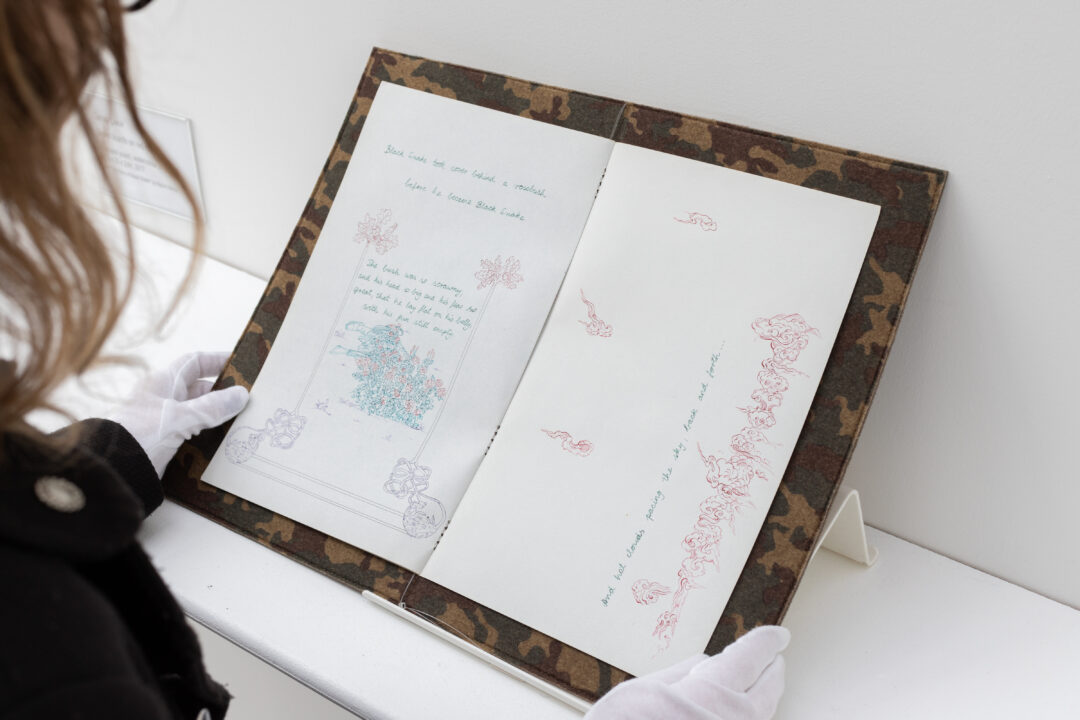
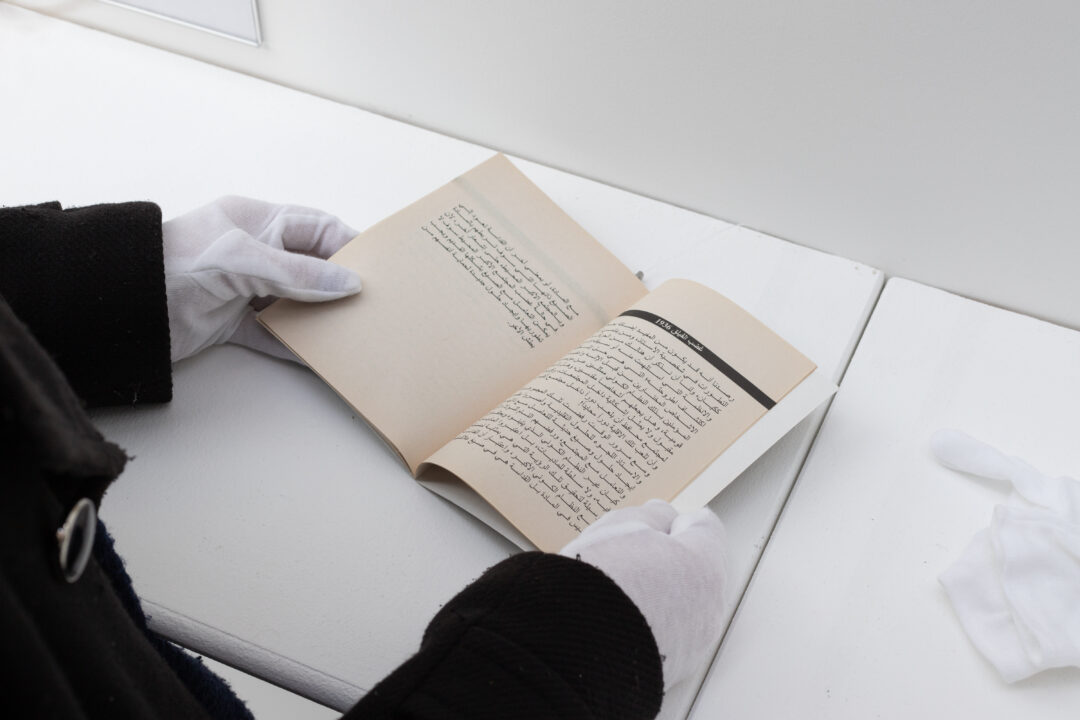
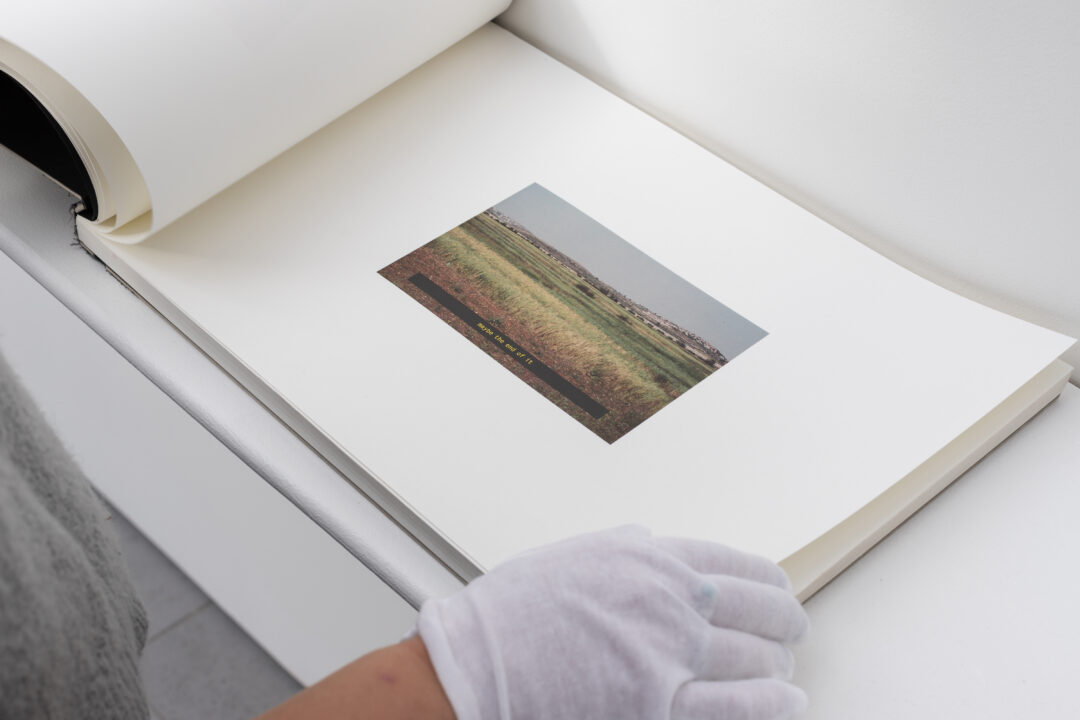
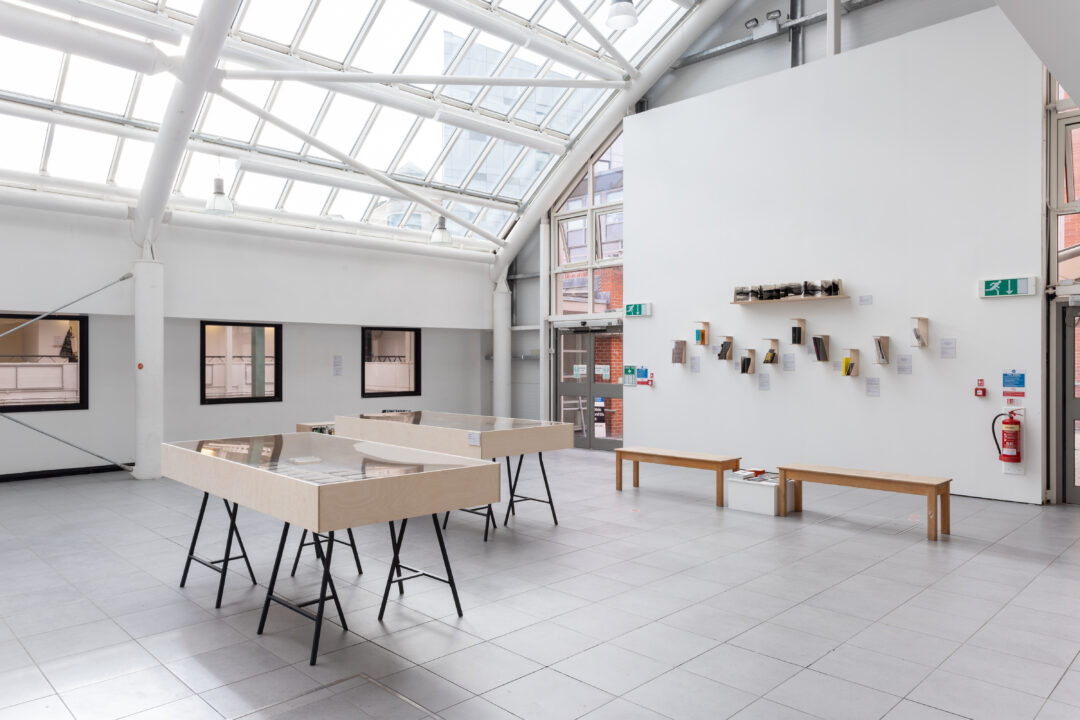
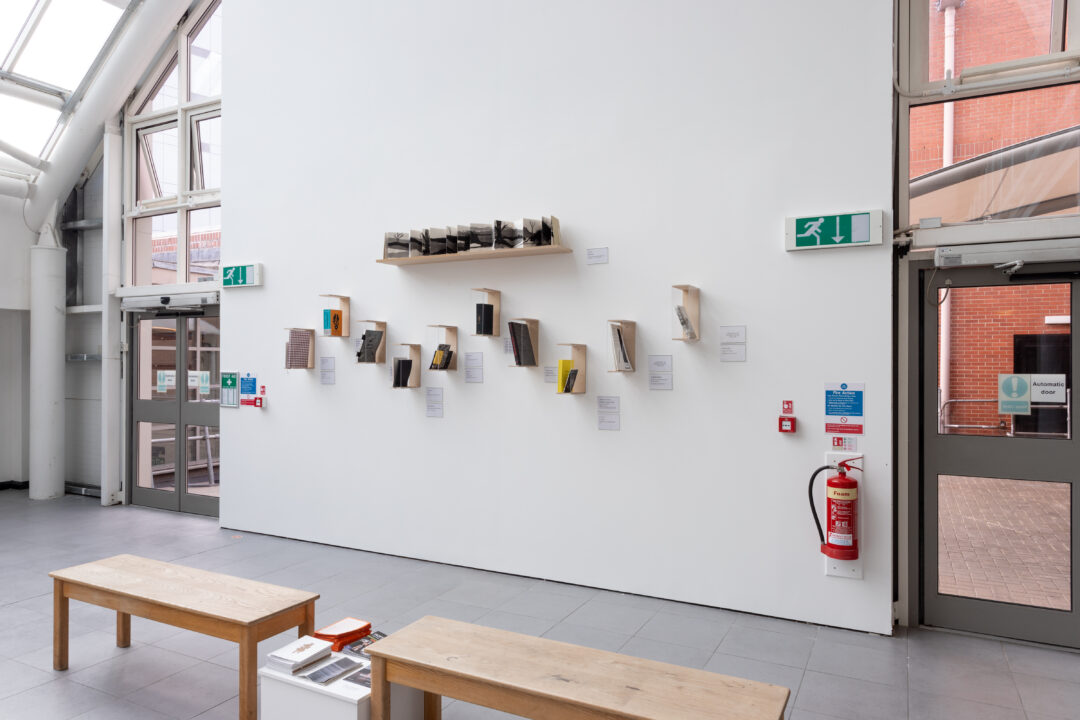
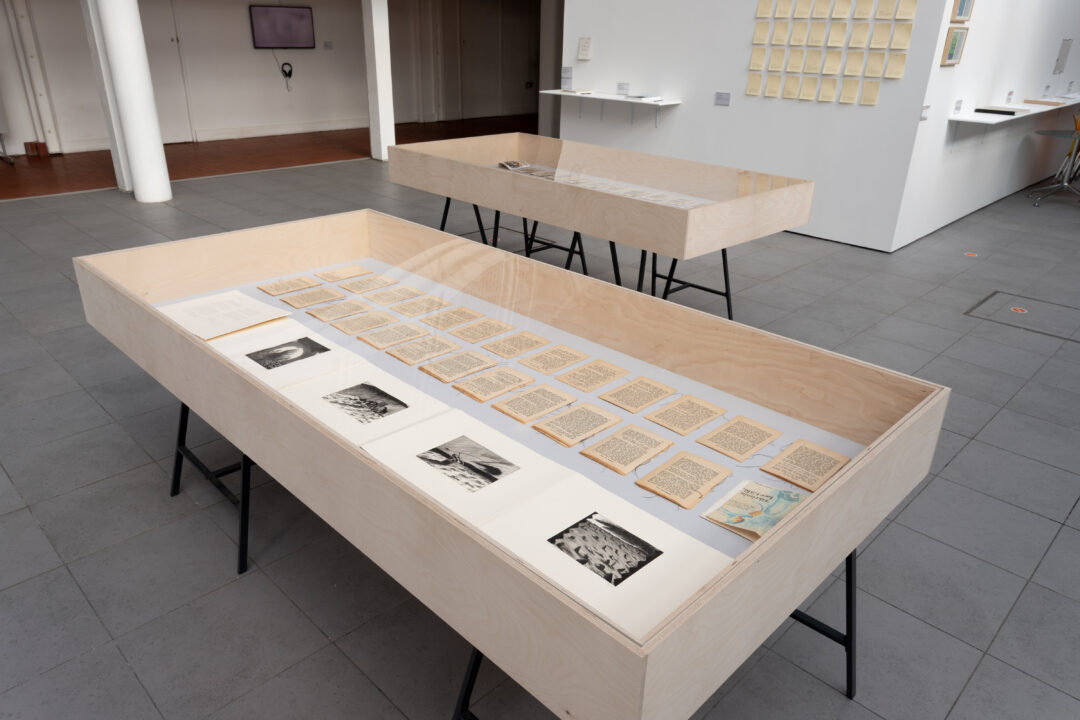
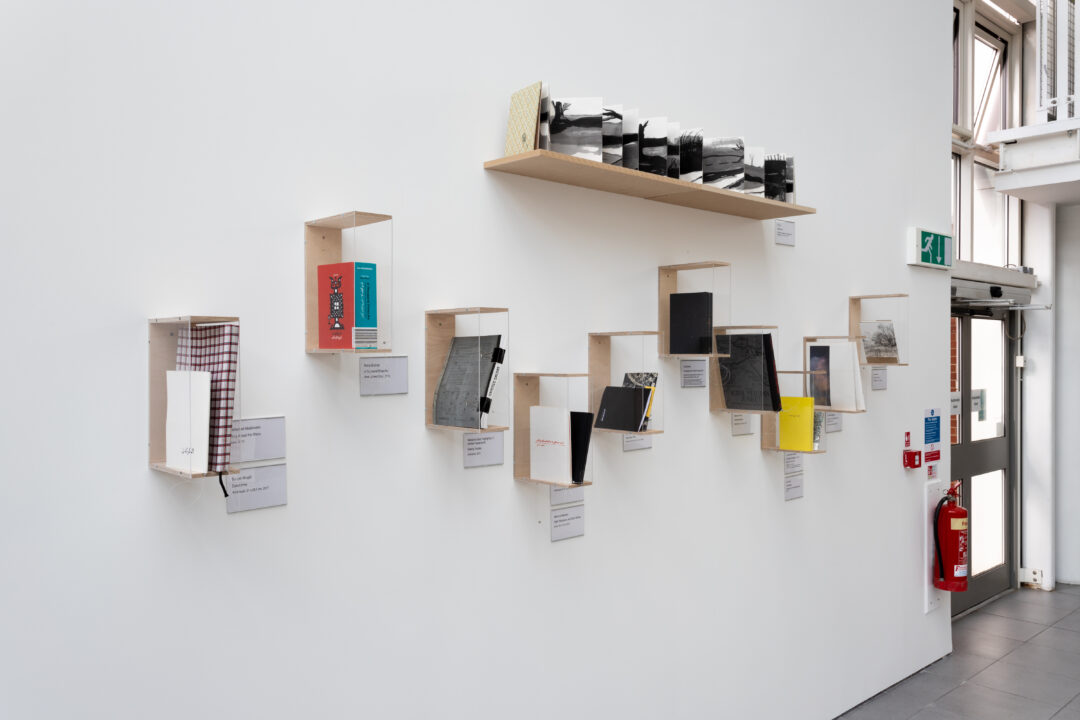
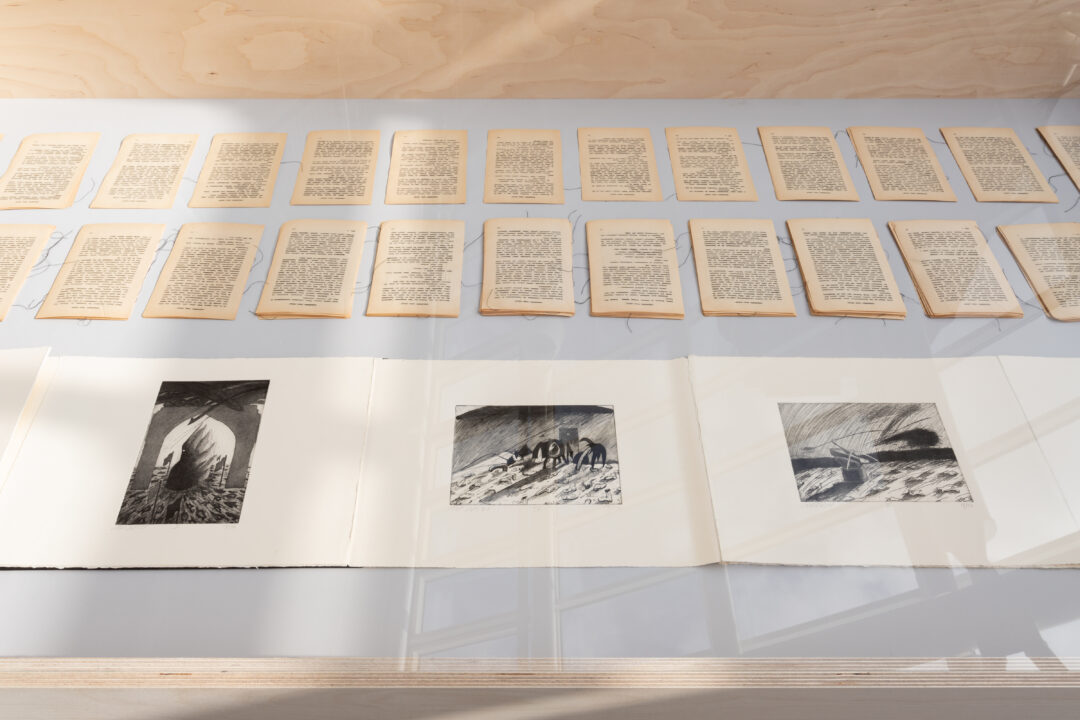
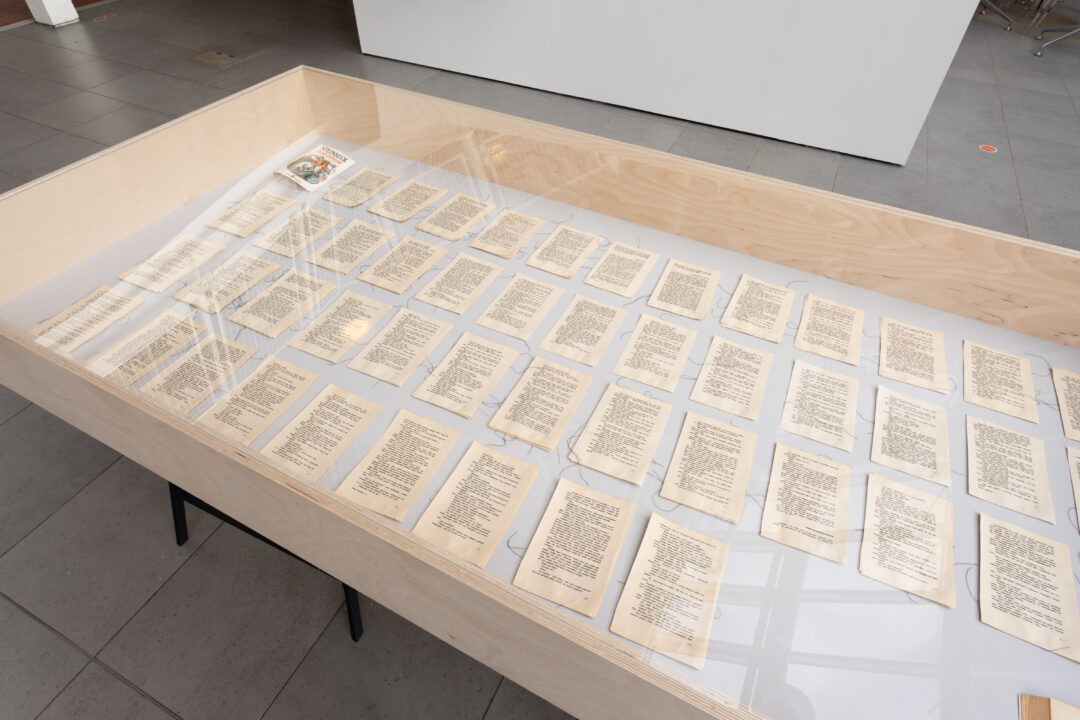
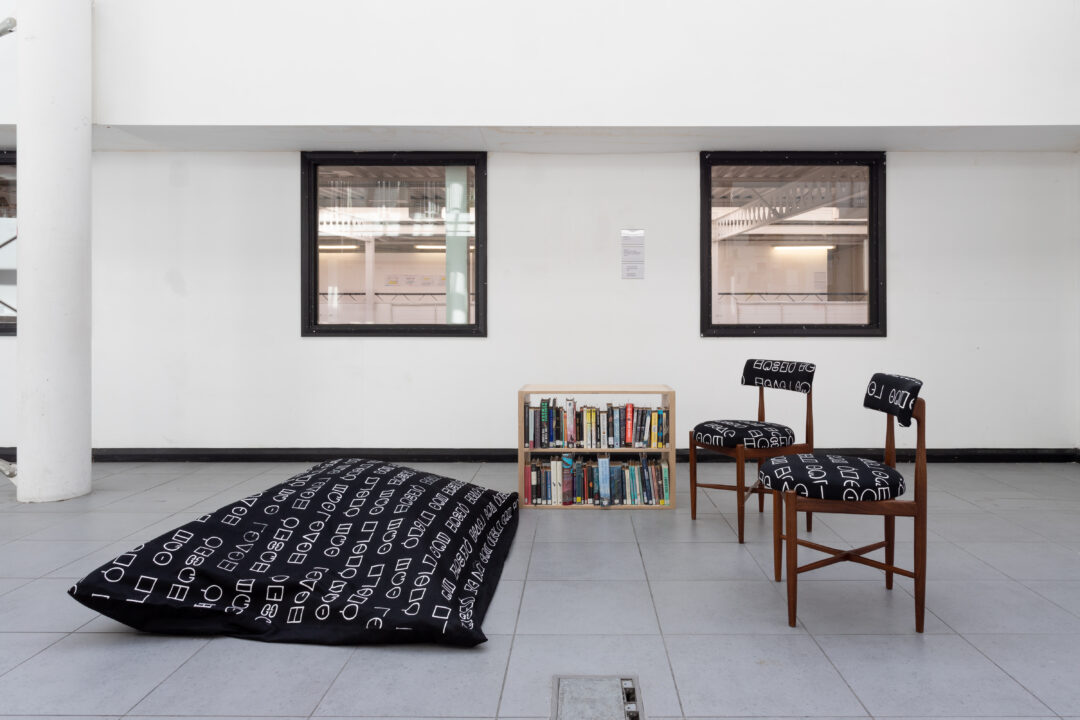
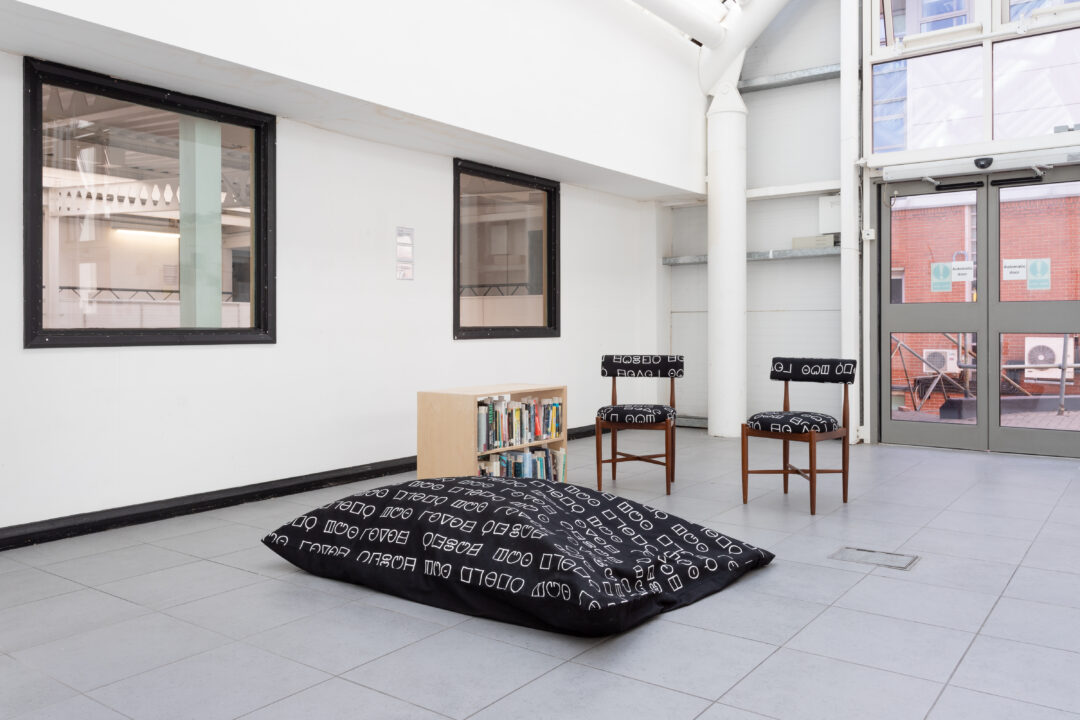
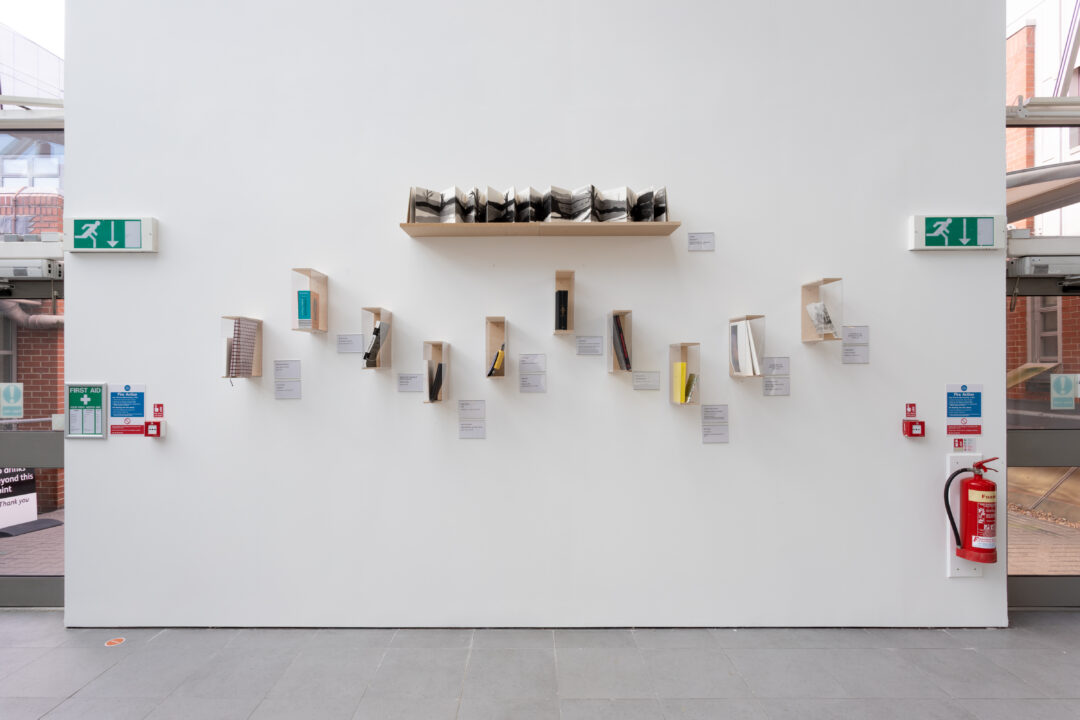
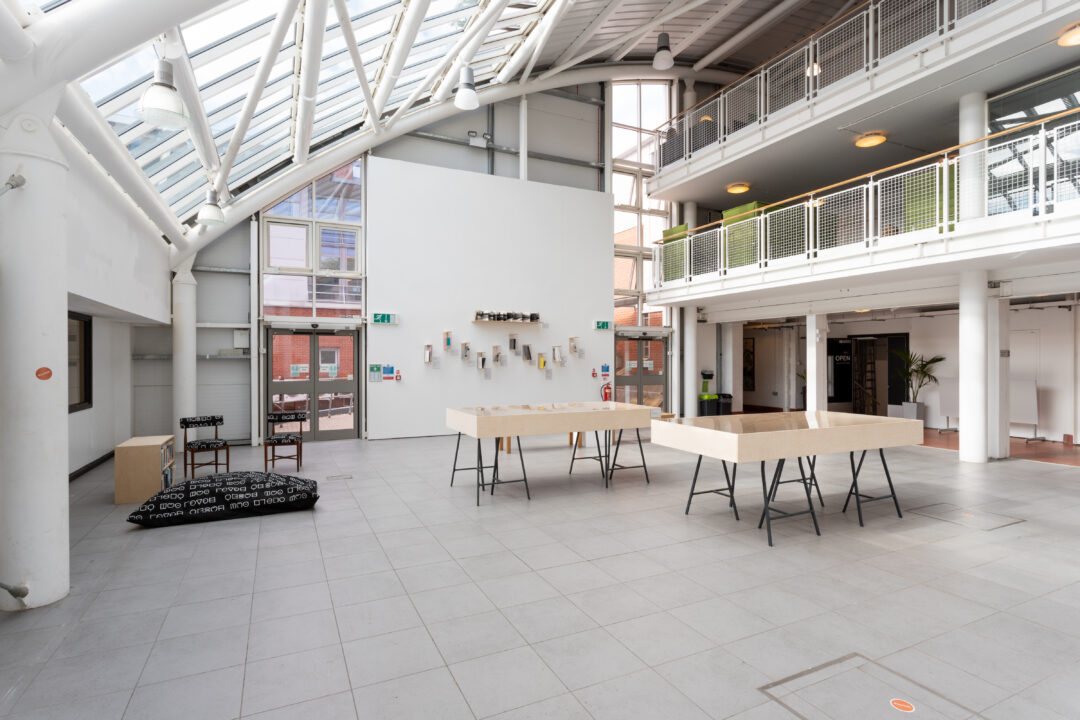
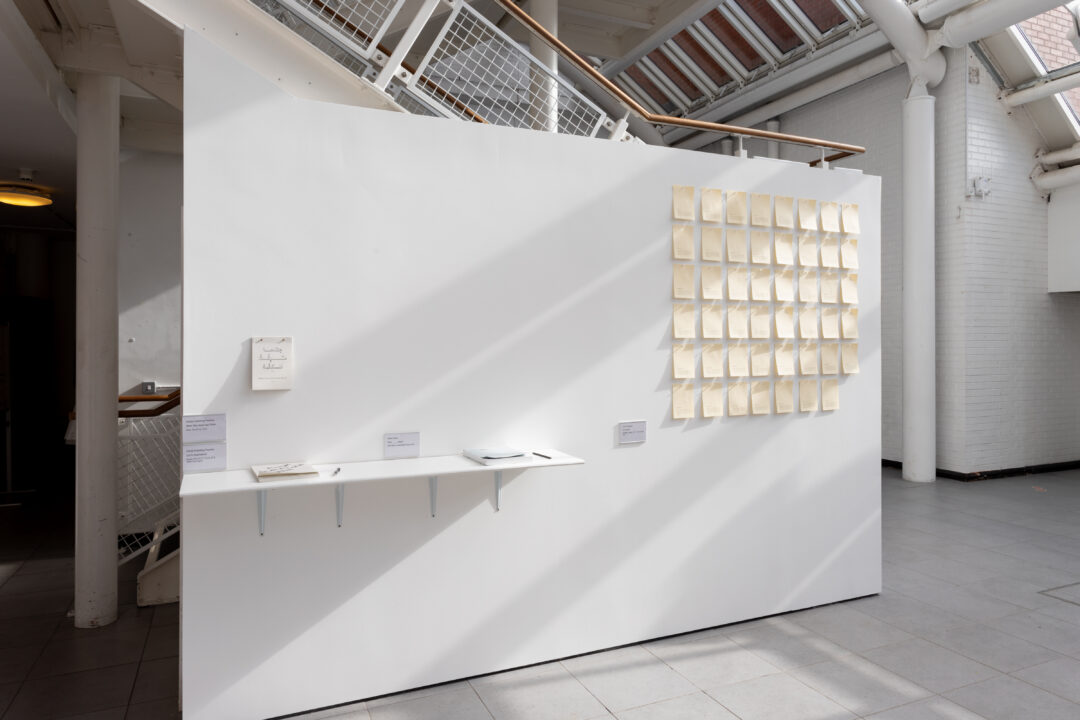
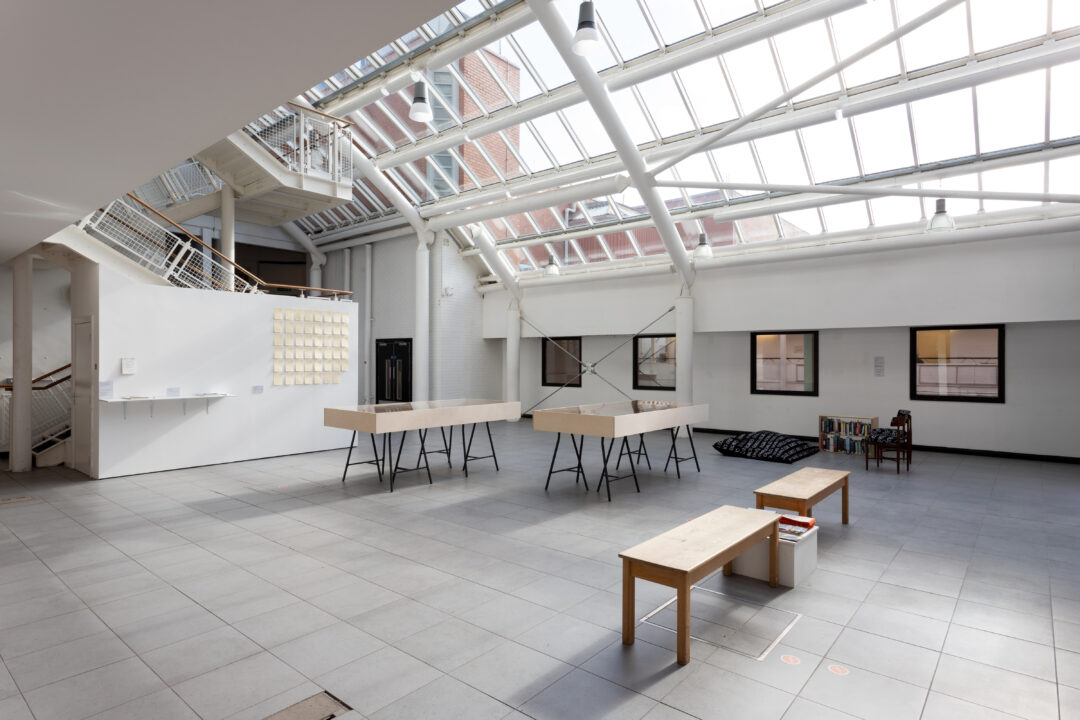
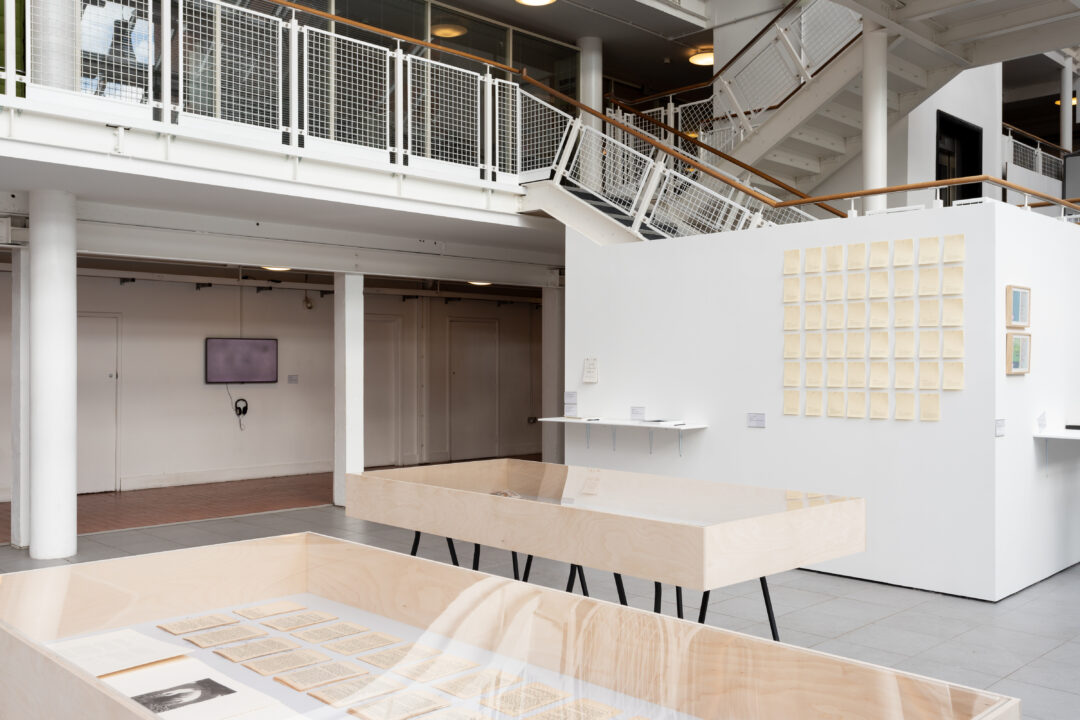
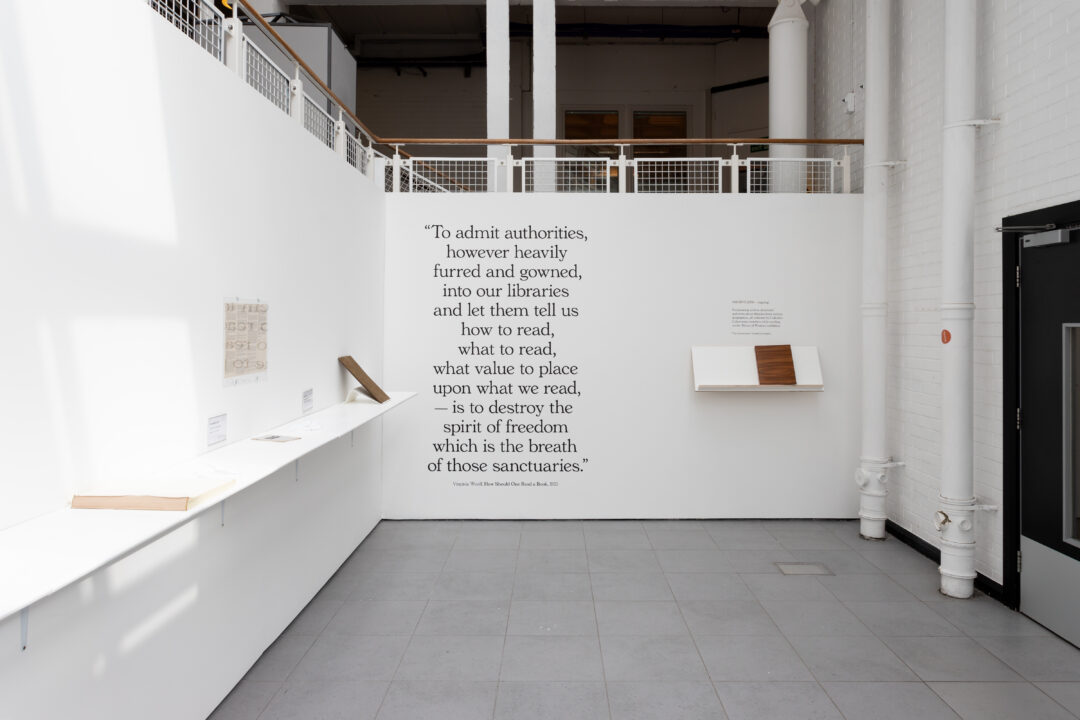
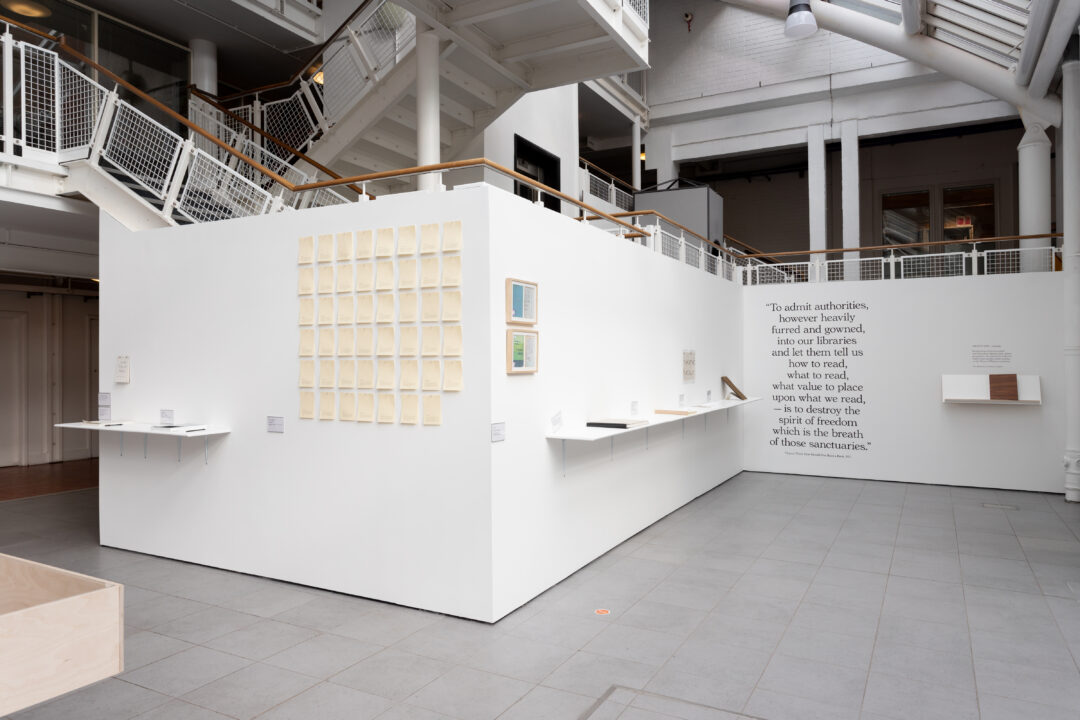
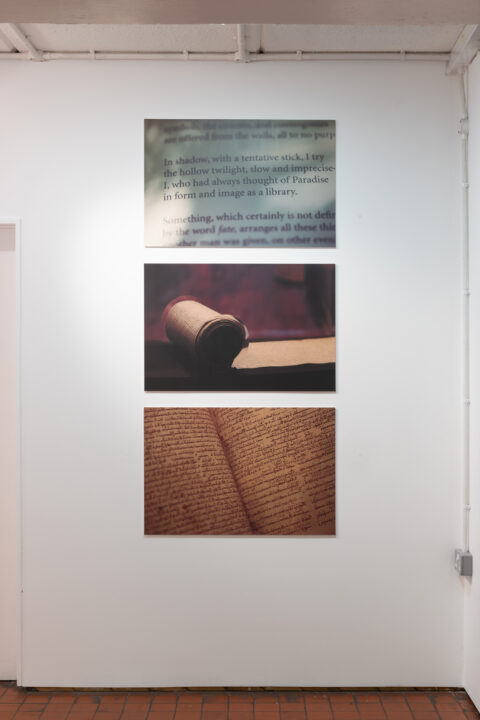
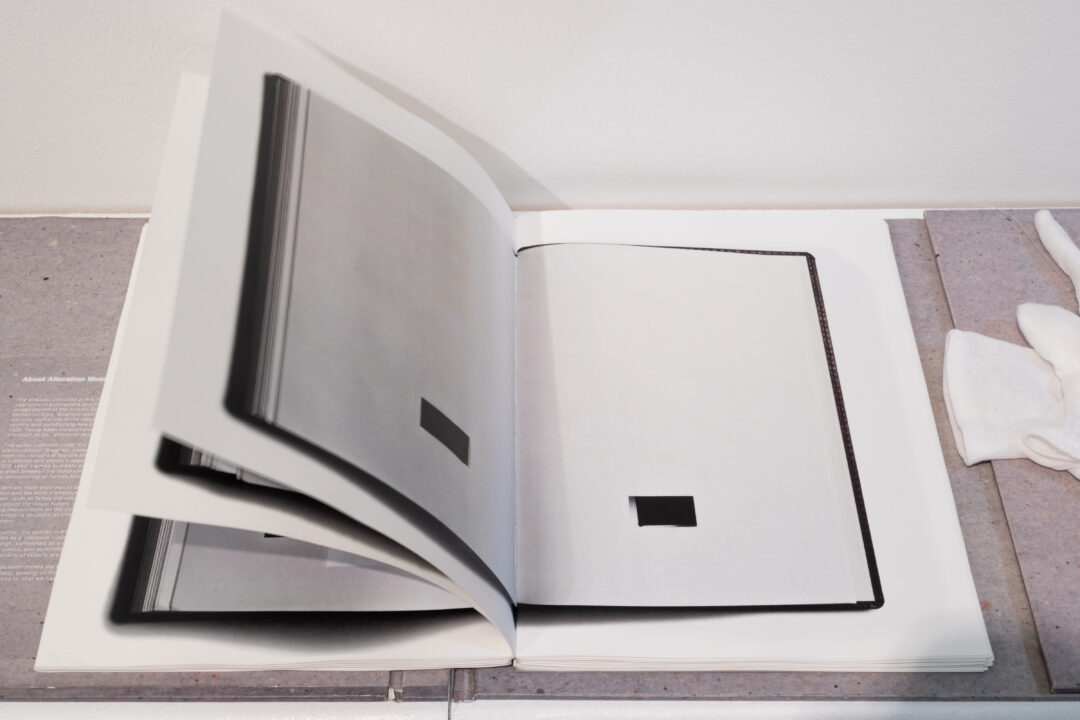
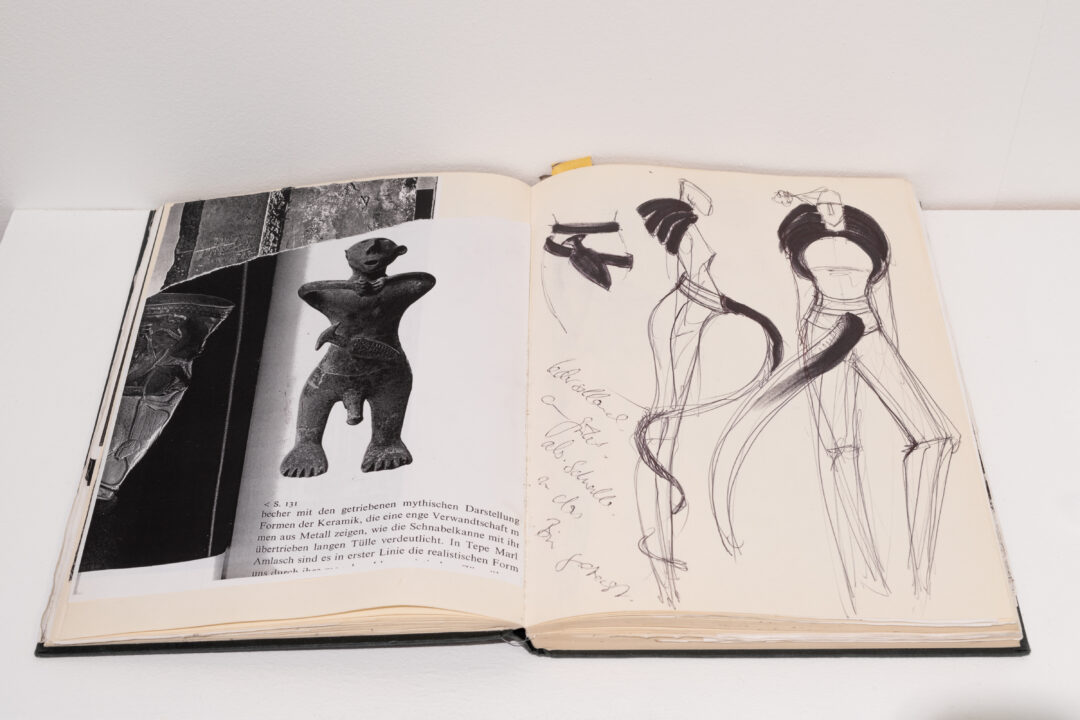
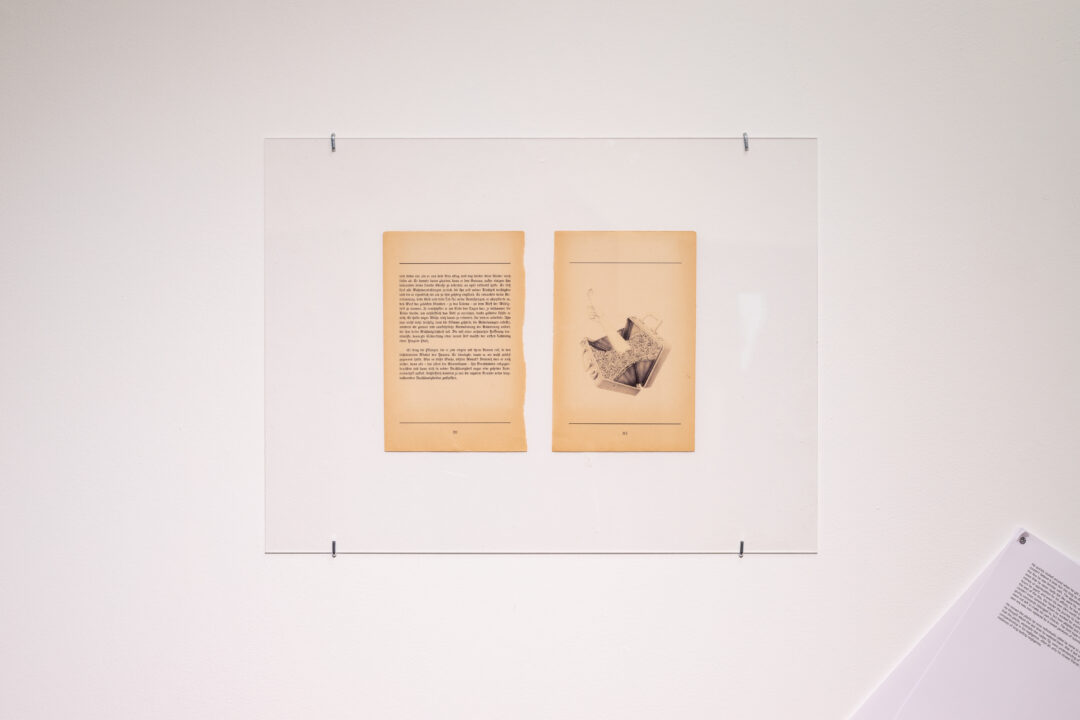
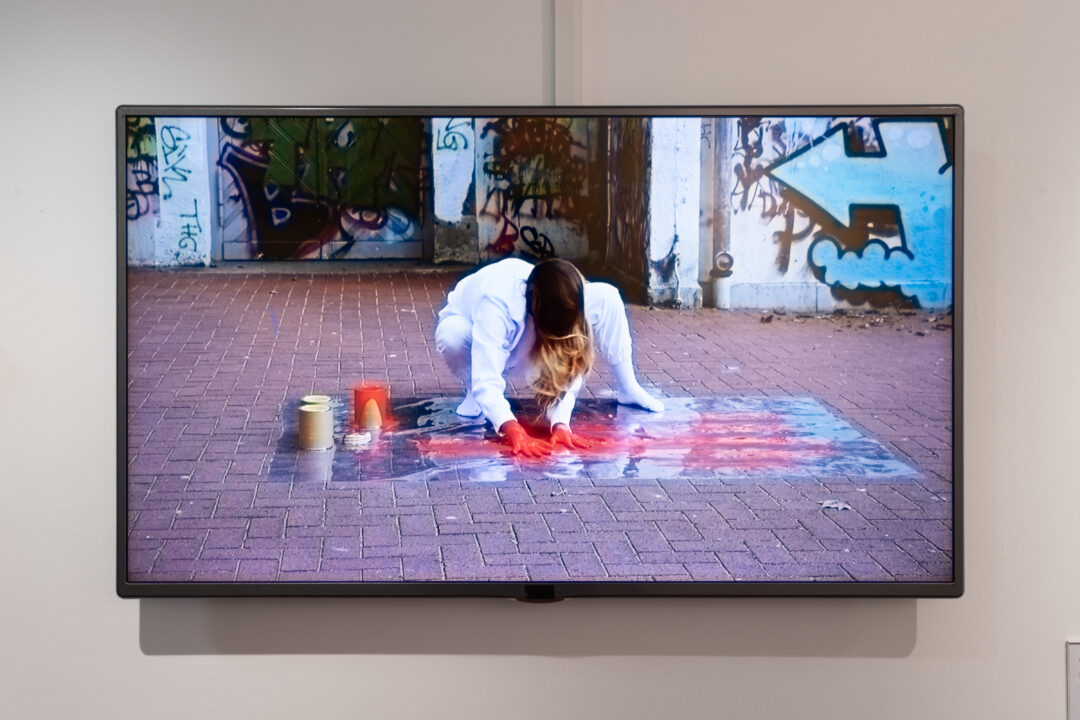
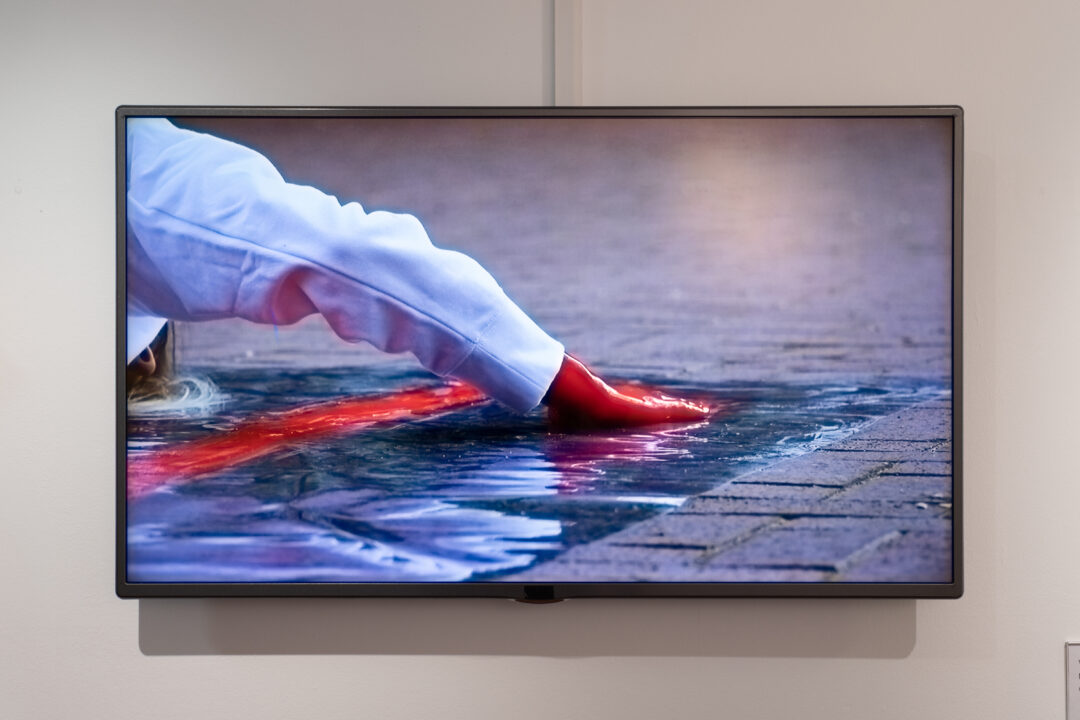
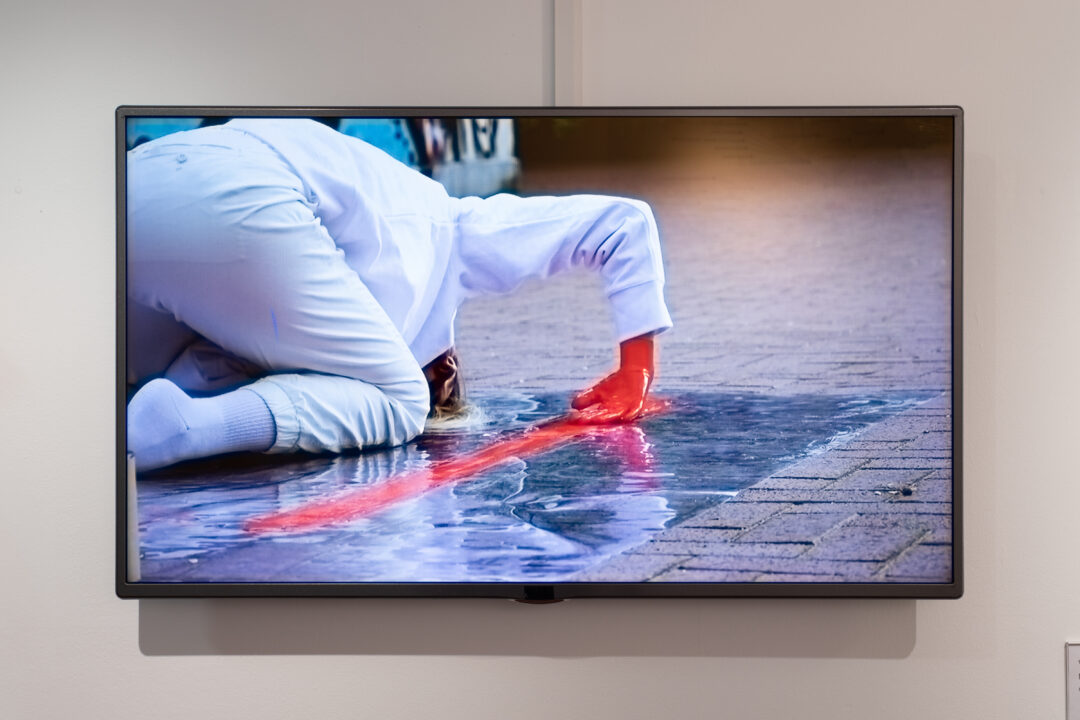
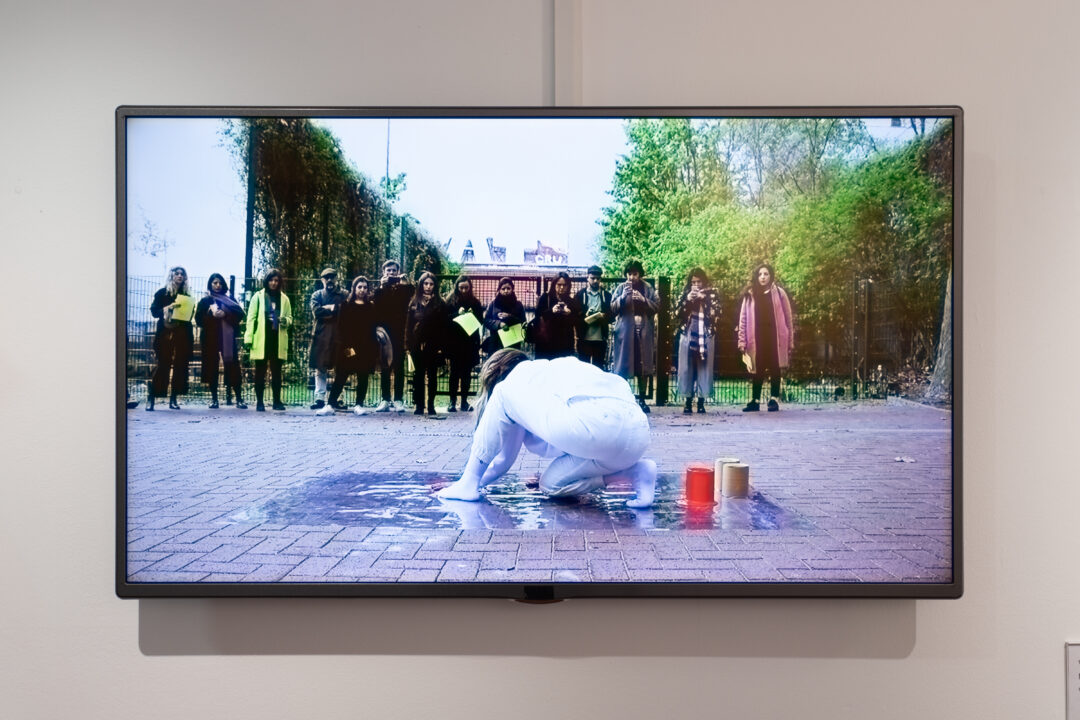
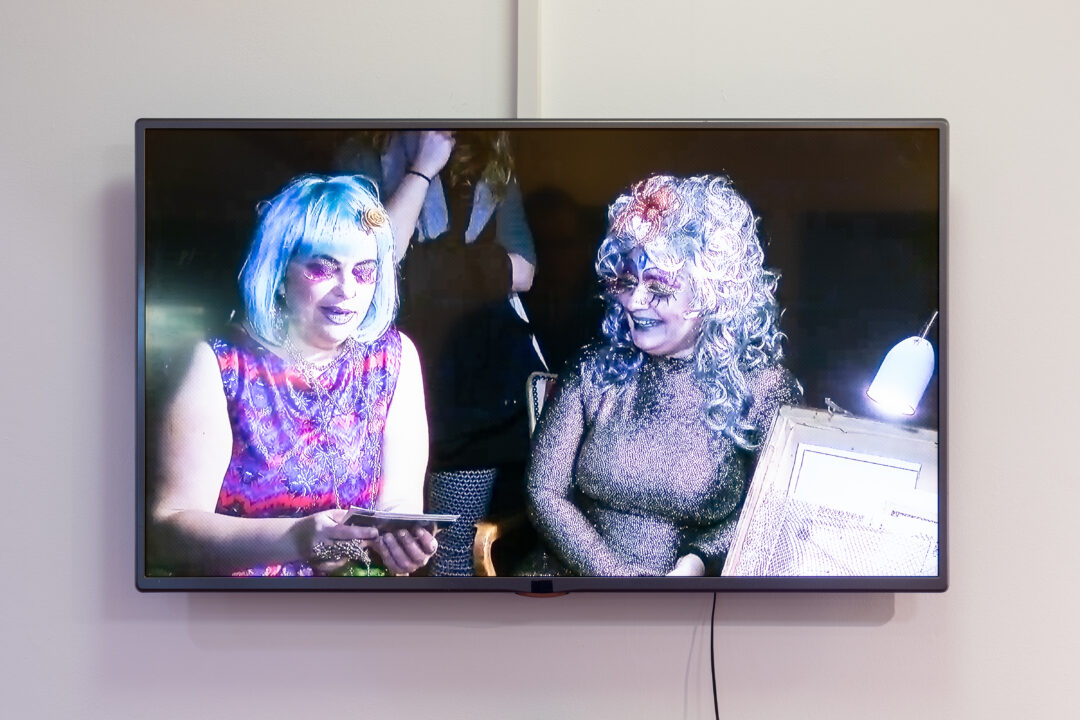
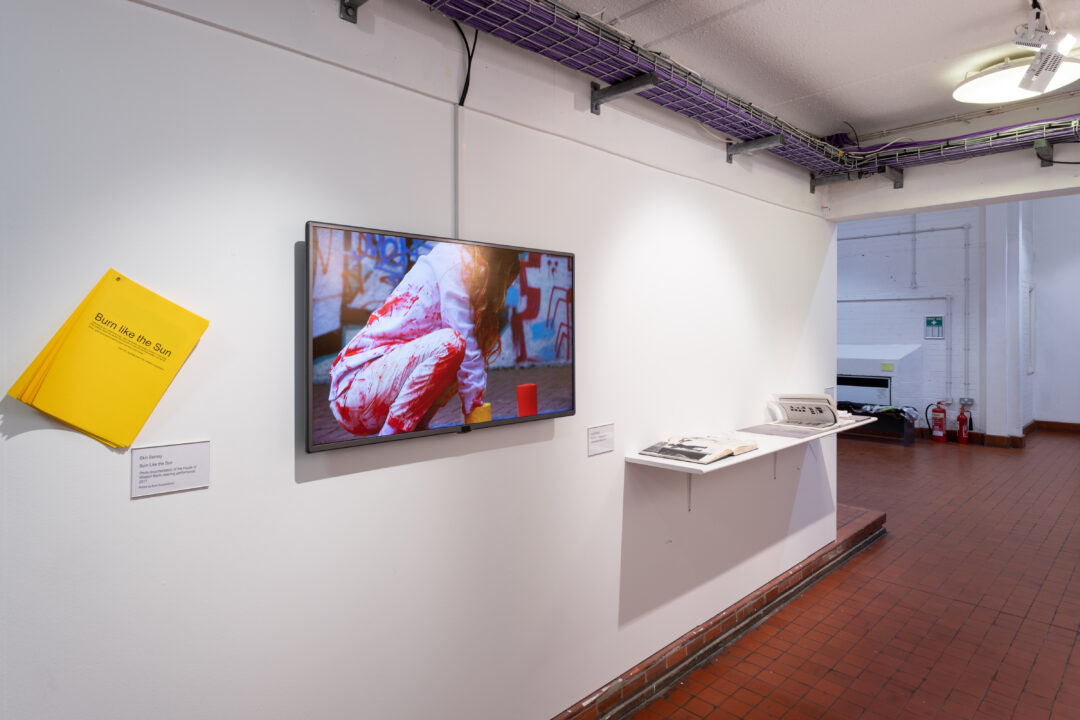
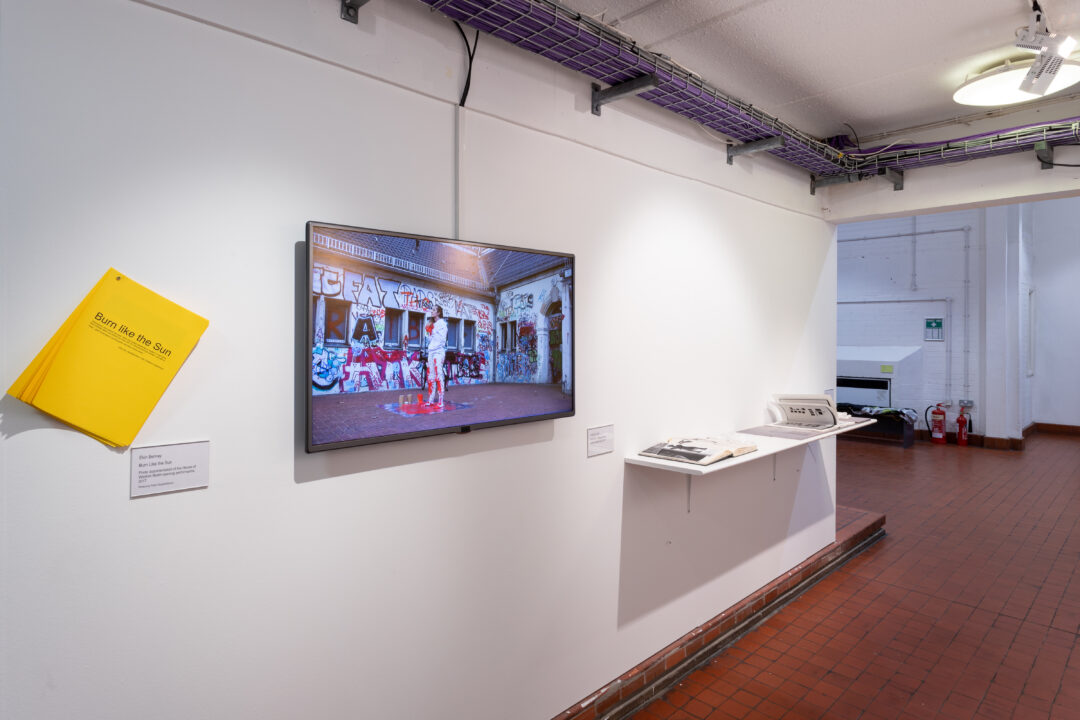
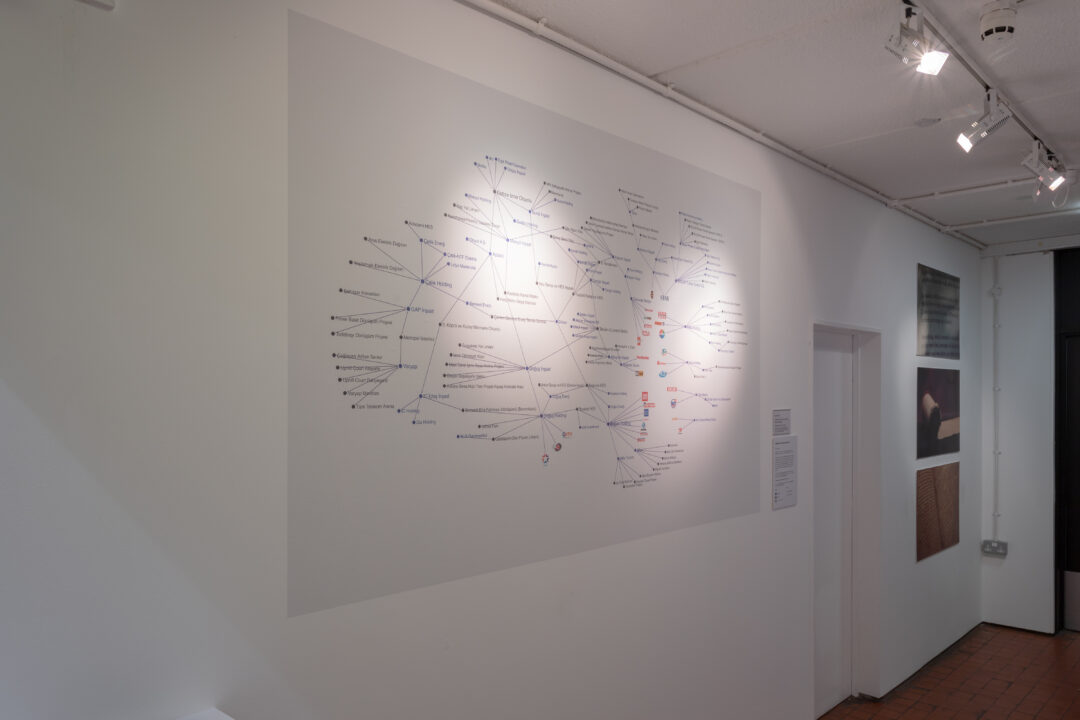
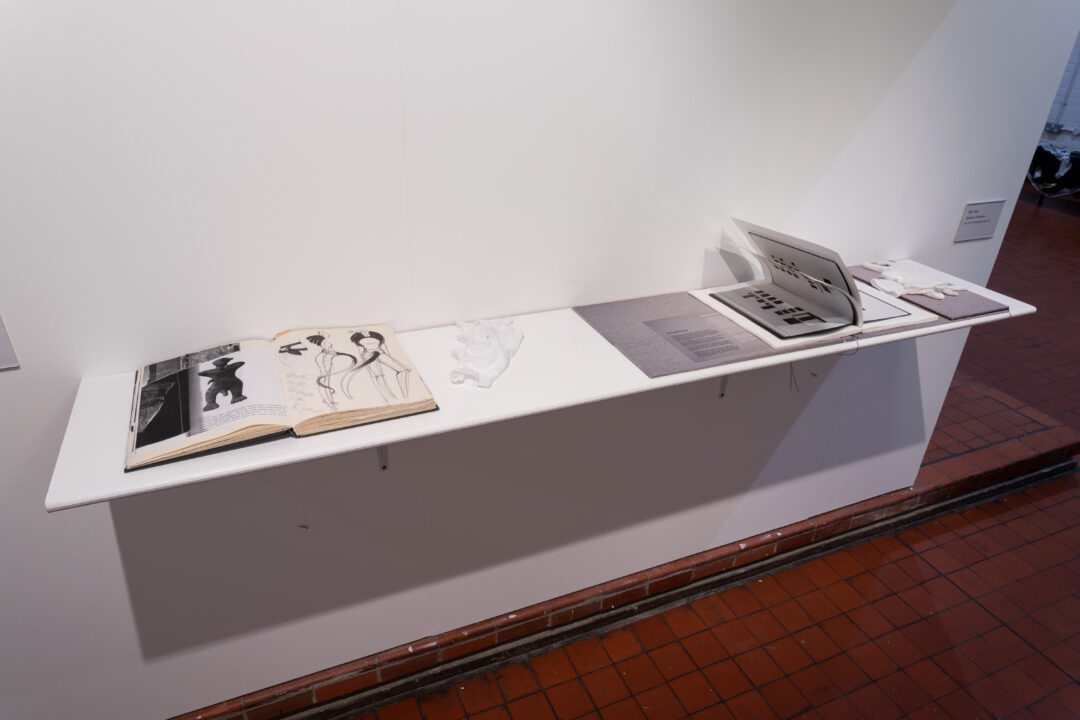
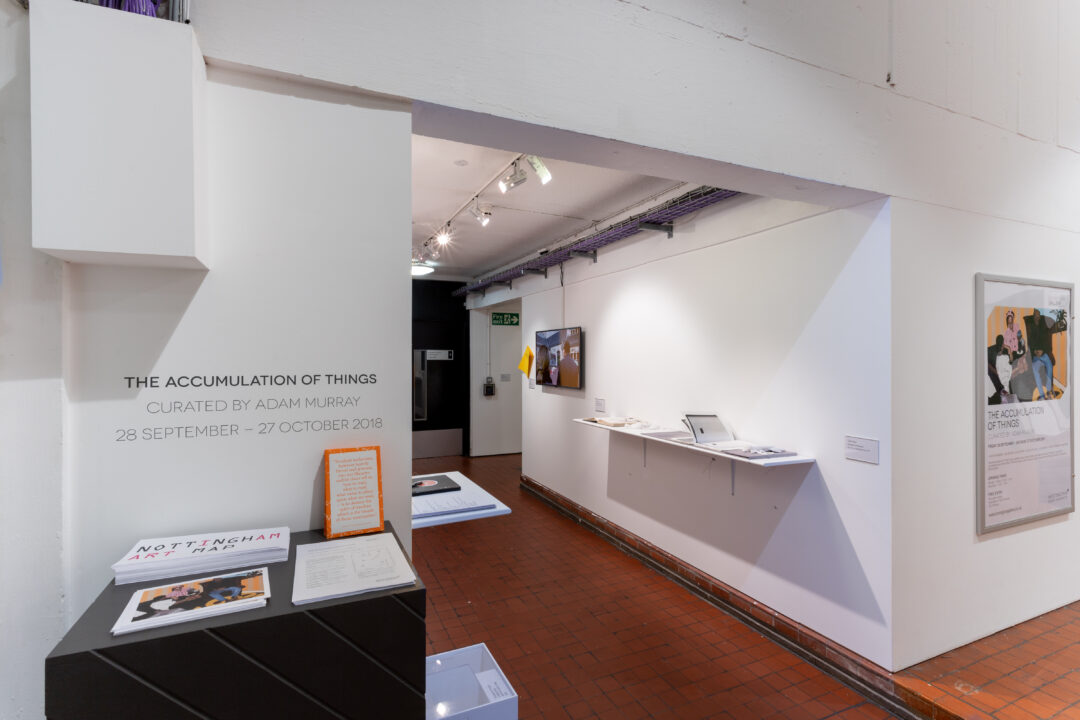
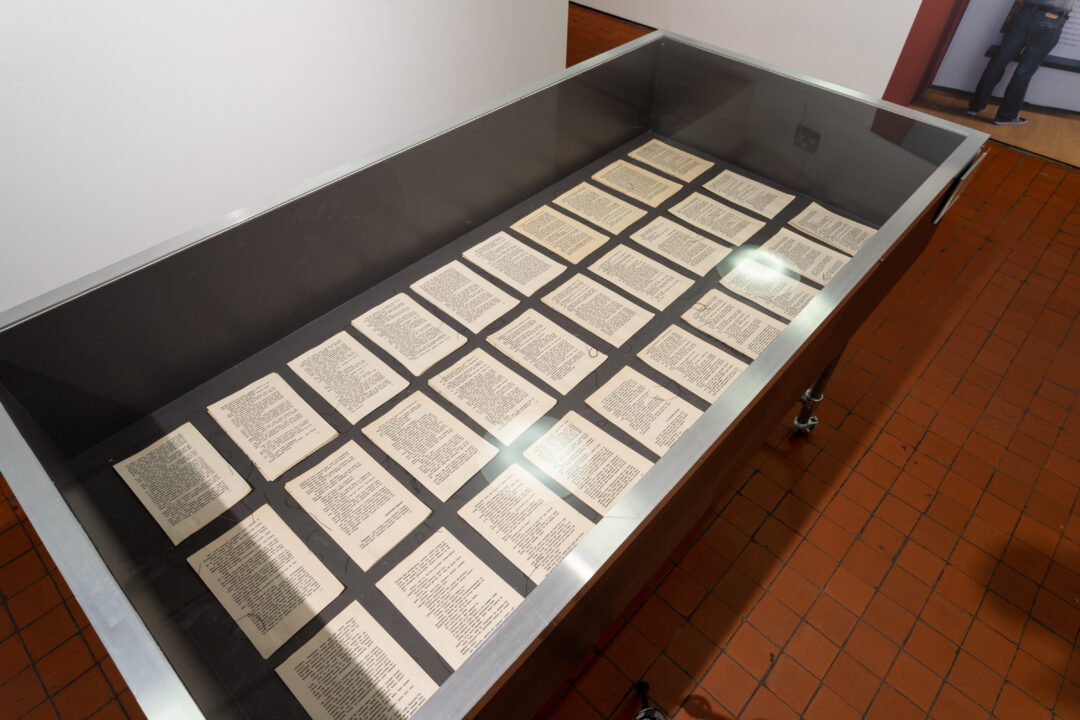
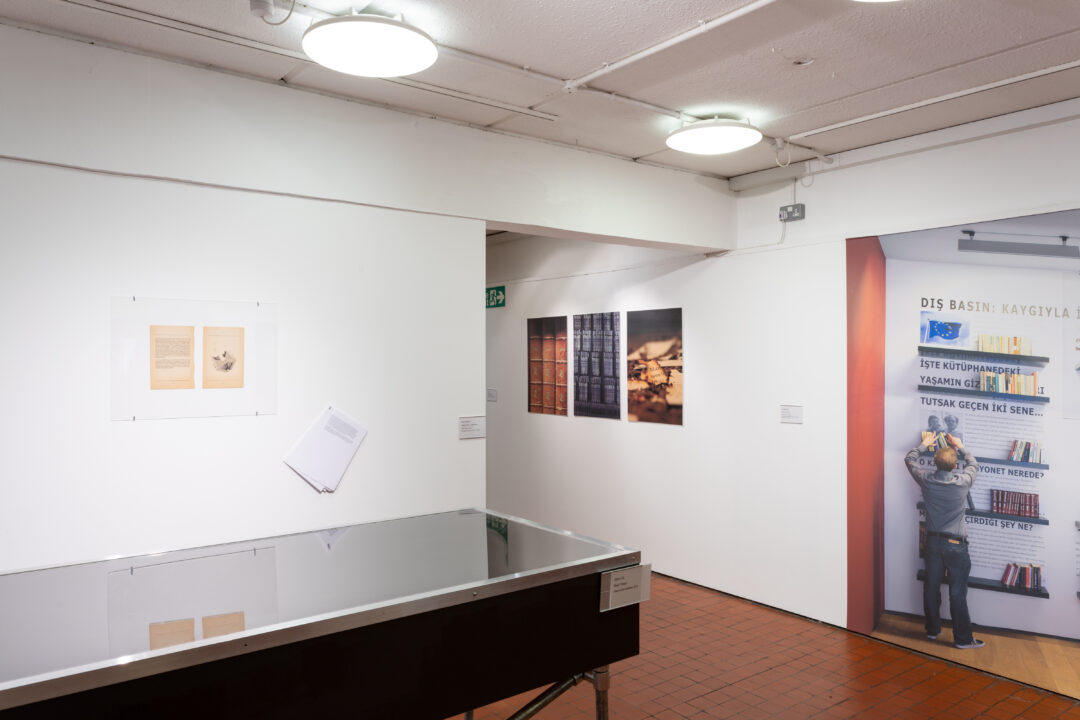
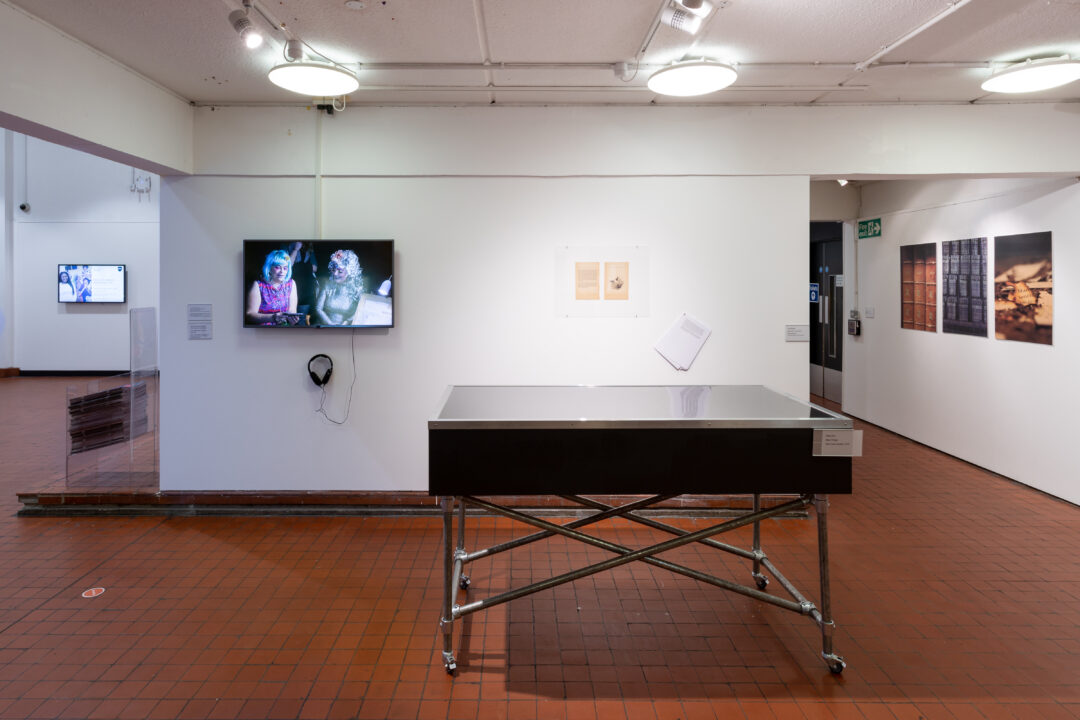
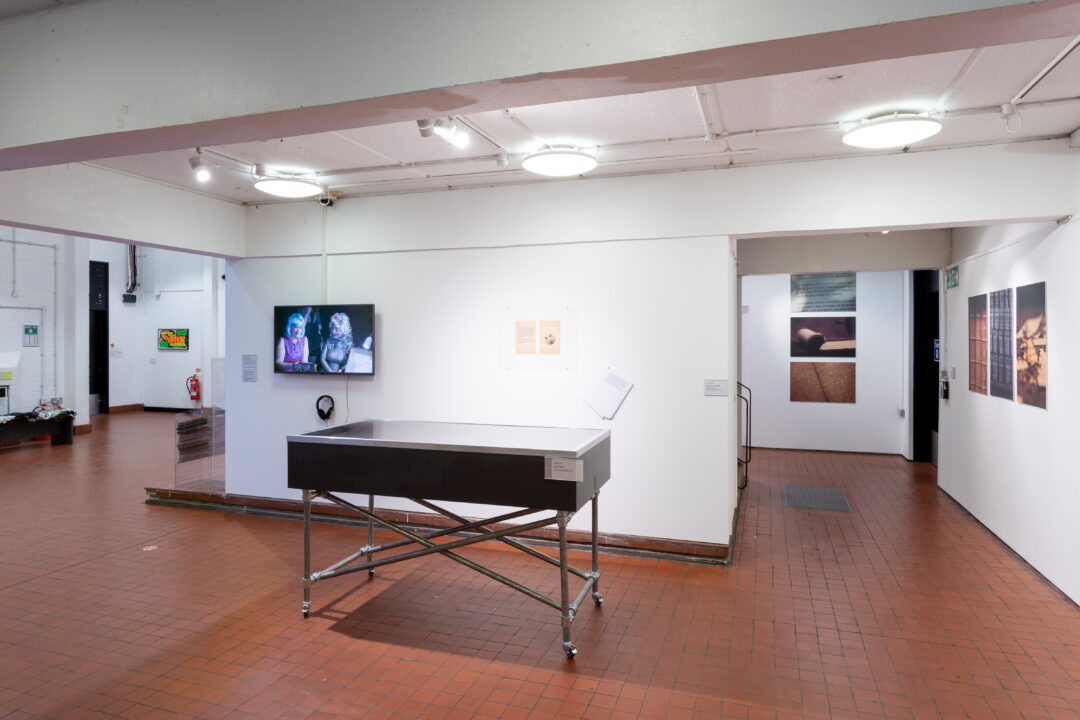
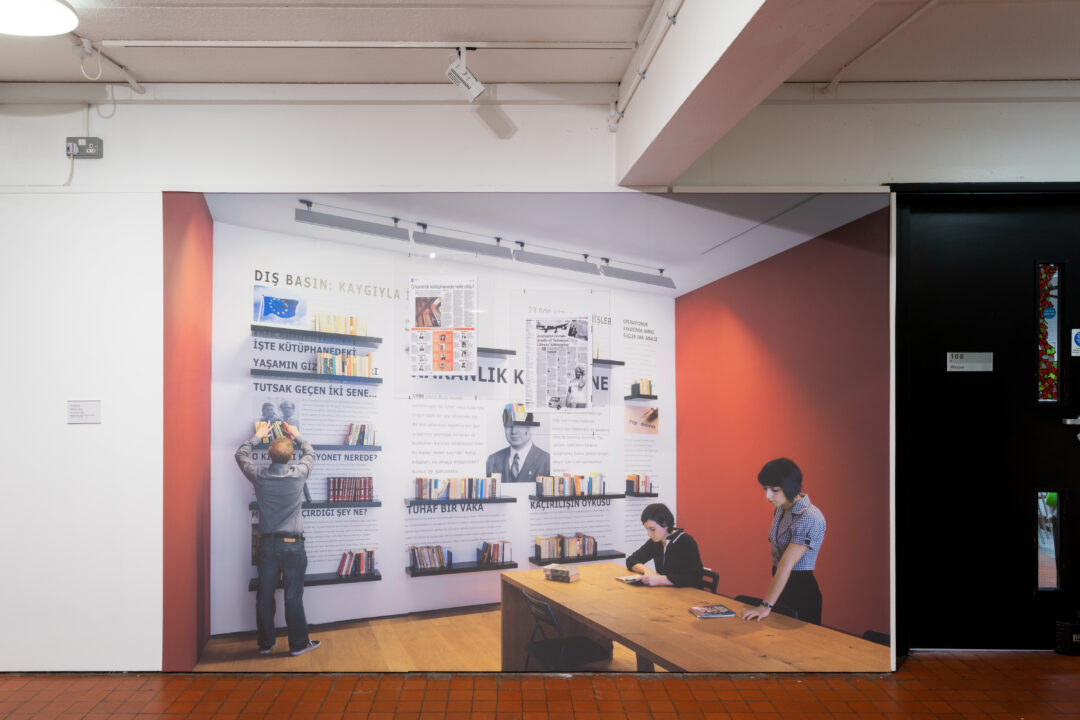
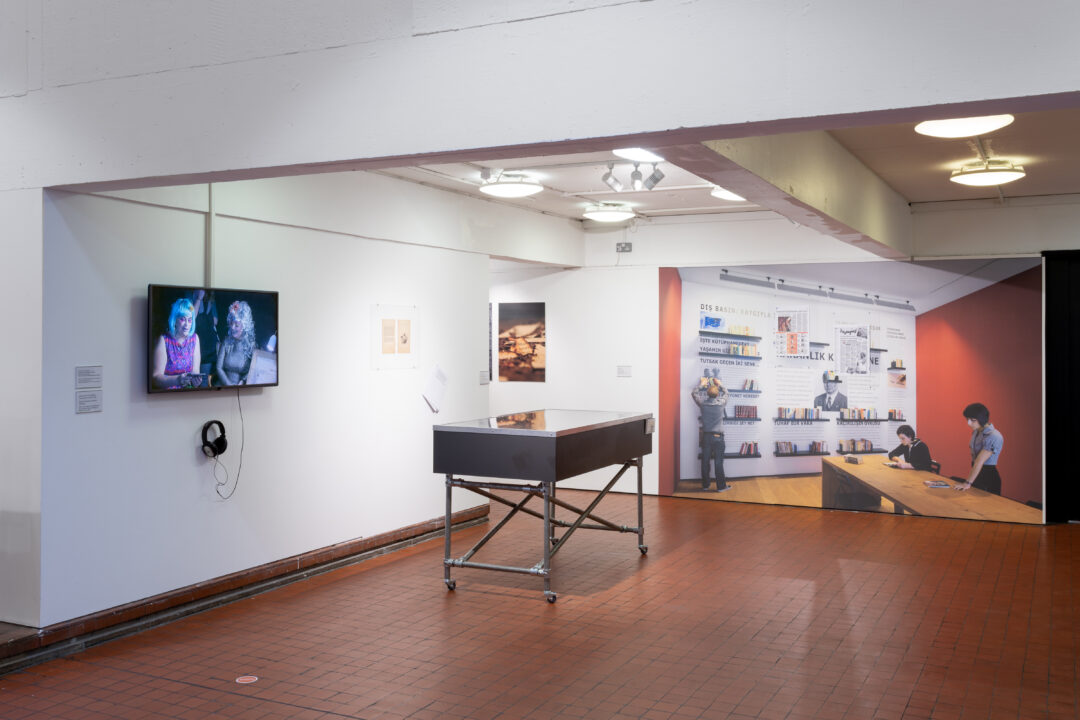
Original exhibition text:
Throughout centuries, libraries have been perceived as places where knowledge on life and space is organised, read, and interpreted, yet at certain times, their political significance are underestimated. Public libraries have been important symbols of political power and formation of cultural identity. They play a significant role in the political struggle for independence, as centres of democratic ideals, such as free access to cultural heritage and information. As public spaces, they are essential for bringing people together to share information, and they become even more important during times of collective resistance and protests for freedom.
Curated by the Istanbul-based Collective Çukurcuma, House of Wisdom explores the political power of books and libraries in our century, and is presented as a travelling exhibition/library that explores the increasing levels of censorship on information and the current sociopolitical situation in and around Turkey. It started its journey in the non-profit art space, Dzialdov, Berlin. The show moved to Istanbul as part of the 15th Istanbul Biennial’s public program, and then to the art space Framer Framed in Amsterdam, as part of the Amsterdam Art Weekend 2017 programme.
The exhibition and public programme of events now reside in Nottingham, with a panel discussion at Primary, in June 2018, followed by the exhibition here at Bonington Gallery and across the city, see public programme events (curated by Cüneyt Çakırlar) below for full details.
Artists include: Mohamed Abdelkarim, Burak Arıkan, Mahmoud Bakhshi, Yael Bartana, Mehtap Baydu, Kürşat Bayhan, Ruth Beale, Ekin Bernay, Burçak Bingöl, Nicky Broekhuysen, Hera Büyüktaşçıyan, Cansu Çakar, Ramesch Daha, Işıl Eğrikavuk, Didem Erk, Foundland Collective, Deniz Gül, Beril Gür, Lawrence Abu Hamdan, İstanbul Queer Art Collective (Tuna Erdem and Seda Ergül), Ali Kazma, Yazan Khalili, Göksu Kunak, Mona Kriegler, Fehras Publishing Practices, Elham Rokni, Natascha Sadr Haghighian & Ashkan Sepahvand, Sümer Sayın, Erinç Seymen, Bahia Shehab, Walid Siti, Ali Taptık, Erdem Taşdelen, Özge Topçu, Viron Erol Vert, Ali Yass, Eşref Yıldırım, Ala Younis
CURATED BY COLLECTIVE ÇUKURCUMA
House Of Wisdom was in collaboration with Queer Art Projects (London, UK), Bonington Gallery, Primary, Bromley House Library, Nottingham UNESCO City of Literature, and Five Leaves Bookshop.
Join us for the launch of our final exhibitions of the season: THROUGH A MIRROR, DARKLY – a film commission from Turner-Prize nominated artist Naeem Mohaiemen and the 30th instalment of our Vitrines featuring a collection of photography from Baltimore-based photographer John Dean.
THROUGH A MIRROR, DARKLY is a new three-channel film by Turner Prize nominated artist Naeem Mohaiemen. It explores memorialisation, protest, and political violence through the lens of events in May 1970, when American students protesting domestic racism and overseas wars were met by state violence.
As part of the 30th instalment of our Bonington Vitrines series, we’re delighted to present A Semester in Nottingham, 1976, an exhibition of photographs by Baltimore-based John Dean. Captured during his time as a visiting student to NTU in 1976, these photographs offer a powerful glimpse into Nottingham life during a transformative era.
Enjoy a free welcome drink, delicious food (first come, first served!) and music.
All welcome but reserve your free ticket to avoid disappointment.
Bonington Gallery is delighted to announce layt de kam, a newly commissioned body of film and textile work by multi-disciplinary artist Ibiye Camp, exploring the complex interplay between infrastructure, care, and resilience along the coast of West Africa.
At the heart of the exhibition is a critical reflection on the deployment of temporary power ships off the coasts of various West African cities — an intervention intended to address unstable energy infrastructures and shortages. The title, layt de kam (translated as “light is coming”), evokes both hope and uncertainty, highlighting the precarity of such power solutions while celebrating the enduring strength of coastal communities.
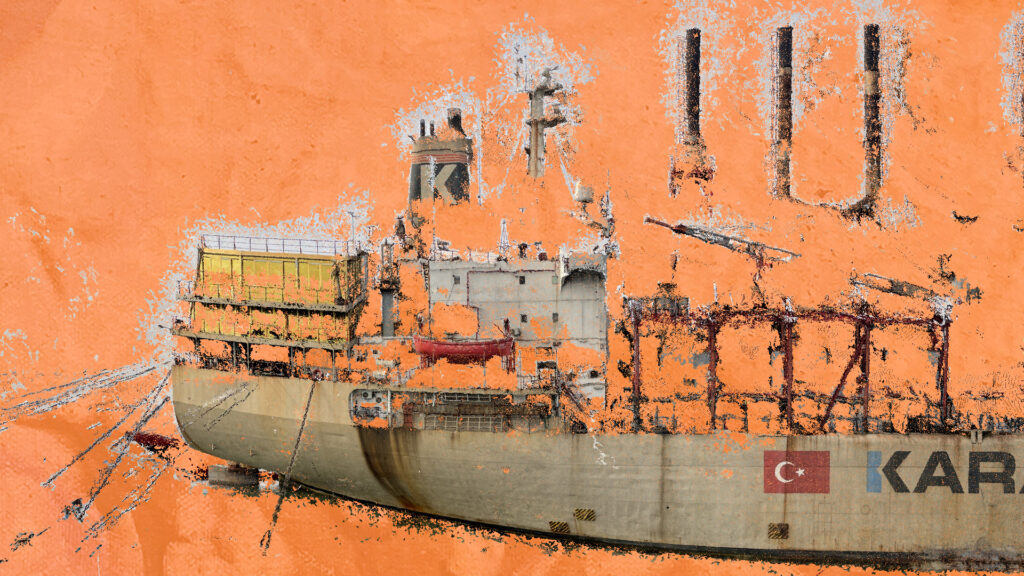
Combining spatial intervention, film and textiles, the exhibition will examine how brutalist infrastructure looms ominously over the intimate and everyday life on the shore. Central to the exhibition is a new film, GLOW, a speculative child’s tale that imagines the arrival of this foreign visitor who brings light. Created using point cloud reconstructions, the trace of the landscape is dependent on illumination, shadows and reflections to create the shapes and forms.
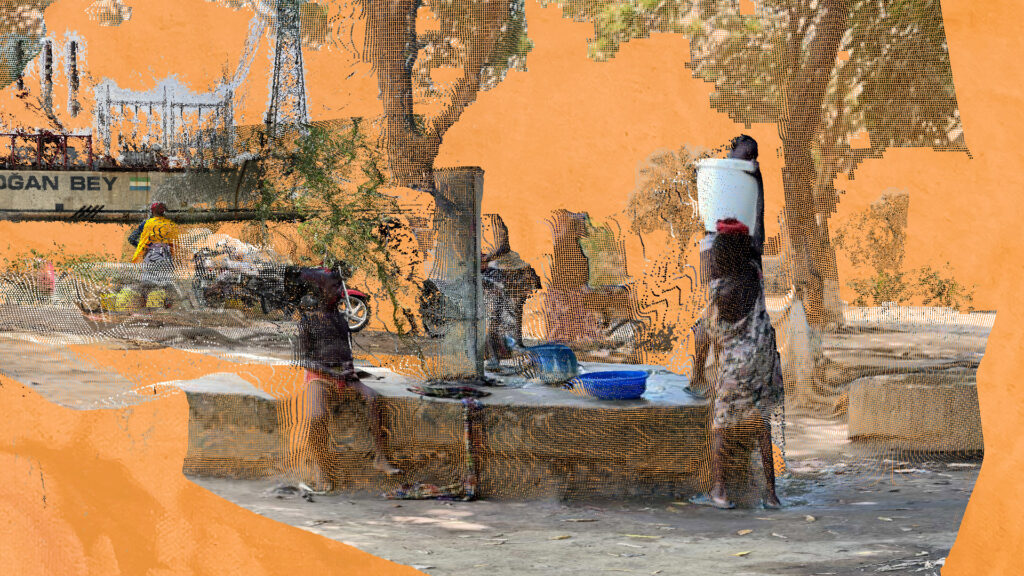
Camp further translates these digital landscapes into tactile form by laser-cutting point cloud stills into Kola Nut-dyed fabric. This process embeds the digital with the material, using concentrated light to cut cloth traditionally used by mothers to wrap their children—an enduring symbol of care and ancestral knowledge.
layt de kam further interrogates the broader geopolitical implications of temporary power infrastructures. Shaped by deregulation, privatisation, and conflict, these systems often reinforce global dependencies rather than fostering self-sufficiency. Drawing on theorist Keller Easterling’s concept of “extrastatecraft,” Camp reveals how non-state actors influence through infrastructure, turning energy access into a site of control.
By transforming disrupted landscapes into material memory, layt de kam offers a powerful narrative of resistance, care, and the entanglement of light, technology, and power.
Sound artist FAUZIA has made the soundtrack to Ibiye’s film GLOW.
Ibiye holds an MA in Architecture from the Royal College of Art, and BA (Hons) in Fine Art, from the University of the Arts London, Central Saint Martins. Ibiye’s Thesis project titled Data: The New Black Gold was awarded the School of Architectures Dean’s Prize and was nominated for the RIBA Silver Medal Award.
Ibiye has presented her work at The Sharjah Architecture Triennial titled Rights of Future Generations in 2019 and Triennale Milano The State of the Art of Architecture conference in 2020. She showed in the Istanbul Biennial titled Empathy Revisited in 2020, and MAAT – Museum of Art, Architecture and Technology’s exhibition titled X is Not a Small Country in 2021 and the 13th Shanghai Biennale titled Bodies of Water in 2021, and London’s Art Festival, Deptford X in 2022. In 2023 Ibiye was included in the Venice Architectural Biennial within the group exhibition Guests from the Future, and in 2024, was included in Unseen Guests, a project organized by Iniva as part of the British Pavilion’s public programme at the 60th Venice Biennial.
Ibiye Camp, Rhiarna Dhaliwal and Emmy Bacharach run a BA Studio titled Digital Native at the Design Academy Eindhoven.
Bonington Gallery is delighted to present To Farse All Things, a two-person exhibition by William English and Sandra Cross, bringing together film, photography, sculpture, sound, and archival material formed independently and collaboratively over several decades.
To Farse All Things offers a rare opportunity to explore the intertwined lives and practices of two artists whose work resists categorisation. Through a shared and uncompromising commitment to experimentation, hospitality, and social engagement, English and Cross have cultivated a body of work that is as generous as it is radical. Their ten-year project, The Dining Room, can be seen as a living piece of performance art—emblematic of their broader practice which questions the boundaries between roles and purpose of cultural space. The lines between cast & audience, host & guest, artist & participant are constantly shifting and being shifted.
William English (b. Leicester) moved to London in the early 1970s to study filmmaking. In 1975, he produced a now-iconic series of photographs of Vivienne Westwood in her and Malcolm McLaren’s seminal punk boutique, SEX. The series, Venus with a Severed Leg, has become synonymous with the era, with writer Paul Gorman describing it as “the holy grail of punk photographs.”
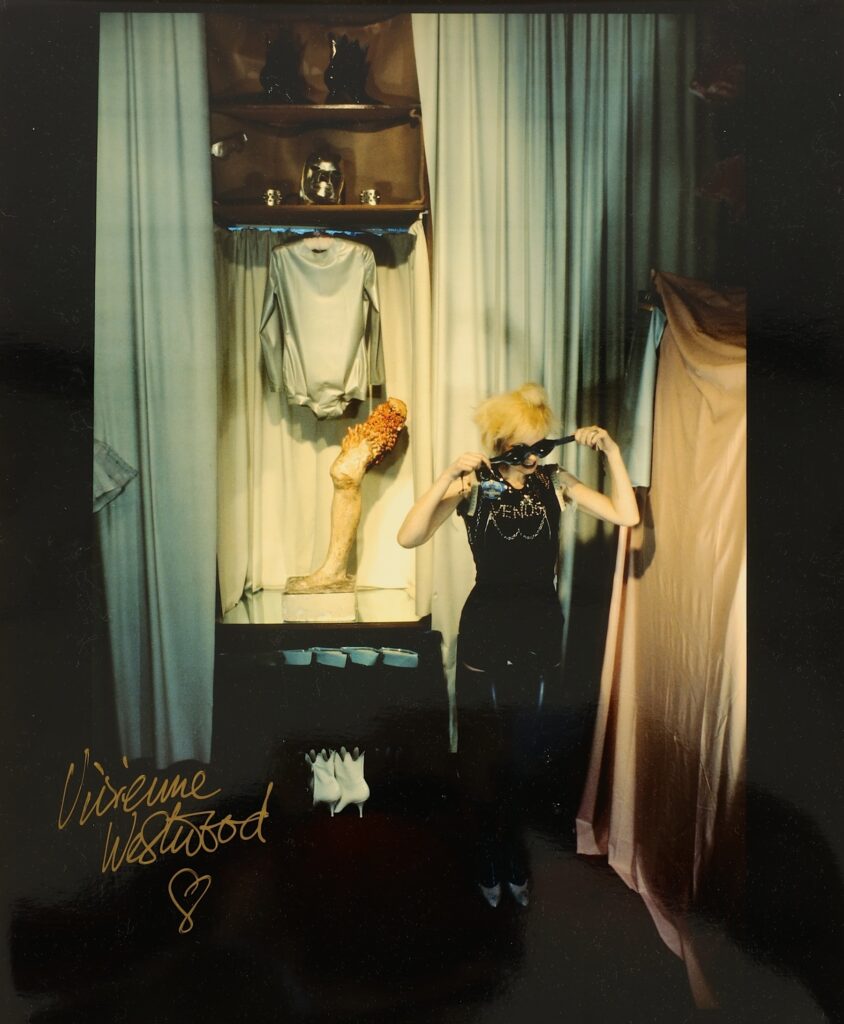
Sandra Cross (b. Northamptonshire) began her career as a copywriter before relocating to London in the mid-1970s, where she worked for a number of prominent literary agencies and publishers. Her professional life introduced her to a network of West End eateries, sparking a deep and lasting interest in food as both a social and cultural medium. She began hosting suppers at home for friends and acquaintances, laying the foundation for a lifelong exploration of food as an intersection for connection, memory, and artistic expression.
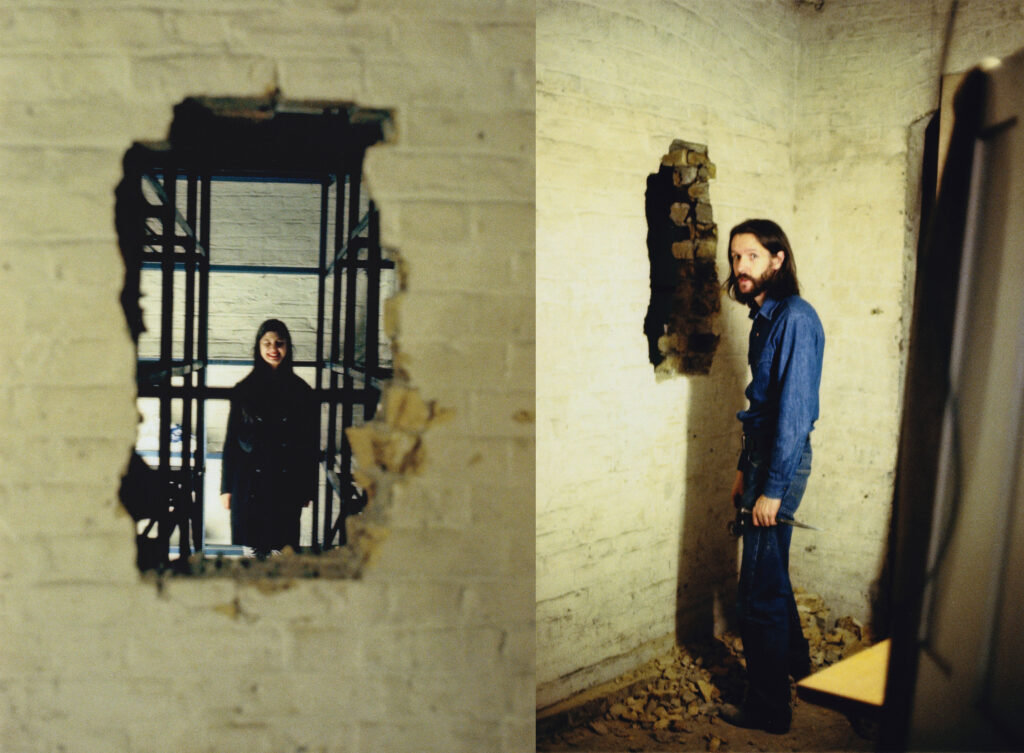
The pair met in the late 1970s and soon embarked on a shared project that would channel their shared interests and become a defining period in their collaborative practice. Motivated by a shared excitement for hosting and an interest in organic and whole foods (progressive for that period), they pooled their limited resources to renovate the basement of a Victorian building near London’s Borough Market. The result was The Dining Room—a groundbreaking vegetarian restaurant (though they resisted the label) that operated for a decade. Serving dishes such as Kasha Knish amongst a programme of exhibitions, screenings, book launches, and gigs, The Dining Room was more than a restaurant. Its ethos was radically inclusive: customers ranged from Shakespeare’s Globe founder Sam Wanamaker and underground filmmaker Kenneth Anger to nurses finishing late shifts at nearby Guy’s Hospital. Staff were often friends who may have struggled to find work elsewhere, and leftover food was regularly shared with those in need.
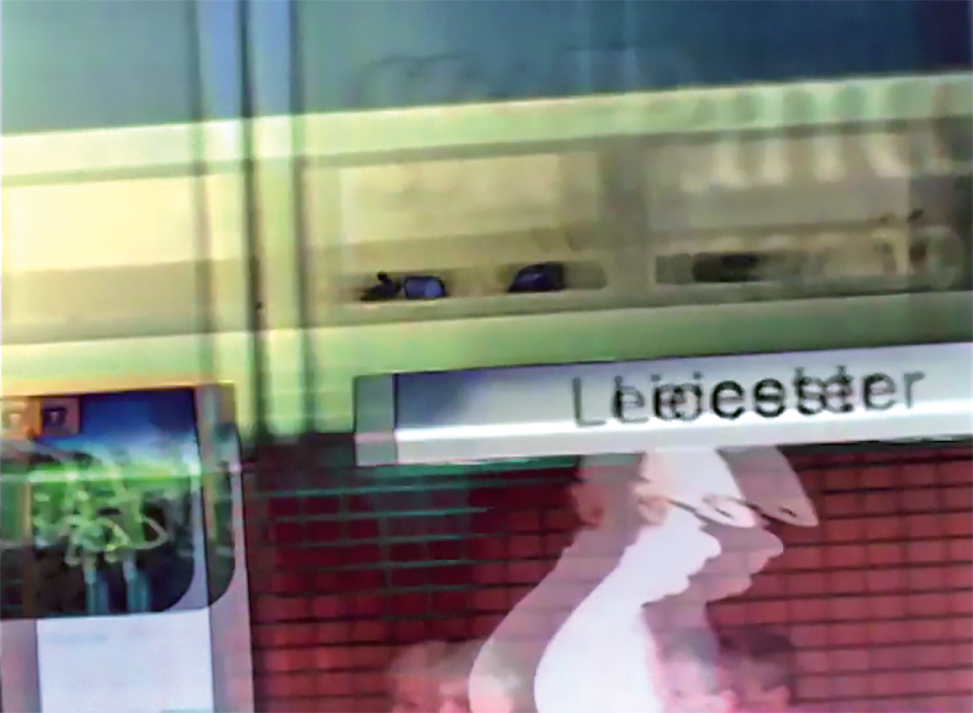
Following the closure of The Dining Room in 1990, Sandra continued to explore food as a subject through works such as What Did You Eat Today?, a series of filmed interviews examining personal relationships with food. Other notable works include MMs Bar (Trunk Records, 2011), a vinyl record composed of train catering announcements recorded during weekly journeys between London and Leicester, and Limbo (2019), a film narrated from journals written during this period whilst Sandra’s mother’s health was in decline, layered over footage of those same train journeys.
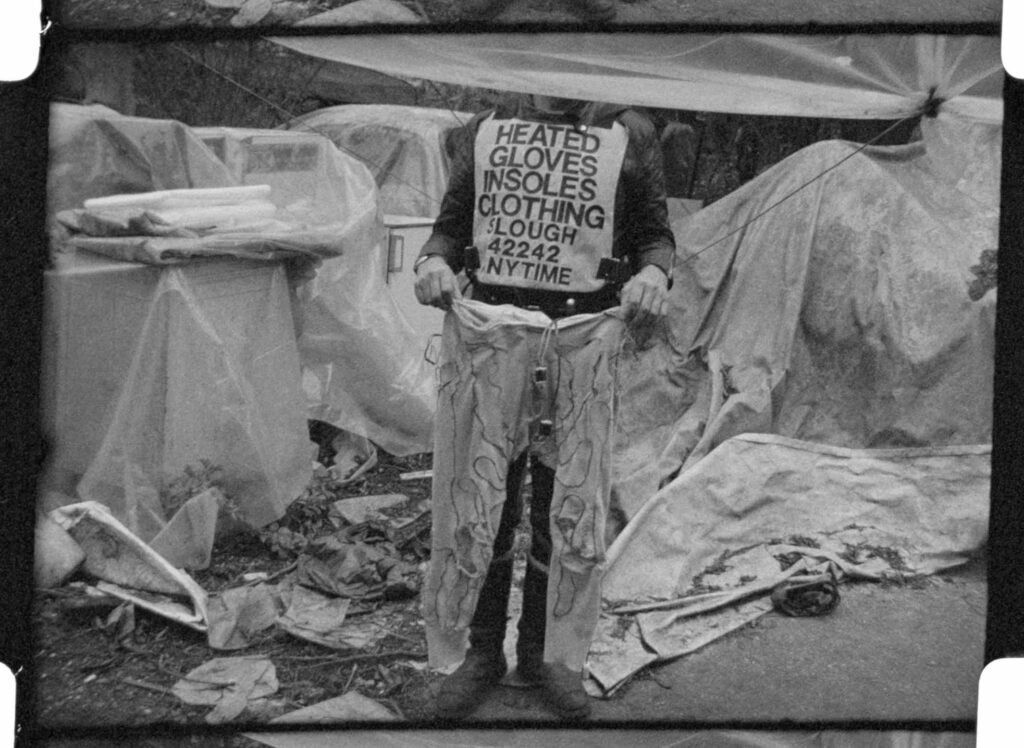
William continued to make films and work as a rare book dealer. His film Heated Gloves (2019) documents his friend and Dining Room regular Maurice Seddon, an eccentric inventor known for creating electrically heated clothing. The film features both intimate footage and clips from Seddon’s appearances on international talk shows, including David Letterman and Johnny Carson. After Seddon’s death, William discovered a trove of recorded phone calls spanning 30 years, which he compiled into the vinyl release The Seddon Tapes, Volume 1 (2018). These recordings—such as the surreal and humorous “Chest Freezer” exchange—formed the basis of William’s approach to his long-running Resonance 104.4 FM radio show Wavelength, which he has hosted for 15 years.
In 2020, William published Perfect Binding, a psychographic & counter-historical portrait of Leicester and changing attitudes towards fashion, music and art of the 1960’s and beyond, told and reflected through the lives of his family and childhood friends, including BOY boutique co-founder Stephane Raynor, artist and eccentric Jim Mellors (aka Victoria Ashley), and the late fashion photographer David Parkinson.
On the occasion of the exhibition, a follow-up to Perfect Binding entitled To Farse All Things (Designed by Daniel R. Wilson) will be published and made available from the gallery. This will be an anthology of work, interviews, and articles and is intended as a companion piece to the exhibition.
A broad selection of films by William & Sandra have been archived by LUX, an arts organisation that supports and promotes visual artists working with the moving image.
Exhibition curated by Tom Godfrey, Curator & Director of Bonington Gallery.
William English is a Leicester-born filmmaker, broadcaster, bookseller and co-founder with Sandra Cross of the organic vegetarian restaurant, The Dining Room (1980-1990). He is curator of the Captain Maurice Seddon (Royal Signals) archive, audio selections from which have been released as The Seddon Tapes (Paradigm Discs).
English’s long-running radio series – Wavelength – is a programme of multiple agendas, showcasing under-the-radar experimental music, poetry and art, broadcasting on Resonance 104.4 FM. His films include: Ex Library (2009), Heated Gloves (2015), It’s My Own Invention (2017) and City (1985). English is also the author of Perfect Binding: Made in Leicester (2019) – an experimental genre-defying documentary/counter-history/artist’s book, loosely themed around vanity/inertia and celebrity/obscurity in 1960s Leicester.
Sandra Cross worked as a features editor and deputy editor for IPC Magazines, before developing The Dining Room (active between 1980-1990), a vegetarian organic restaurant in London’s Borough Market, with partner and co-founder William English. This early experience of collaboration on projects where life and art intersect, guides her joint and solo actions whether in written work, film or sound. There is a focus on the lived experience documented and memorialised to celebrate and preserve what might otherwise have been lost. The founding of the restaurant initiated a quest to explore identity through the series What Did You Eat Today? leading to an association with the Mass Observation Archive, and the activity of recording announcements on the London-Leicester train in the MMs Bar (2011). These were described by one reviewer in Mojo as “destined for intense cultdom”.
Contemporary with this project was Limbo – a ten year study of her mother’s “probable Alzheimer’s” in words, sound, images, collages, and film, the substantial parts of which are a 2,000 page journal, 96-hours’ worth of recordings, and an hour-long film. Limbo (2019), the film, was presented at the British Library, and the recordings archived by Stephen Cleary, The British Library’s Lead Curator for Literary and Creative Recordings, whose enthusiasm was expressed via a suggestion that the readings over the film in particular were reminiscent of the ethos and articulation of Mark E. Smith, lead singer in the post-punk band The Fall. Cross has suggested that a quote from La-Bas by Joris-Karl Huysmans best identifies her approach to life:
“It is foolish to let my thoughts wander this way (…) but daydream is the only good thing in life. Everything else is uglier and empty”.
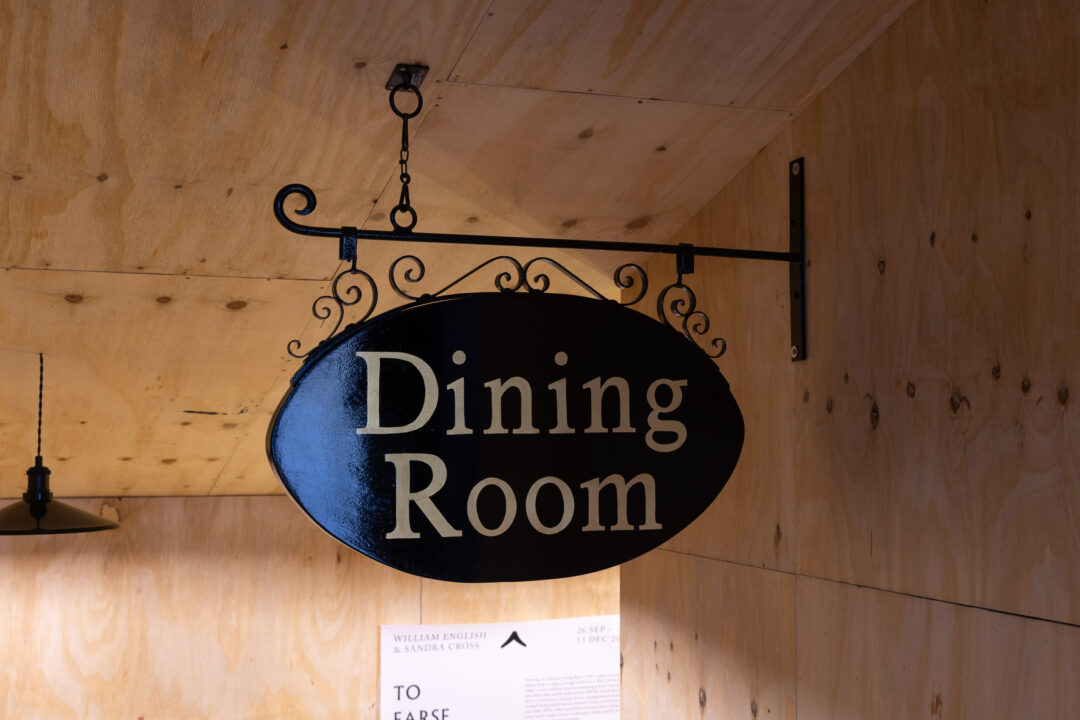
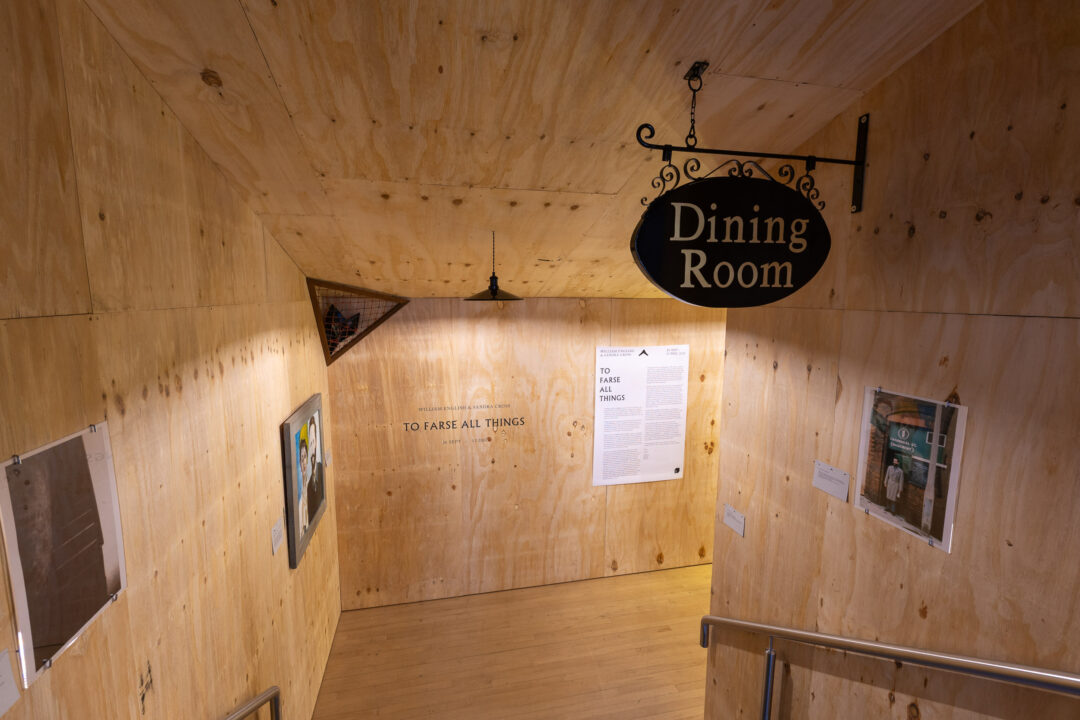
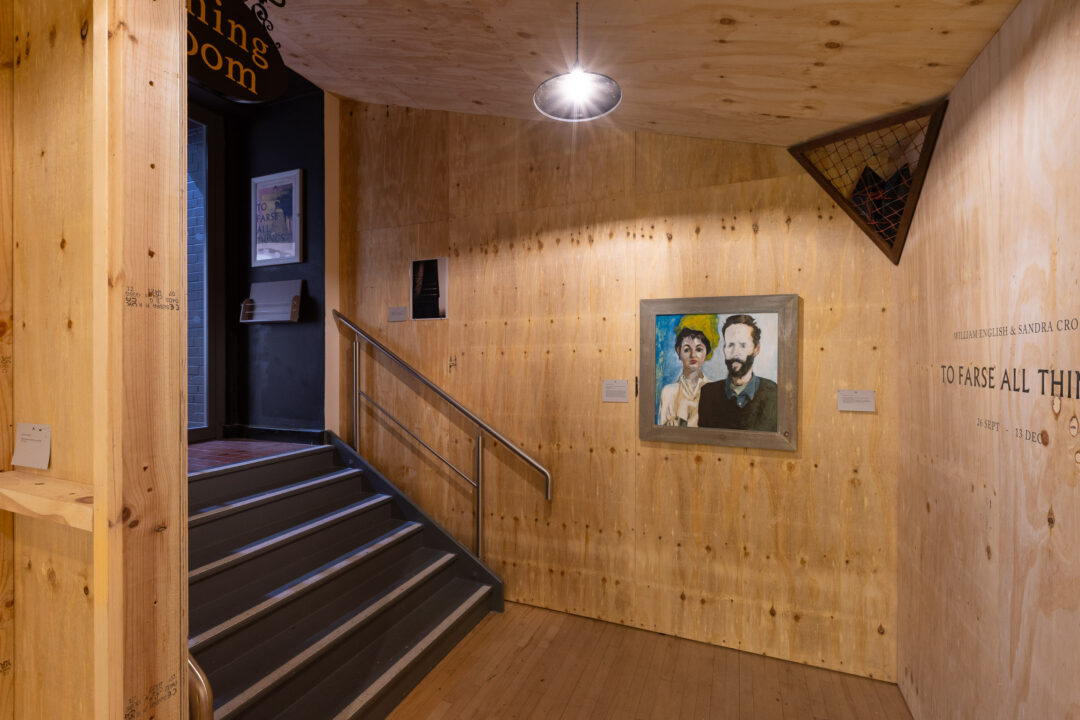

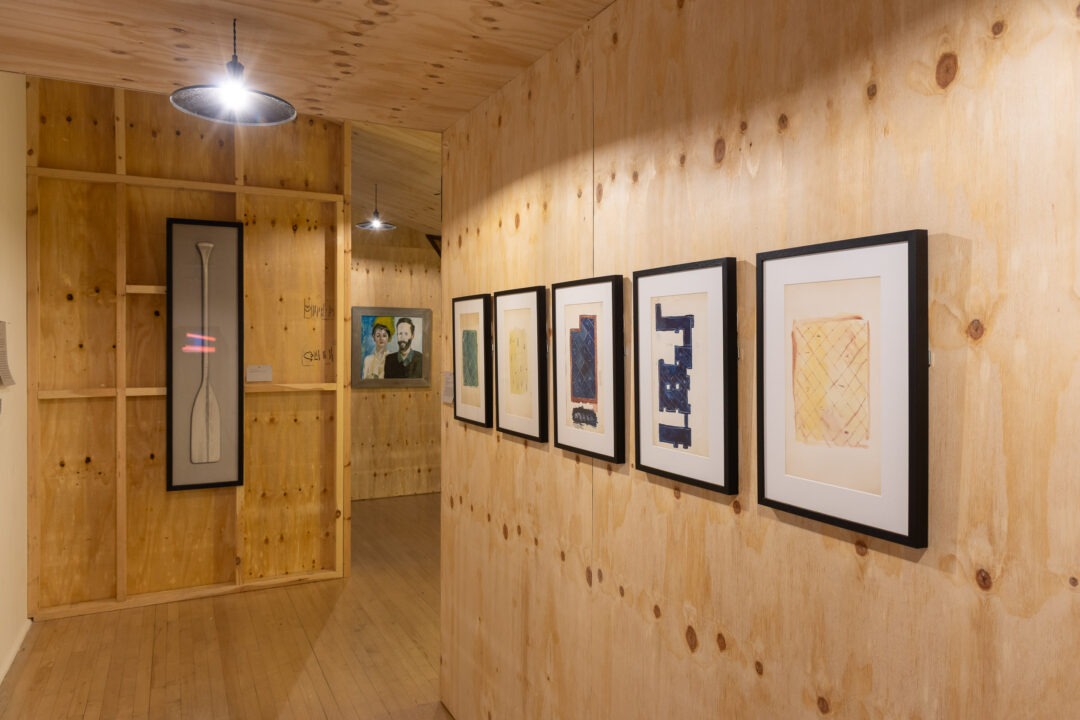
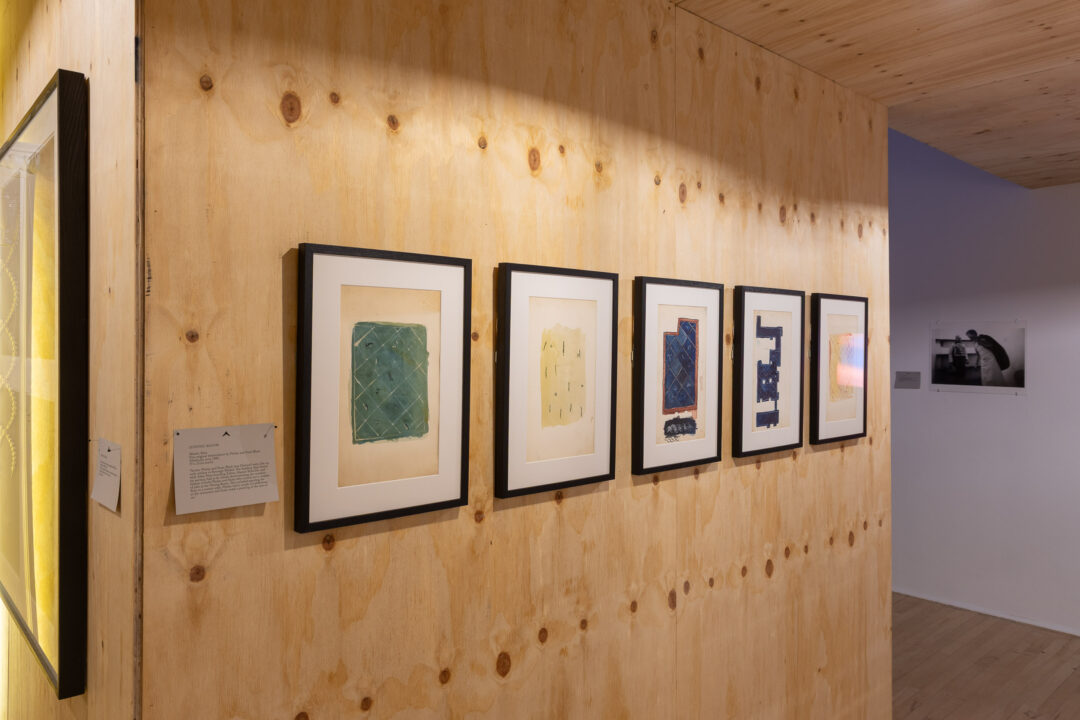
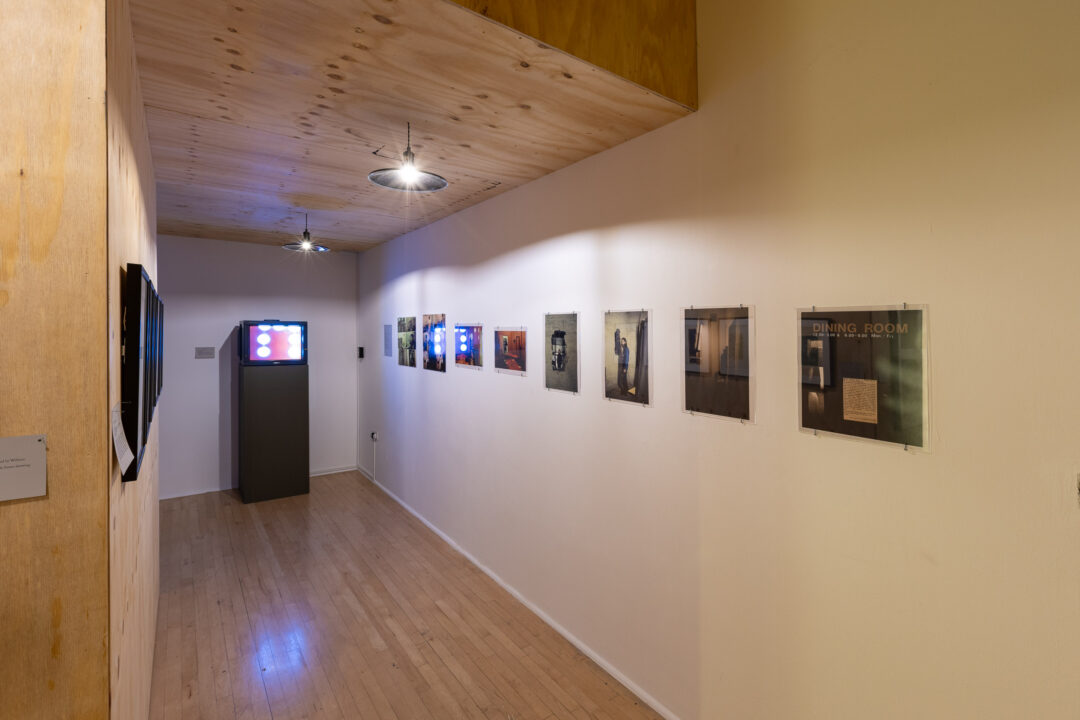
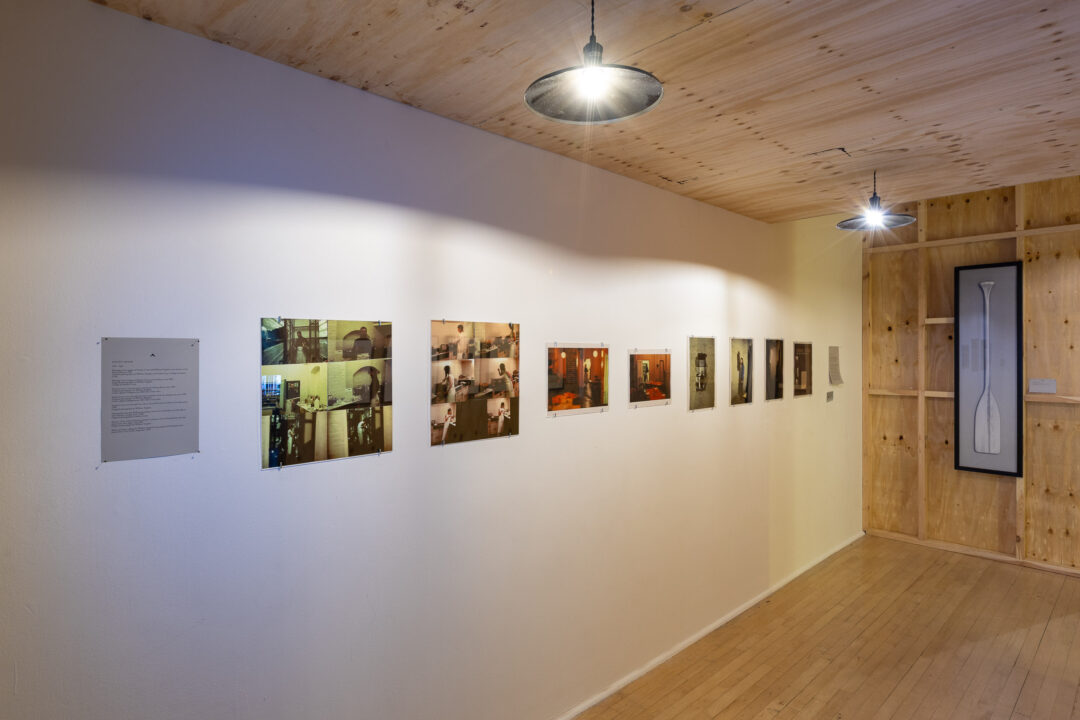
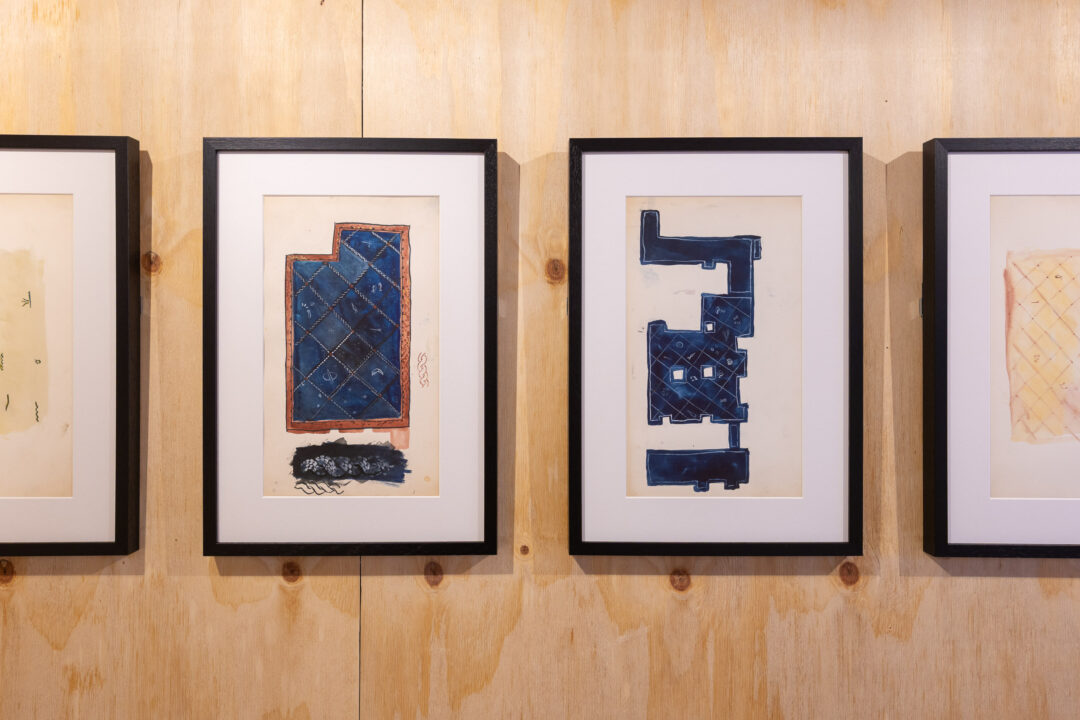
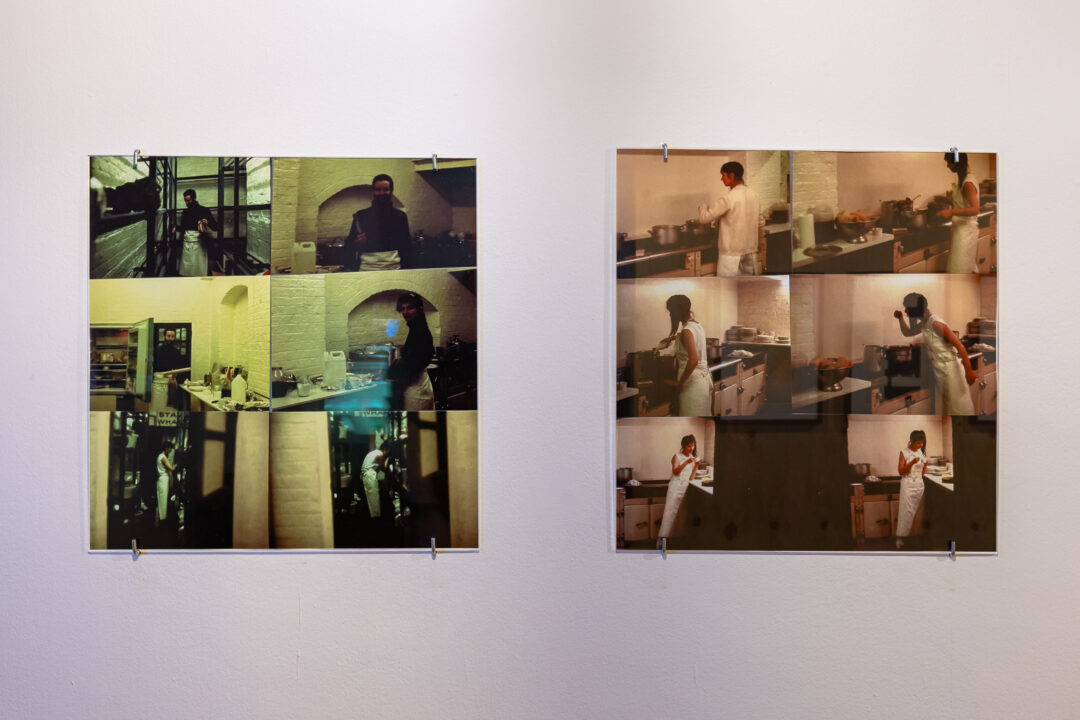
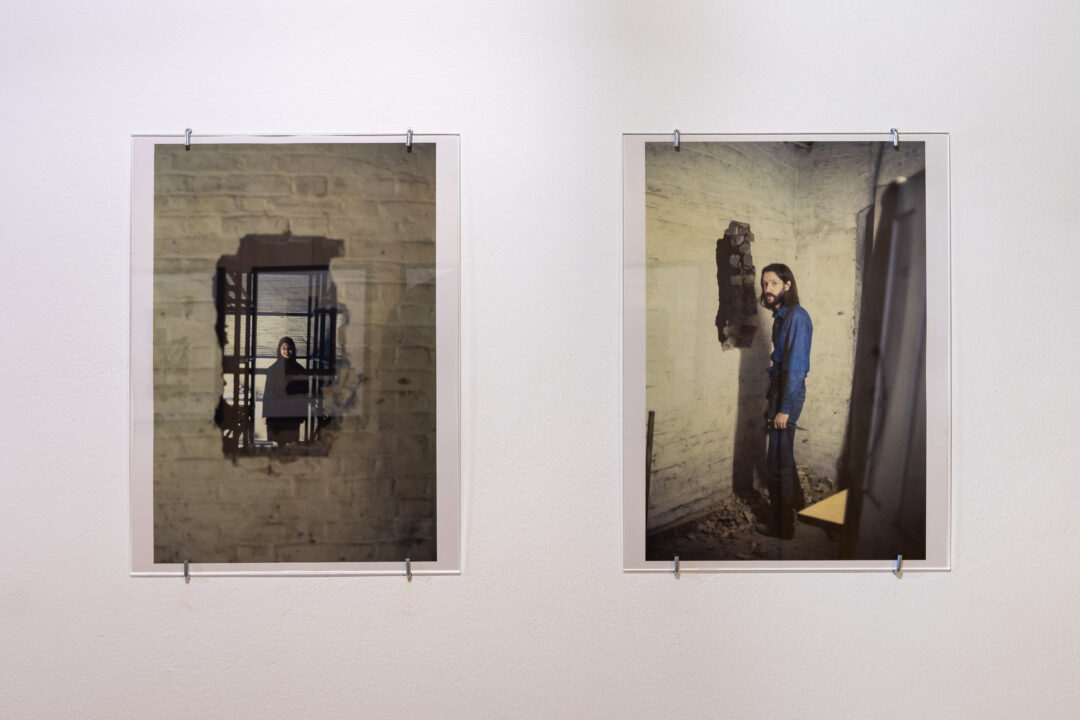
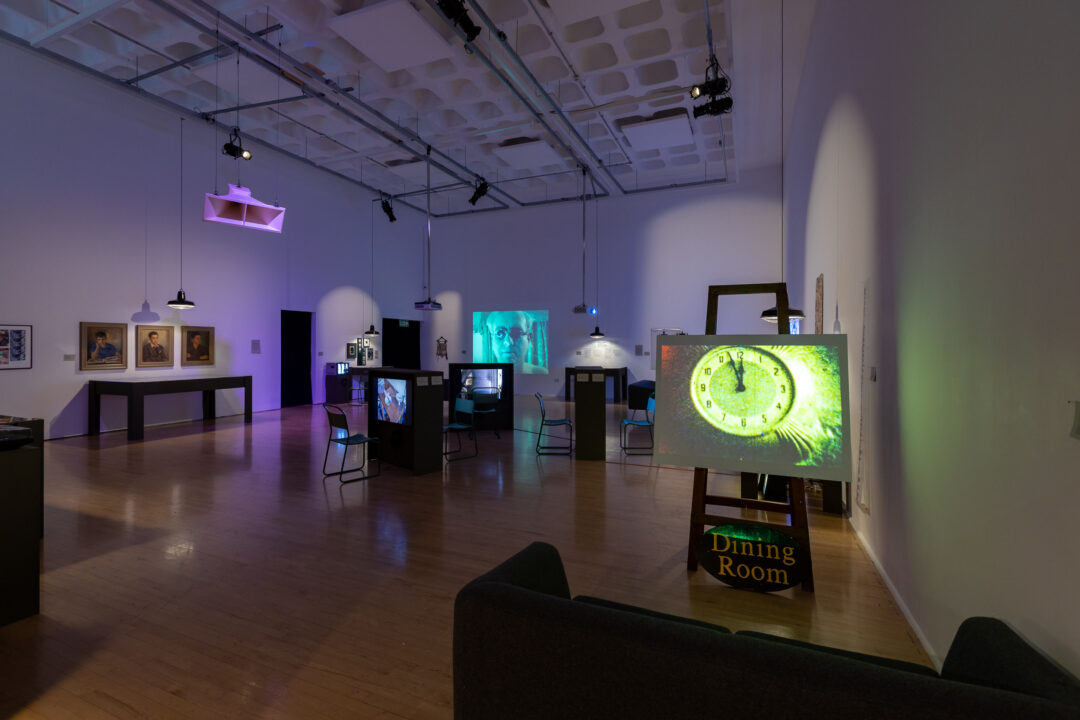
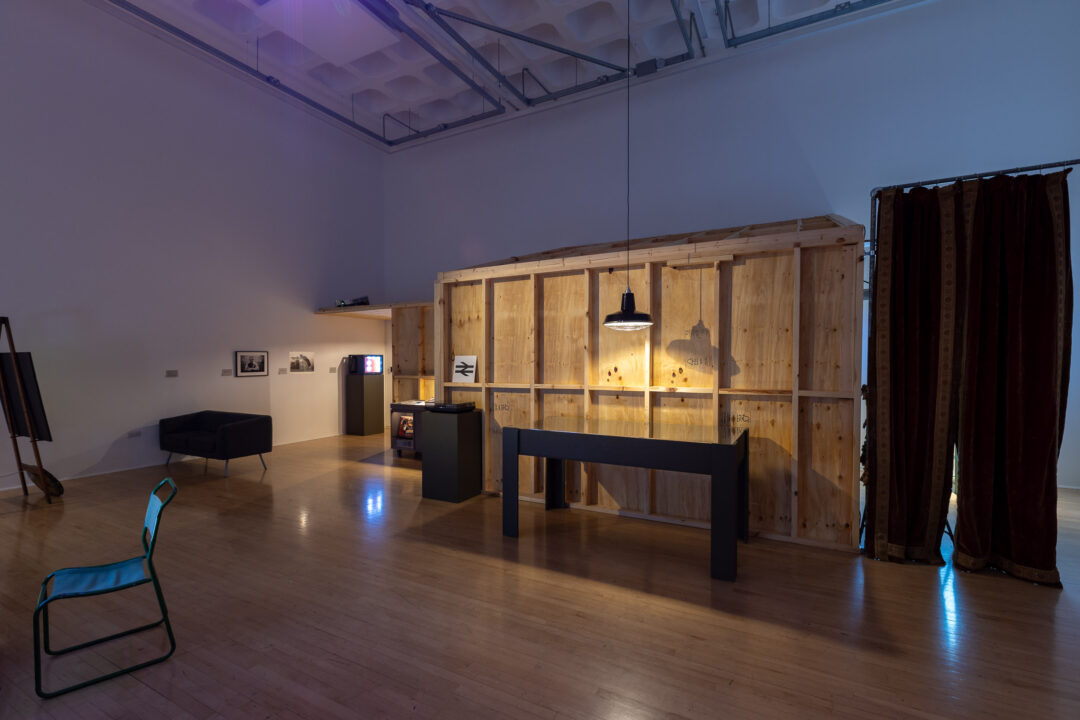

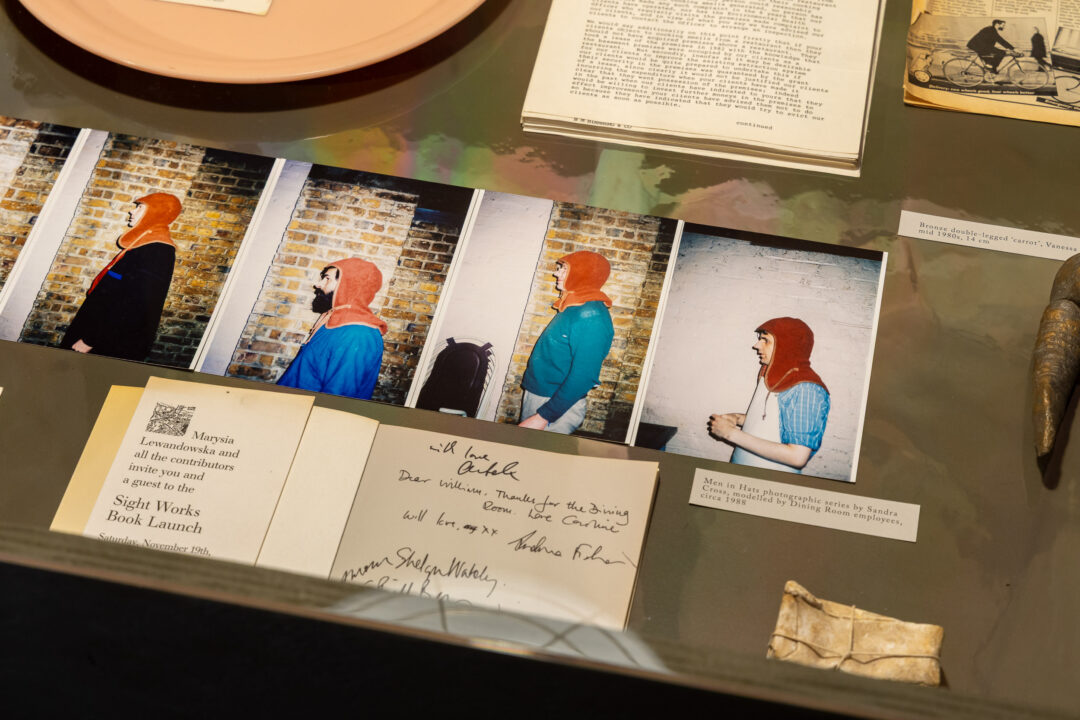
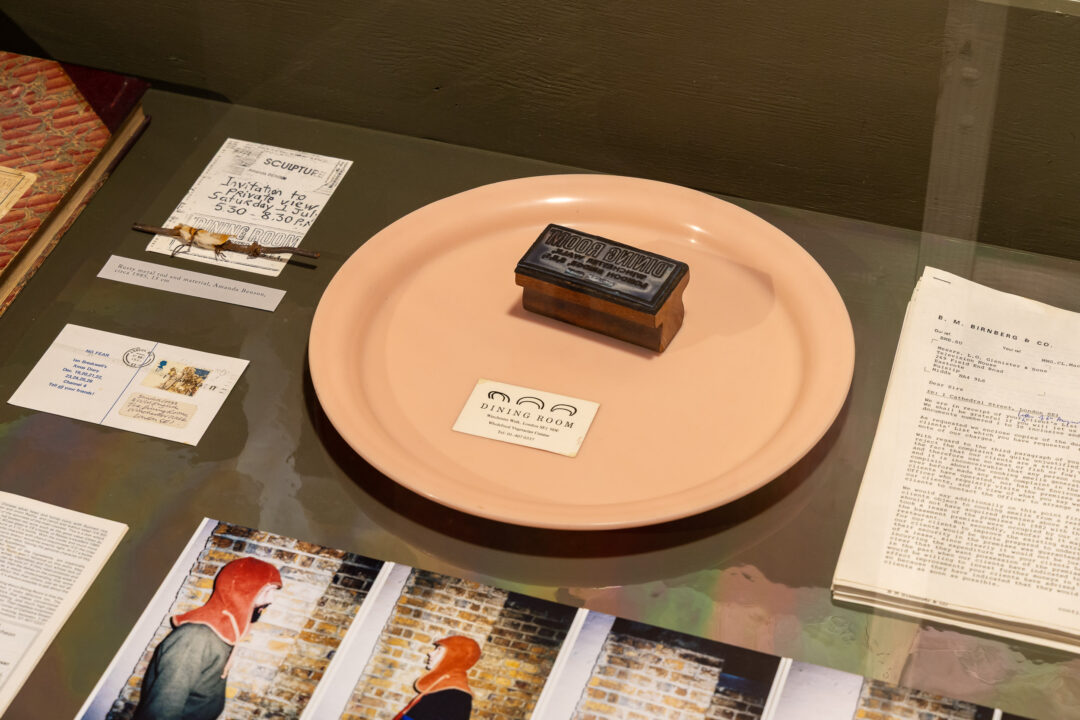
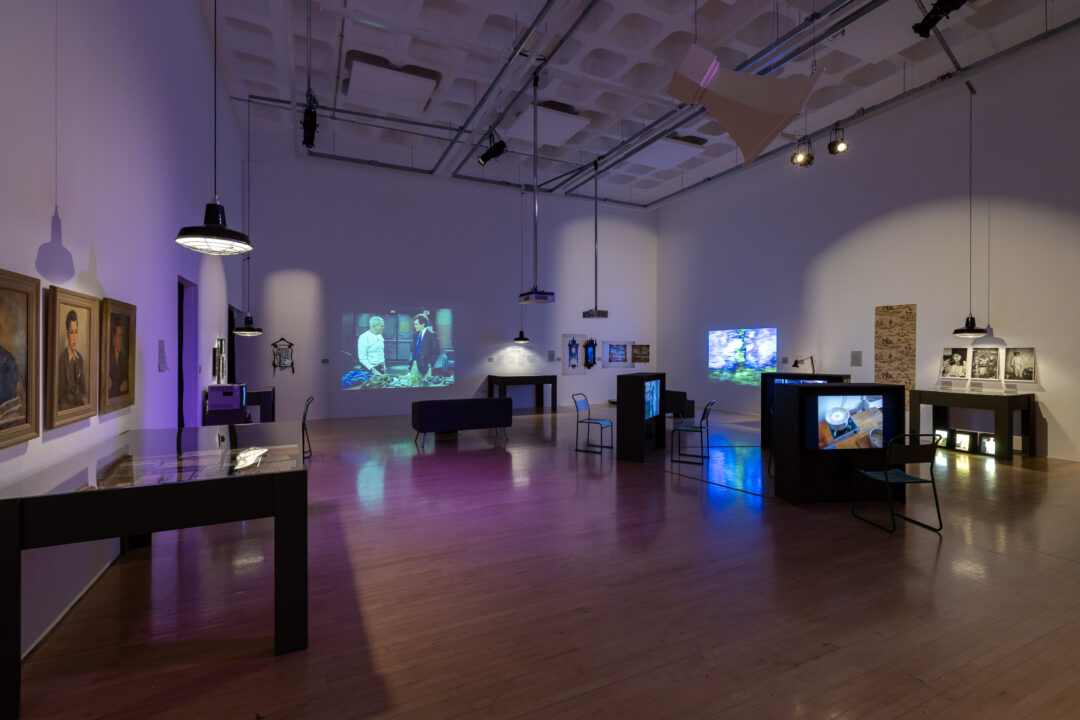
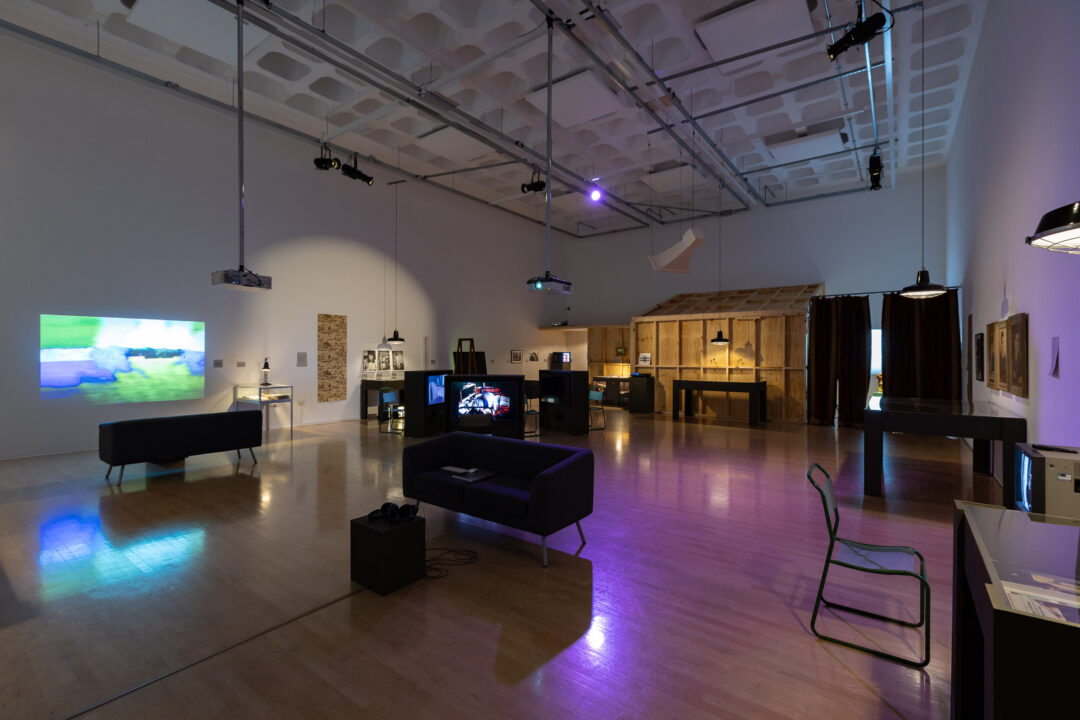
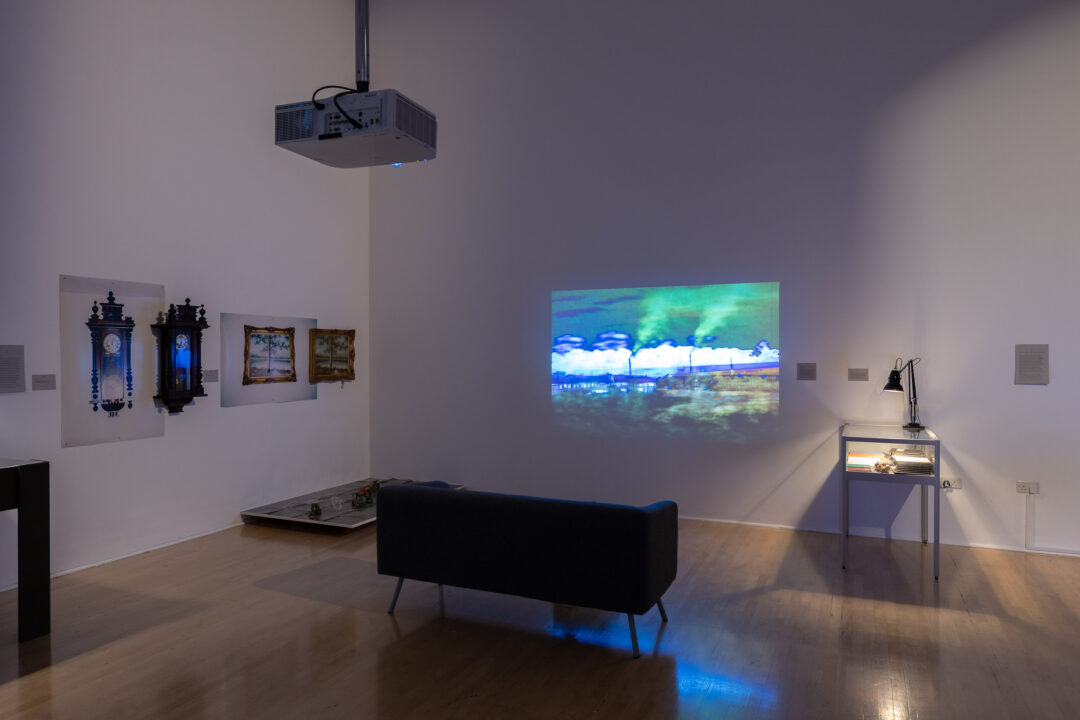
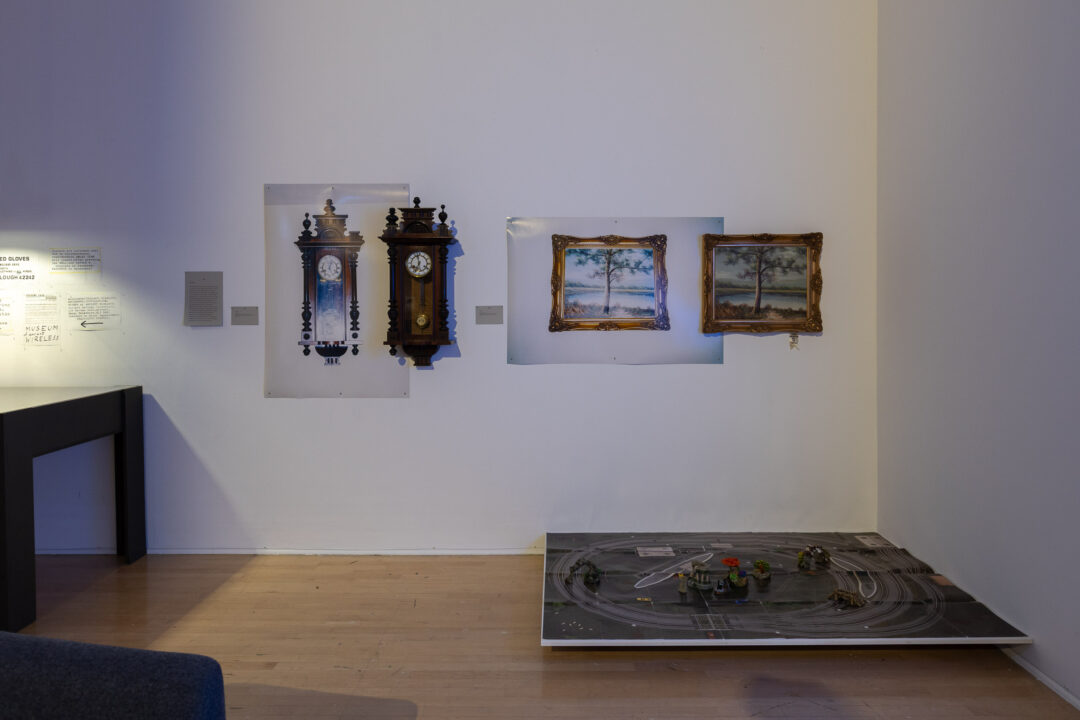

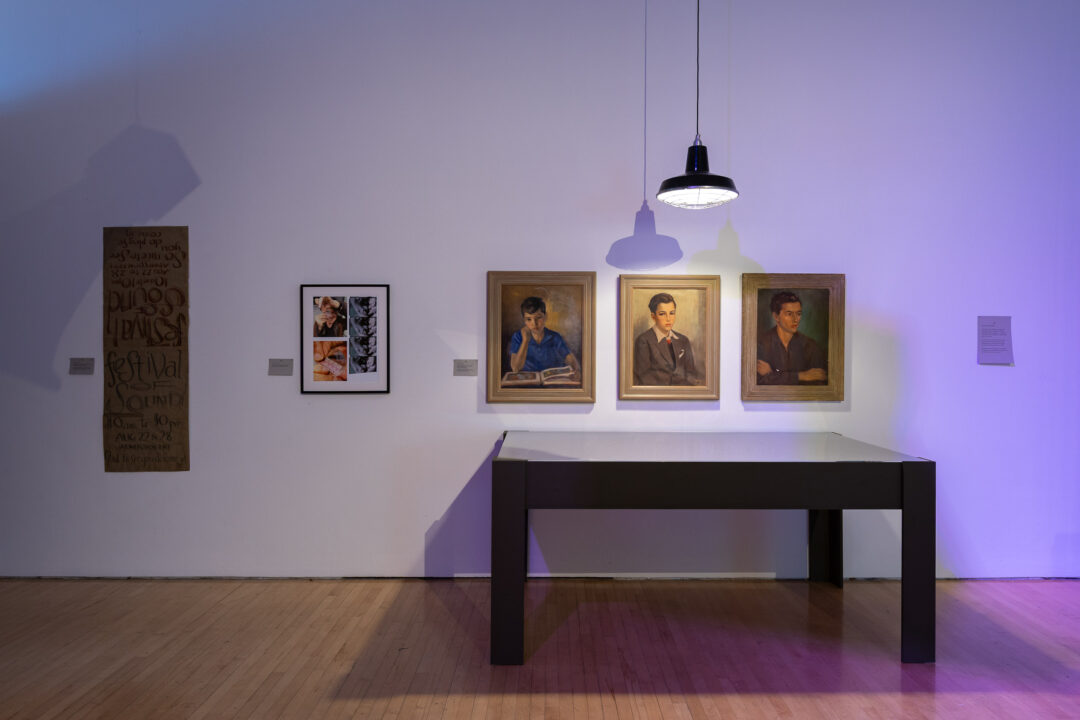
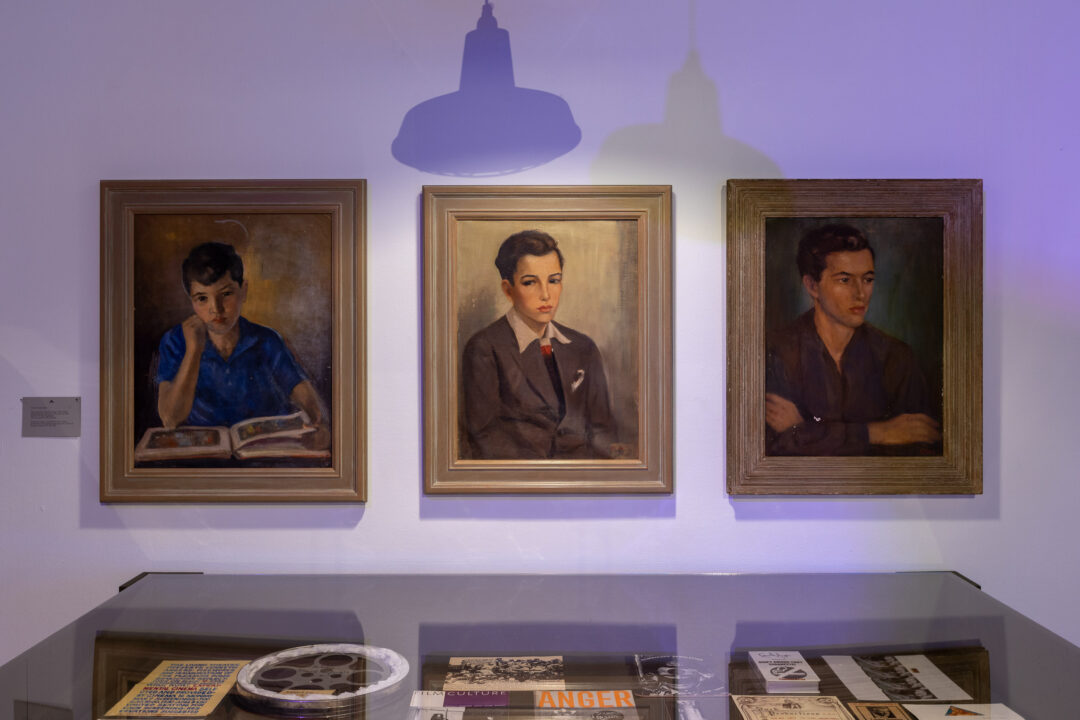
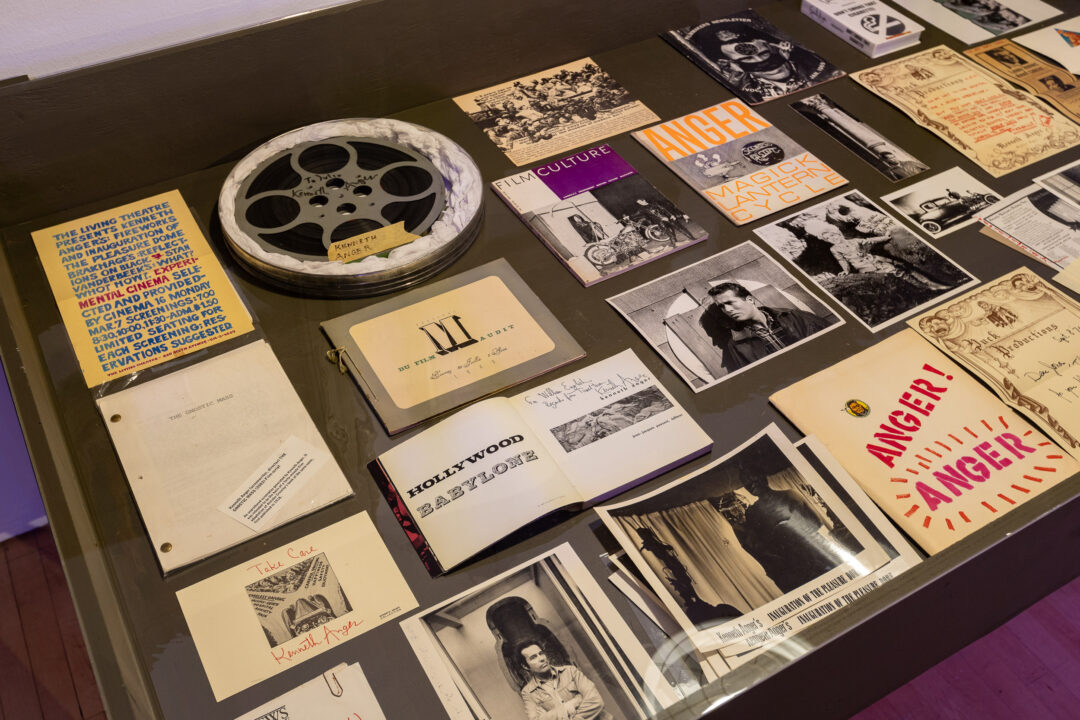

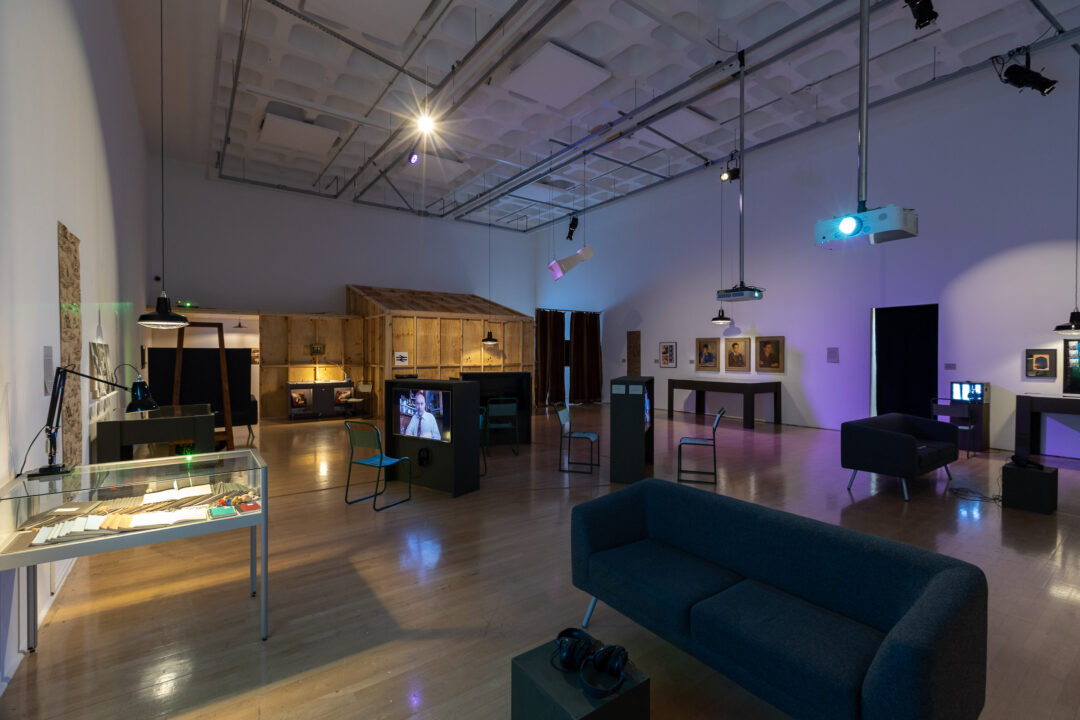
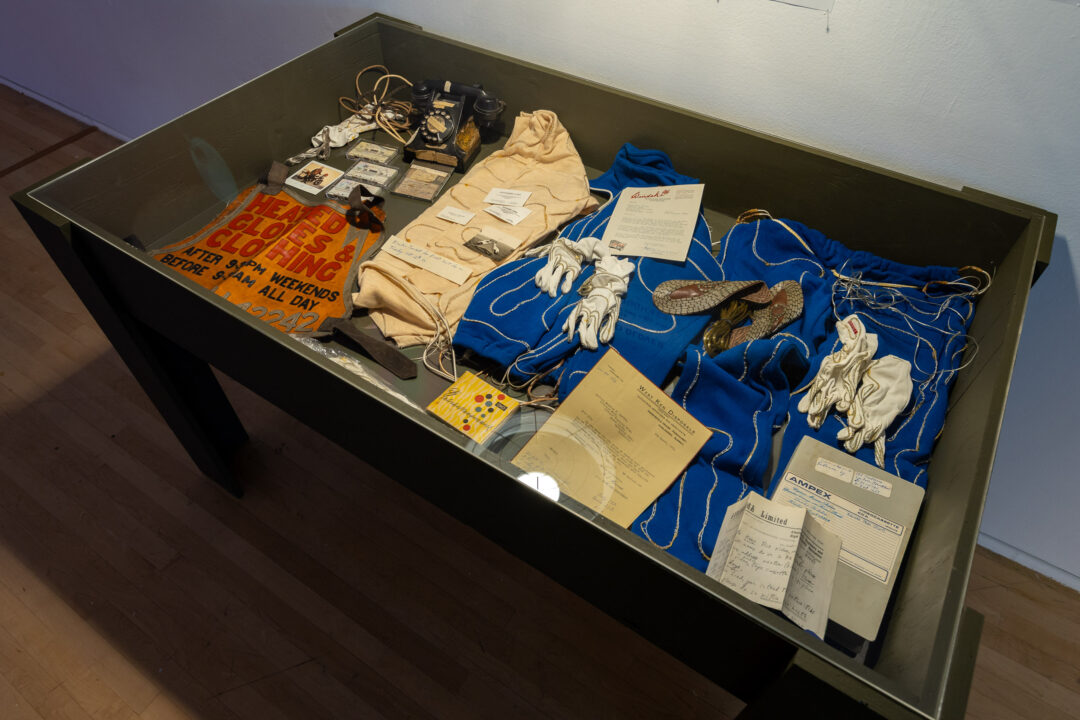
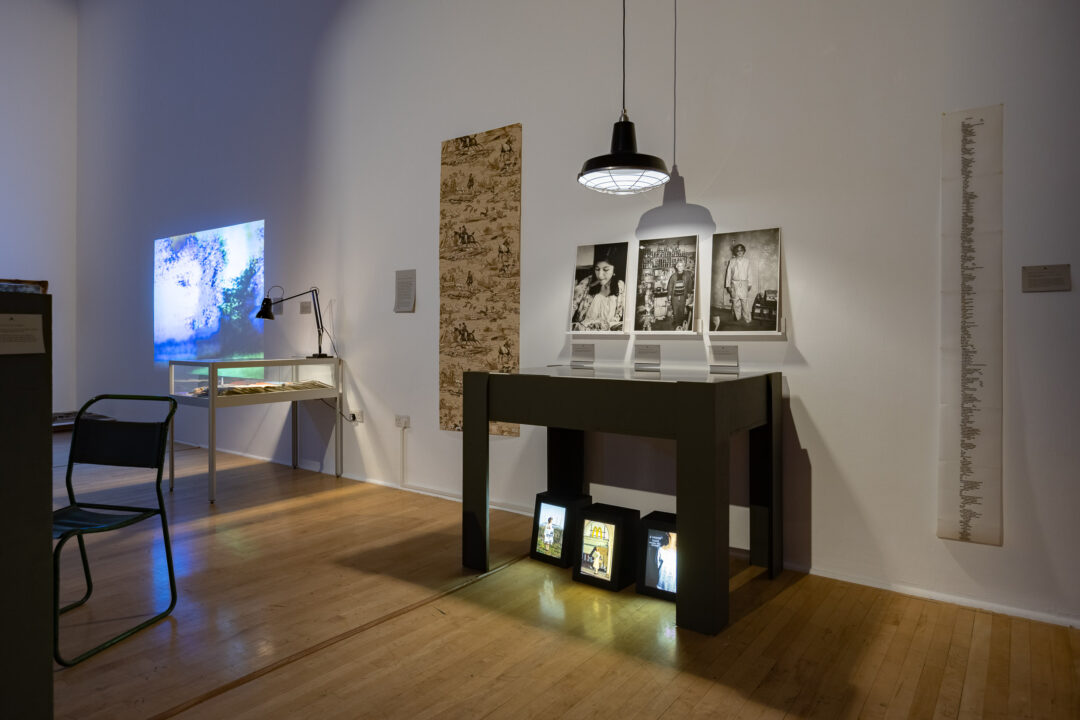
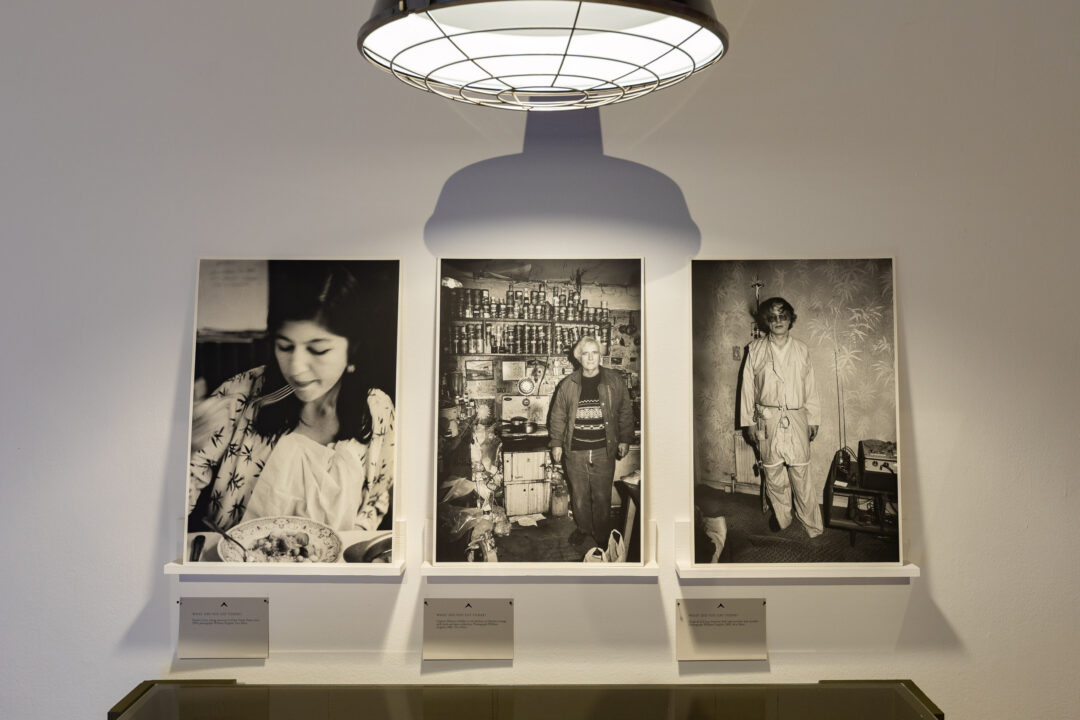
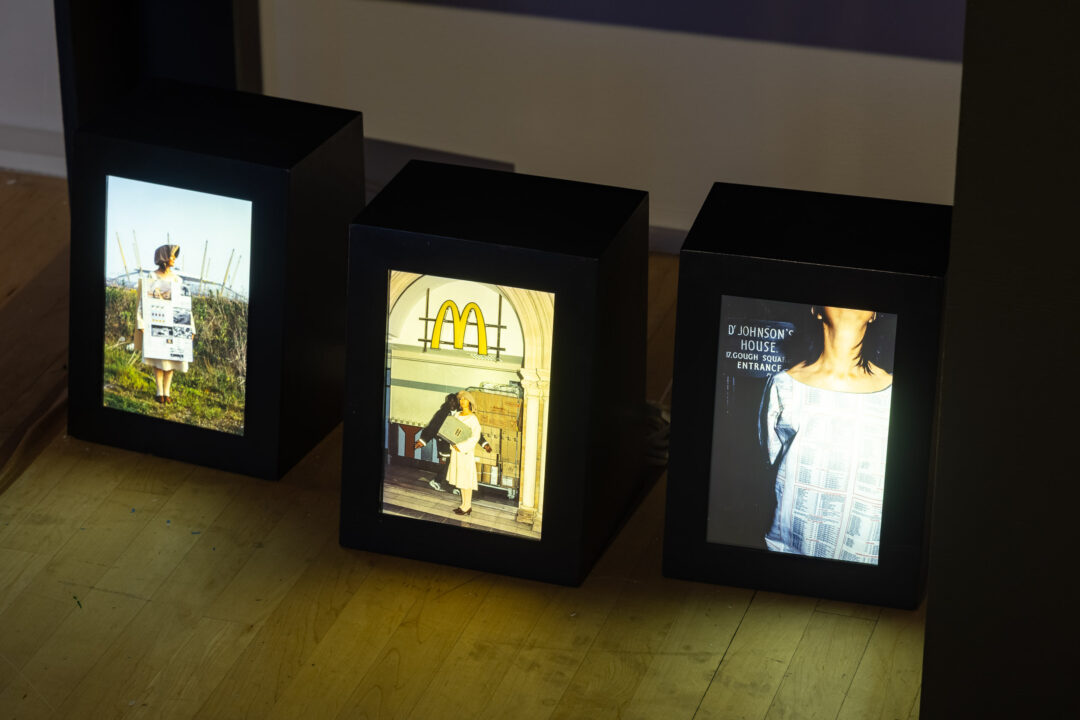
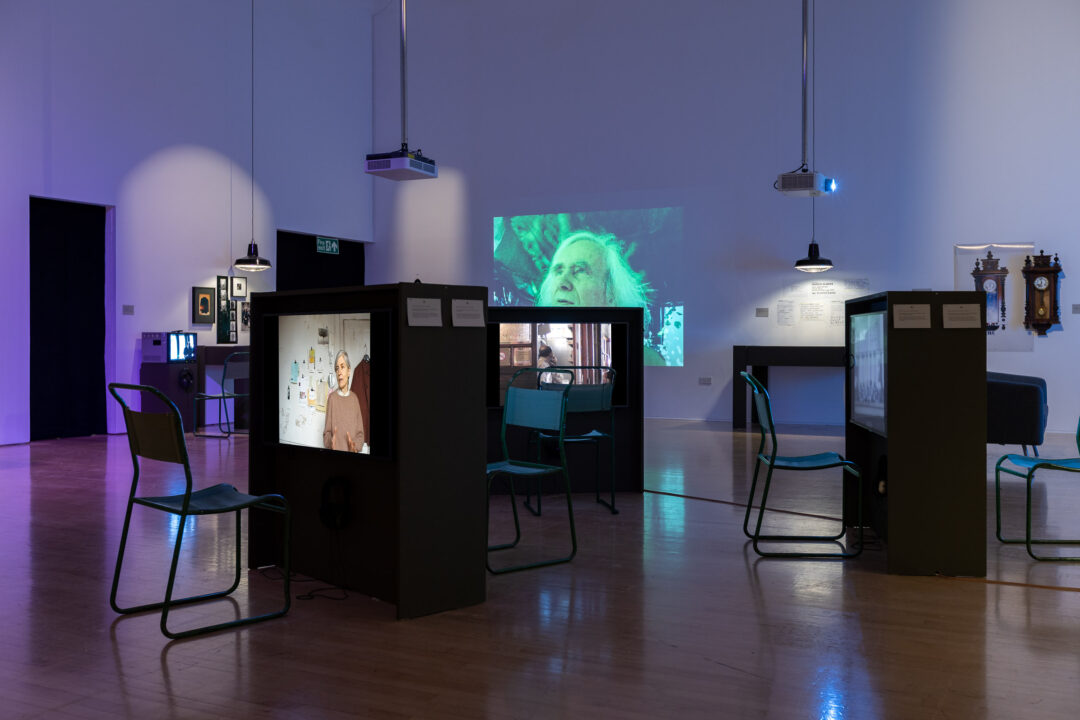
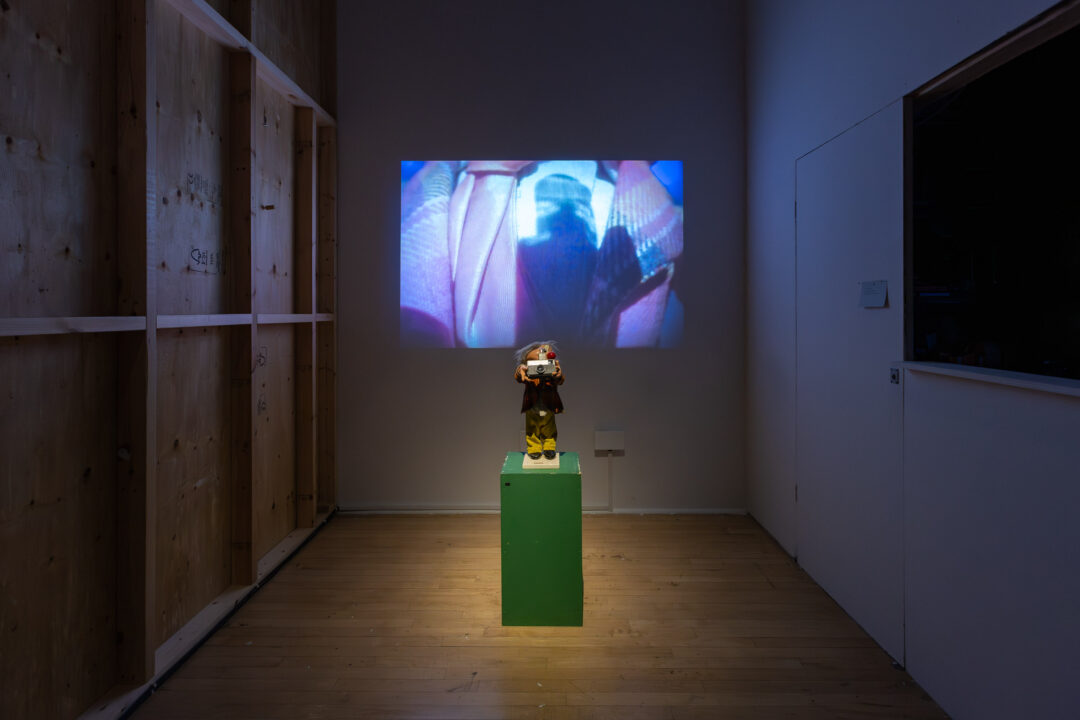
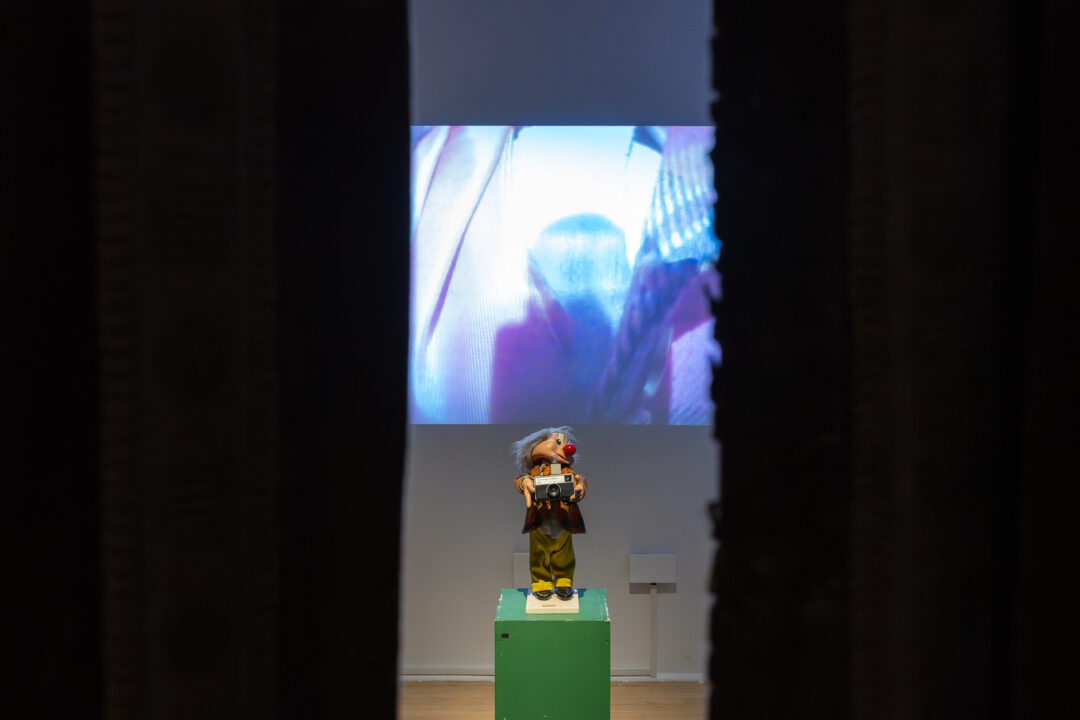
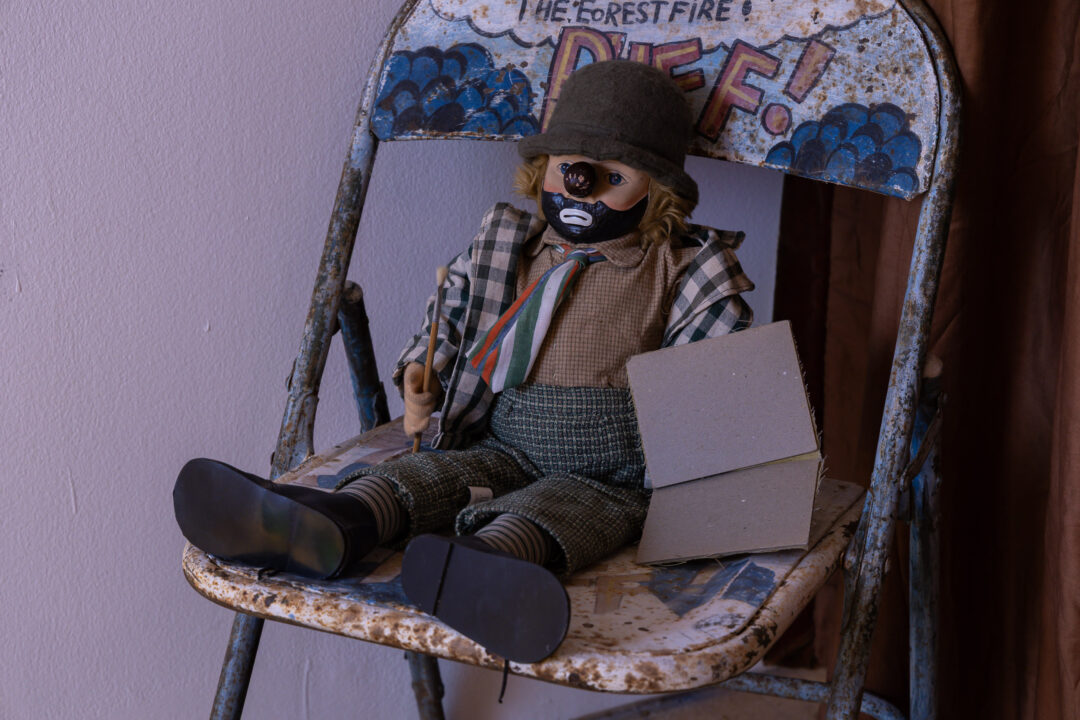
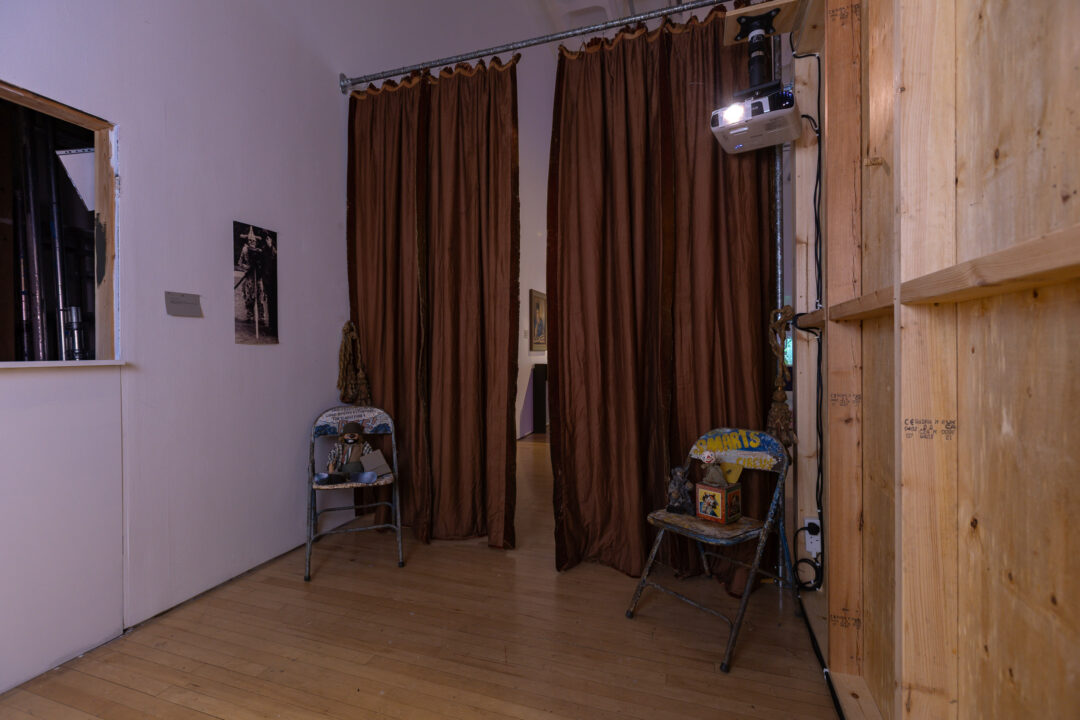
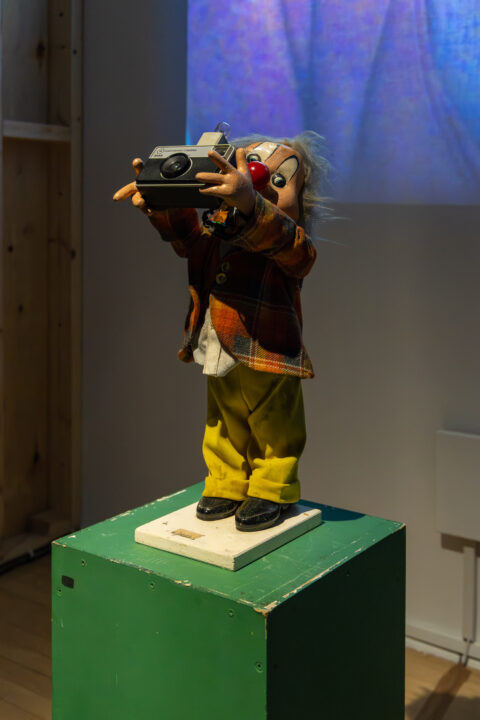

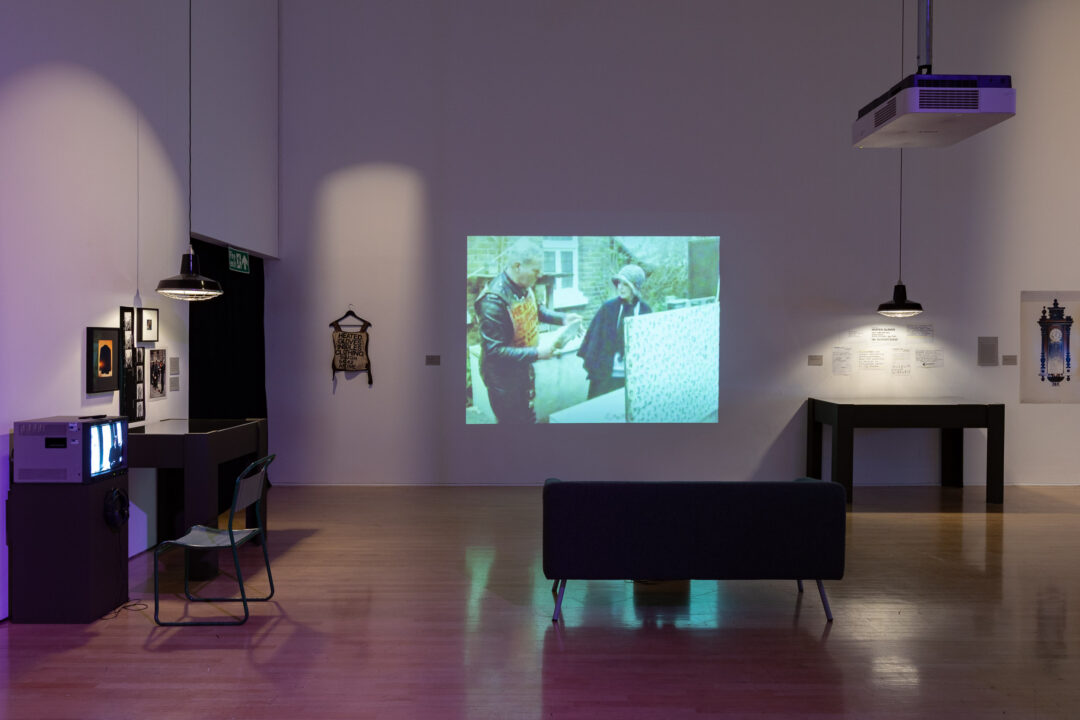
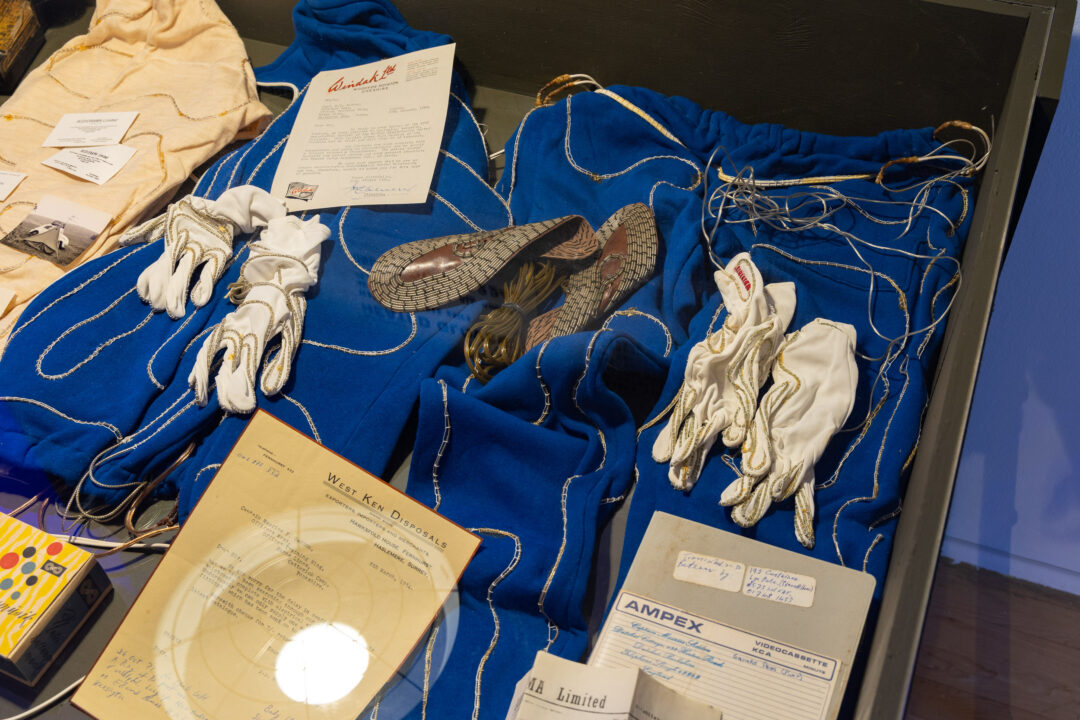
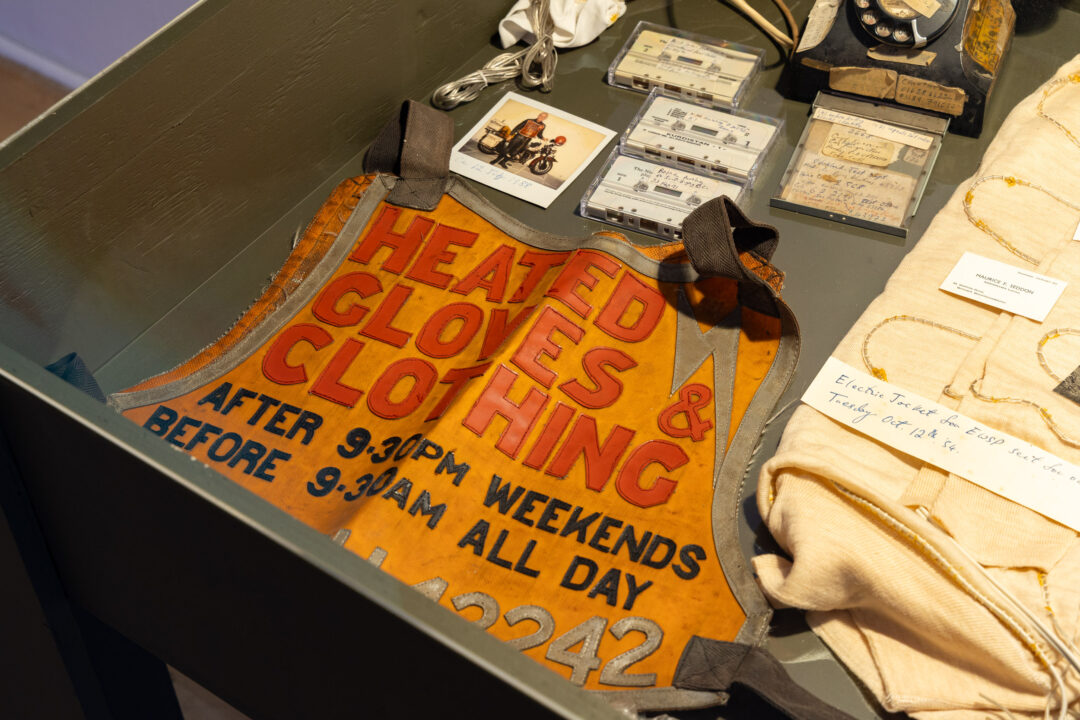
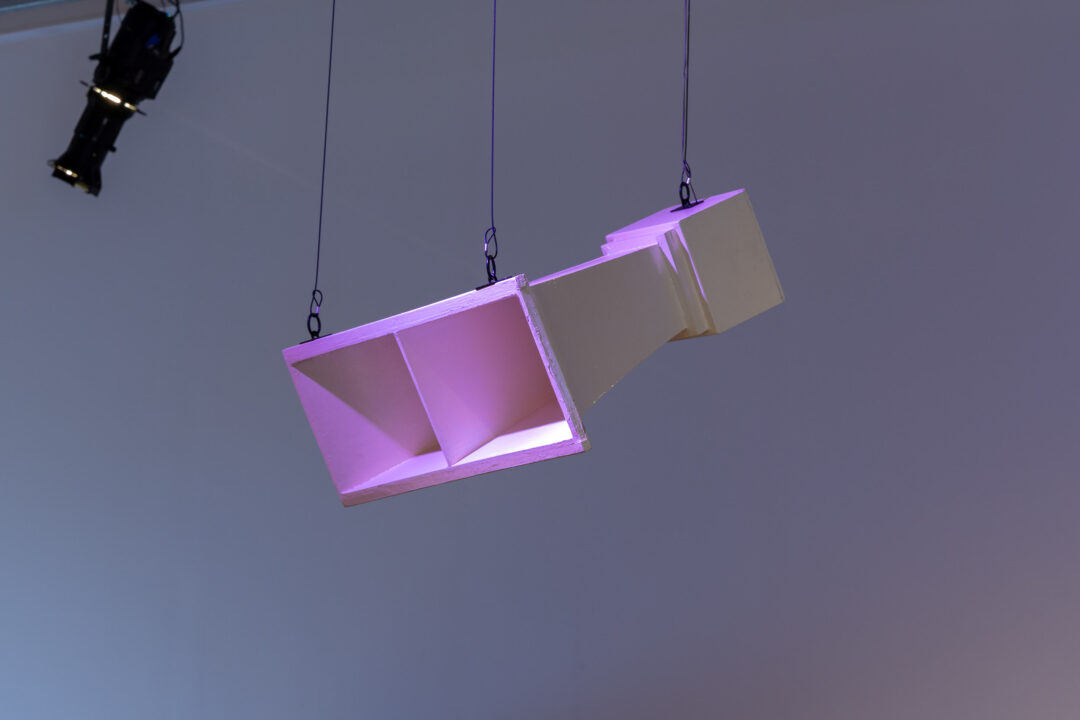
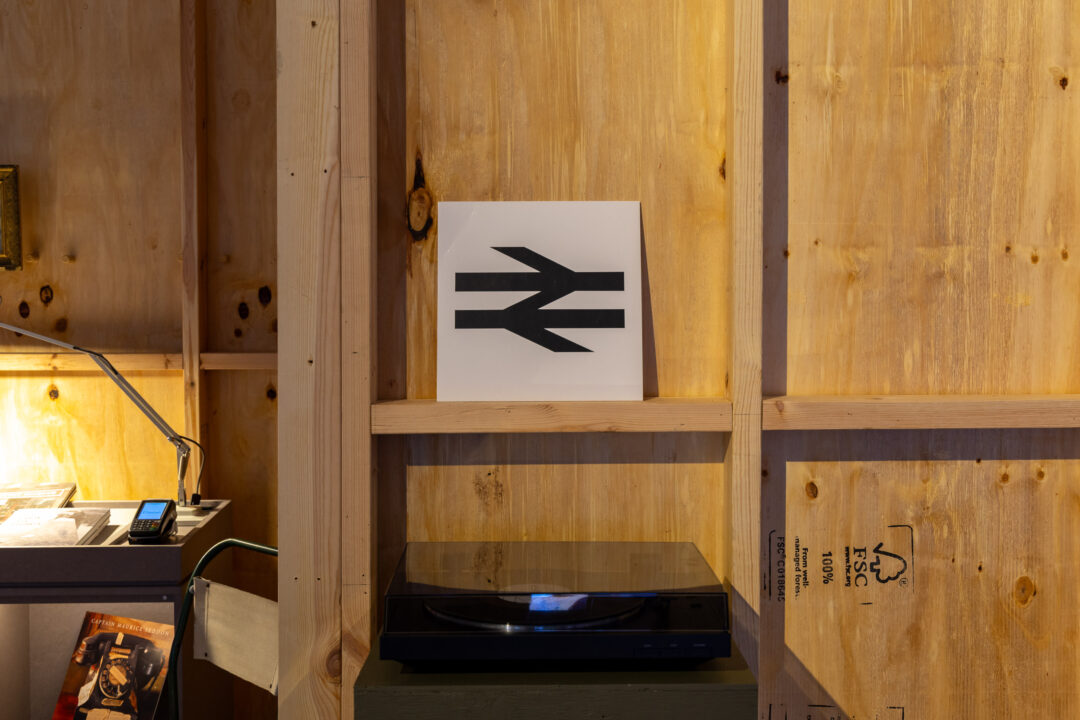
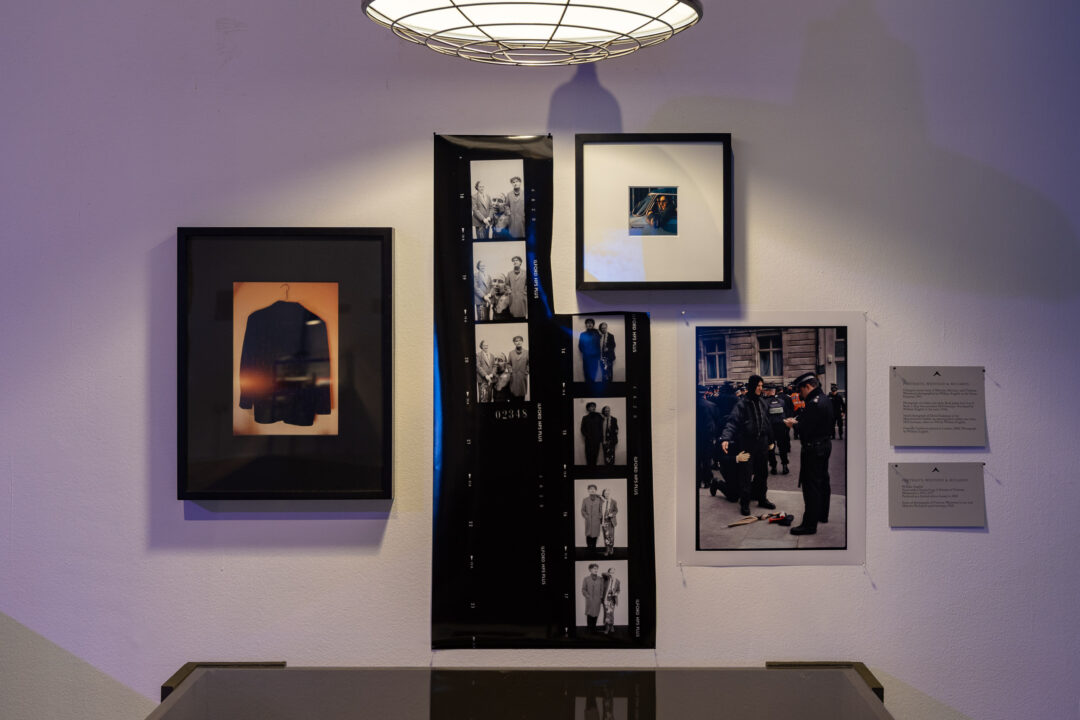
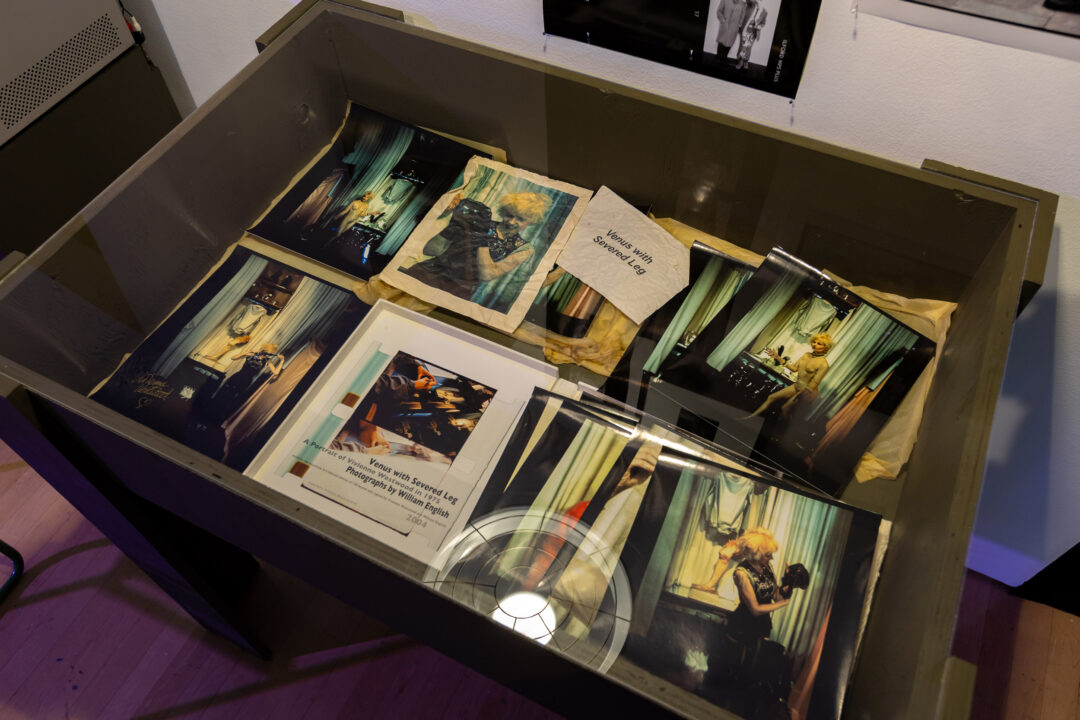
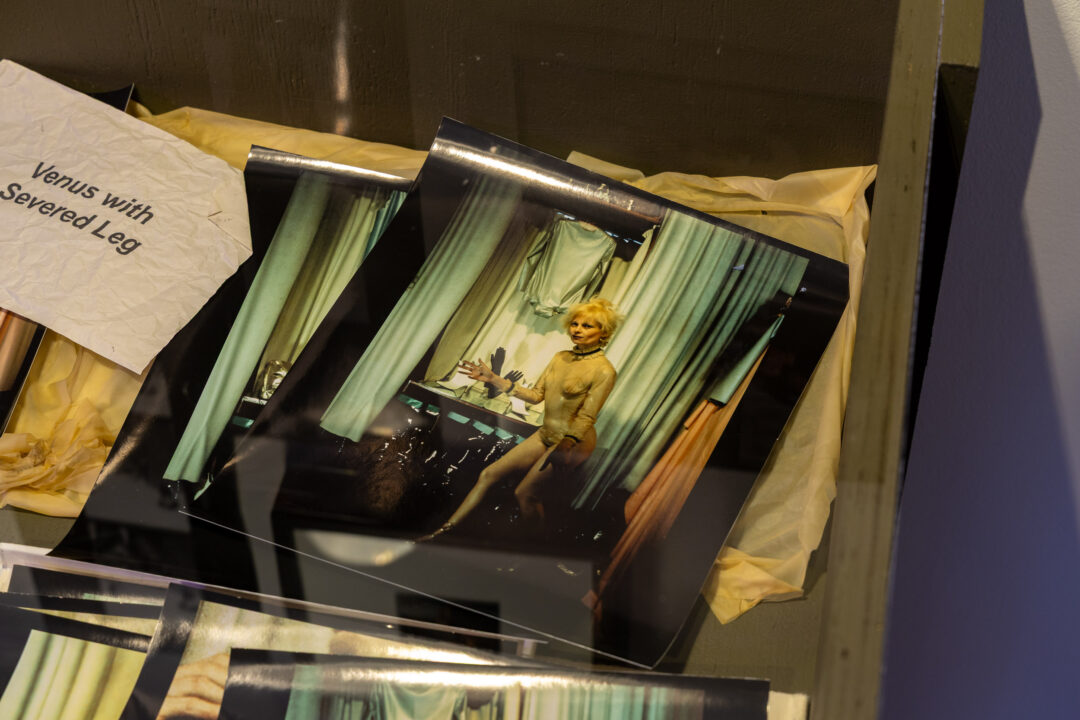
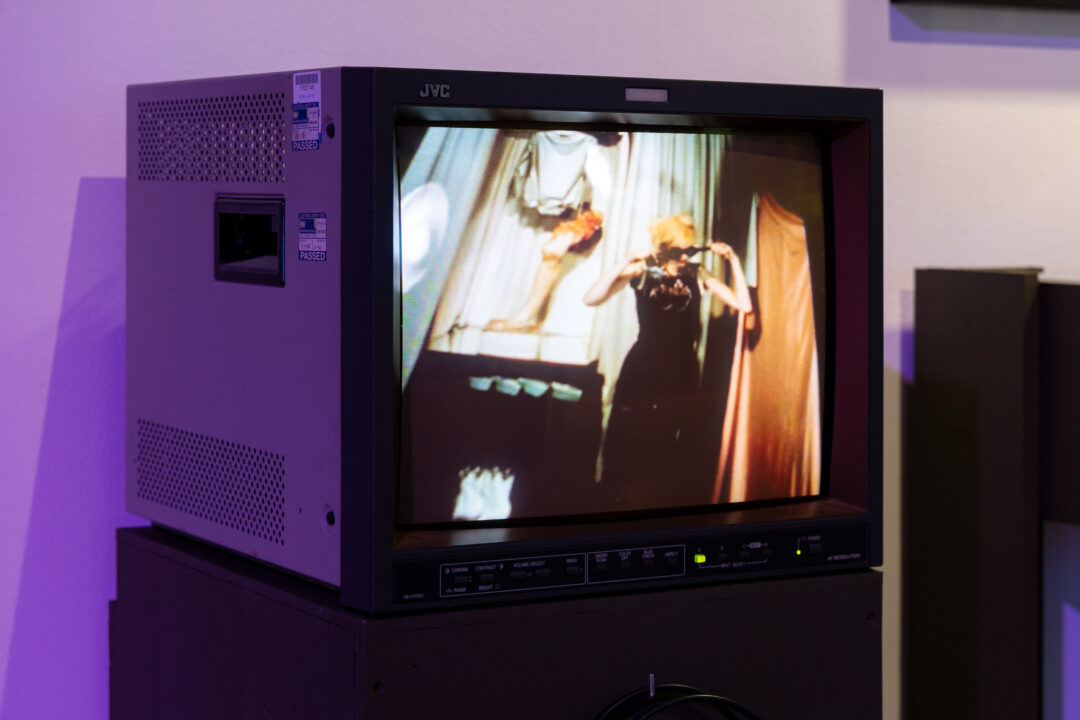
Image at top of page: Left – William English in Dining Room kitchen circa 1982 photograph by Sandra Cross / Right – Sandra Cross in Dining Room kitchen circa 1982 photograph by William English.
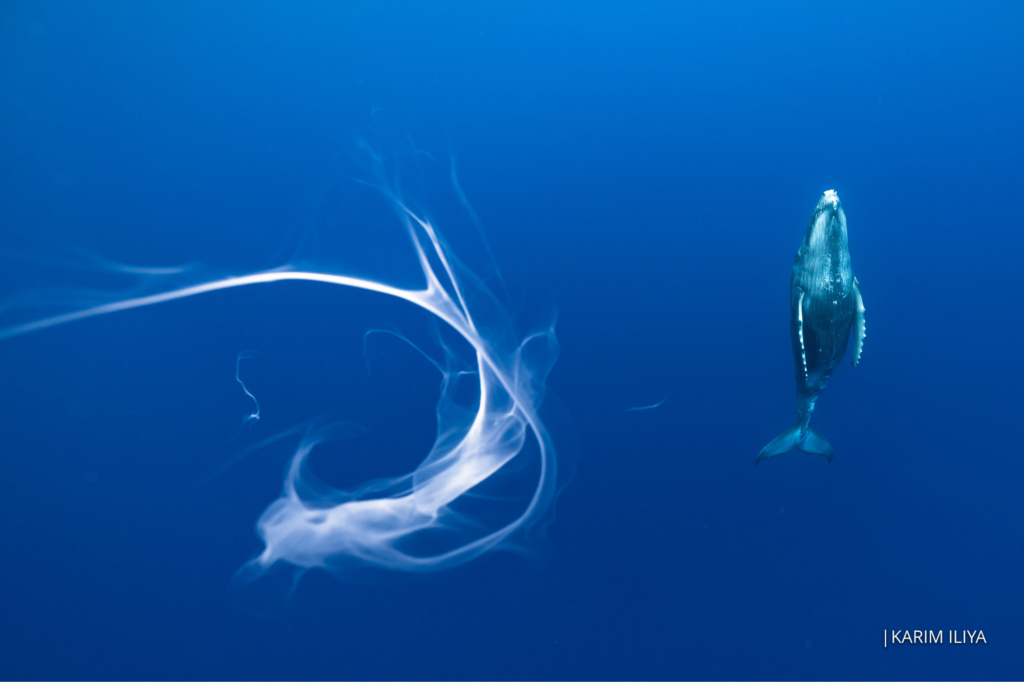
In this series of events, which are part of Jenni Ramone’s project on breastfeeding narratives and representations, Jenni is joined by photographer Karim Iliya, writer ‘Pemi Aguda, and nurse educator Meg Moorman. These conversation events invite us to think about how the arts and humanities can transform the way we practice and understand breastfeeding, health, and our interactions with other animals and the planet.
Join Karim Iliya discussing the hidden underwater worlds and other natural places he has portrayed in photography and films, with NTU’s Jenni Ramone.
Karim Iliya is a photographer, filmmaker, whale swimming guide, and former dearMoon crew member based in Iceland. He also co-founded Kogia, a nature conservation non-profit. Karim grew up in the Middle East and Asia and developed an insatiable curiosity for the natural world which has taken him into the midst of exploding volcanoes, battling whales, ice worlds of the Arctic, and many of the incredible places where humans and animals make their homes. Through his photography and films, Karim takes his audiences to hidden underwater worlds and documents other natural places in an effort to protect Earth’s delicate ecosystems. Karim has worked in over 50 countries, won multiple awards, and his work has been featured in numerous distinguished magazines, documentaries, and publications.
For more on Karim’s work, check out his website and for more of his photos follow this link to his Instagram.
Join fiction writer ‘Pemi Aguda reading from and discussing her recently published collection of short stories, Ghost Roots, with NTU’s Jenni Ramone.
‘Pemi Aguda is from Lagos, Nigeria. She has an MFA from the Helen Zell Writers’ Program at the University of Michigan. Her writing has been published in Granta, Zoetrope: All-Story, Ploughshares, and One Story, among others, and won O. Henry Prizes. Her novel-in-progress won the 2020 Deborah Rogers Foundation Writers Award, and she is the current Hortense Spillers Assistant Editor at Transition Magazine. Ghostroots, a finalist for the 2024 National Book Award in Fiction, is her first book.
For more information about Pemi’s work, please visit her website, webstore, and Instagram
Join nurse educator Meg Moorman discussing her project on using visual thinking strategies to enrich nursing education and patient care, and considering how the strategies might be applied to breastfeeding support, with NTU’s Jenni Ramone.
Meg Moorman is a pioneering nurse educator whose innovative integration of the arts into nursing education has significantly influenced the development of clinical judgment and holistic care practices. As a Clinical Associate Professor at Indiana University School of Nursing, she also serves as the Coordinator of the MSN in Nursing Education Program and directs the Faculty Innovating for Nursing Education (FINE) Research Center. Dr. Moorman’s contributions have been recognized nationally; in 2022, she was inducted as a Fellow into the National League for Nursing’s Academy of Nurse Educators, honouring her innovative approaches to nursing education. She has presented her research internationally and consulted with various universities and healthcare workers throughout the world. Her ongoing efforts continue to inspire educators to incorporate humanities-based methodologies, like visual thinking strategies (VTS), to enrich nursing curricula and ultimately enhance patient care outcomes. Through her research and practice, Dr. Moorman has demonstrated that VTS can foster a safe learning environment, encourage diverse perspectives, and improve medical professionals’ ability to interpret complex clinical situations. Her work has shown that engaging with art through VTS not only sharpens visual literacy but also cultivates empathy and reflective thinking among nursing students. She was recently accepted into the Harvard Macy’s Art- Museum-based Health Professions Education Fellowship.
Form more information about Meg’s work, please follow this link to their website, and a feature written about this project can be found here.

Wednesday 4th December, 1-2pm. Book here (only open to NTU students)
Bonington Connect is a new series of get-togethers at Bonington Gallery where themes within our exhibitions can be discussed and explored in a friendly and informal setting. Led by MFA student Vidhi Jangra, this session will explore photography from a working-class perspective, drawing upon ideas from Susan Sontag and Roland Barthes.
By students and for students, Bonington Connect invites the NTU student community to engage in thought-provoking conversations in response to Bonington Gallery’s exhibition programme. Aimed at creating an accessible atmosphere, this series encourages students at all levels of study to connect with each other and explore themes & ideas in an informal, open and engaging setting.
Each event in this series will explore specific themes and highlight influential thinkers in the arts. The inaugural session, led by MFA student Vidhi Jangra, will focus on working-class perspectives in the arts, drawing on the current exhibition After the End of History: British Working-Class Photography 1989-2024. Referencing theories from Susan Sontag’s On Photography and Roland Barthes’ Camera Lucida, the session will examine the layered dynamics between photographer, subject, and viewer. Engaging directly with the exhibited works and theoretical insights, the talks promise to be both informative and conversational.
A 30-minute talk in the gallery will be followed by refreshments in the Bonington Atrium, where you’re invited to continue the conversation in a friendly and informal atmosphere.
Representing Lives was a conference that took place in July 1997. The theme explored the multiplicity of women’s identities through the medium of writing biographies and autobiographies, and was funded by the English and Media Studies department at Nottingham Trent University (NTU).
Alongside the conference was an exhibition at Bonington Gallery titled Representing Lives, curated by Pauline Lucas. The exhibition showed four artists, who responded to an open-call which mirrored the themes of the conference, and showcased a mixture of sculpture, painting, photography, and fashion works. The motivation was to examine different perceptions of women in fact and fiction to create a female space within the gallery. To explore this idea, the exhibition featured Hilary Cartmel, Lubaina Himid, Sonia Lawson, and Denise Weston – a mixture of established artists and NTU graduates. Denise Weston studied alongside Donald Rodney, who is the focus of our Bonington Vitrines #25 exhibition.
In addition to the exhibition, Representing Lives was one of the first exhibitions to be documented on Bonington Gallery’s new website. The show lasted for a month in the physical space, but its legacy remained for much longer due to its online presence. In the words of exhibition organiser, Stella Couloutbanis, it was a show “enjoyed by visitors, and computer buffs!”.
On display in the Bonington Archive Cabinet (which can be found in the foyer space outside our main gallery) is the original exhibition proposal by Pauline Lucas, a call for papers for the conference, a memorandum from Stella Couloutbanis to Nick Freestone, a postcard from Pauline Lucas, and images from the original exhibition.
Curated by Alex Jovčić-Sas












Hilary Cartmel graduated from Nottingham Trent Polytechnic in 1980 with a degree in Sculpture. Hilary’s juggler series created out of her customary medium of steel, represents the chaos of modern life. ‘The Clumsy Juggler’ is an androgynous figure which suggests the turmoil of coping with the demands of children, running a busy household whilst pursuing a career.
Hilary has produced sculpture for exhibitions and has shown her work in galleries all over the UK. She has exhibited many pieces of public sculpture on the street, including Carmen which resides outside Nottingham’s Theatre Royal. Hilary has recently completed the gates to the Nottingham Fashion Centre on Convent Street and has produced 27 screens for Rotherham’s Transport Interchange as part of the Interchange’s upgrading.
Denise Weston graduated with an honours degree in Fine Art. She then took an MA in Fine Art at the former Birmingham Polytechnic. Denise currently teaches at Basford Hall College in Nottingham and is a visiting lecturer at NTU. She has exhibited across the country since graduating and is proactive in nurturing artistic talent in Nottingham, notably, by helping to co-ordinate the ‘Oldknows Gallery Exhibitions’ from 1988 – 1993.
Using images of clothing, Denise illustrates her own personal experiences of being a woman whilst escaping the direction of the female form. Flaneuse is a multimedia work which incorporates an image of Denise’s own jacket.
Denise said: “The word ‘Flaneuse’ is the female equivalent of the french word ‘Flaneur’ meaning the spectator and depictor of modern life. The work was inspired by a walk home from the studio late one evening and the realisation that there are still avenues – quite literally – which women feel they cannot explore.”
She elaborated: “I am concerned with using the process of painting as a metaphor; taking the blank canvas and ‘injecting life’ in a similar way that one gives life to inanimate objects, such as toys.”
Lubaina Himid, is a prolific artist who has exhibited across the UK and abroad and currently teaches Fine Art at The University of Central Lancashire. Lubaina has chosen three sets of paintings which challenge the common stereotype of ‘the architect’. For each set there are three paintings – the architect, model, and plan. The series challenges preconceptions of the archetypal architect, by depicting a black woman as the architect in each of the paintings, expressing her vision of a particular building.
Sonia Lawson exhibited six emotive paintings which conveyed the themes of injustice, grief and dignity which are integral to the Representing Lives exhibition.
Her Grieving Women painting (1991) depicts two female figures, one white, one black, standing serenely together as if in mutual and mute understanding of perhaps some deep grief or irrevocable loss. A situation holding no age or time gap.
Lawson’s Boadicea and her Daughters (1991) employs rich and sombre colours which convey a sense of serenity and a monumental dignity in the face of pain, persecution and injustice which they were made to suffer. An earlier work, Homage to Emily Bronte/Night Writing (1982) (from a series of five), is a tribute to the author of Wuthering Heights whose spirited intellect and stout resolve created something so bold and outlandish for its time, a novel that shook, shocked and delighted its readers. When Sonia first read it at the age of 11 it made her feel “wildly liberated” – she didn’t realise it was because she was empathising with one of our early feminists. One of the most striking themes prevalent in the exhibition, is the exploration of the bond between parent and child. Sonia’s painting Gallant Child depicts a child reaching up to the mother figure in a gesture of reassurance.
Sonia explained: “This painting is partly autobiographical, but many people will empathise with the notion of the child as the protector or comforter of a parent.”
Pauline Lucas studied Fine Art at the University of Reading in 1960, and later undertook an MA in Arts Criticism at Birkbeck Collage. Lucas began her career teaching art and art history at at a variety of different institutions across Nottingham and the East Midlands, while also maintaining a career as a freelance curator and exhibition maker.
Lucas’ curatorial work covered many aspects of feminist practice, working primarily with women’s groups who were producing works in a number of different mediums. Her shows were hosted across a number of Nottingham galleries, including Nottingham Castle and Angel Row Gallery. Lucas also published works in a series of catalogues which and publications such as Artline Newspaper.
Bonington Archive is a revolving display of material drawn from the Bonington Gallery Archive. If you have any materials relating to the programme, especially before 1989, please email boningtongallery@ntu.ac.uk
This event is now fully booked. Those without a ticket may not be admitted.
Join us for the launch of a new exhibition featuring over 120 works by contemporary working-class artists and photographers.
Curated by photographer, writer and broadcaster Johny Pitts, After the End of History emphasises the perspectives of practitioners who turn their gaze towards both their communities and outwards to the wider world. Find out more.
‘After the End of History: British Working Class Photography 1989 – 2024’ is a Hayward Gallery Touring exhibition curated by Johny Pitts with Hayward Gallery Touring.

































Dr Paul Adey is a HE lecturer of Music Performance and Music Business at Confetti Institute of Technologies.
Performing under the artist name of Cappo, he has practiced hip hop lyricism for over two decades. During this time, he has had the privilege of appearing at many of Europe’s premier live music venues, performing alongside artists such as Public Enemy, Skepta, and The Sleaford Mods.
Throughout his career, he has released music on various record labels including Tru-Thoughts and Ninja Tune, and featured live on BBC Radio One (John Peel), BBC Radio 1 Xtra, and BBC Radio 6 numerous times.
Paul’s interdisciplinary research focuses on popular culture, literary devices and musical concepts such as intertextuality and allusion, and the semianalysis of song lyrics. The interdisciplinary nature of Paul’s research links his work to Music, English, Creative Writing, and media studies.
Instagram: @kafka_poe_murakami
X: @CAPPO_GENGHIS
Linktr.ee: @_Cappo_
Claude Money is a record producer and PhD researcher from Nottingham via Singapore and Spain.
Based at Sirkus Studios, he’s been known to work on projects of all genres, but is consistently influenced by the stylings and history of Library Music, Soul, Jazz and Hip-Hop, as well as the traditional folk music of his broad and eclectic cultural background.
Outside of the record industry, he produces music for the screen. He has created bespoke pieces for the BFI and Netflix as well as BBC’s Inside Out, London Fashion Week and the Sailing Grand Prix.
Since 2016, He’s produced a wide variety of tracks for artists including Pete Beardsworth, Emily Makis, Wariko, President T, Window Kid and Snowy. His breakout single was his remix of Misti Blu Two by Amillionsons featuring siblings Taka Boom, Chaka Khan and Mark Stevens, available now on vinyl via Amillionrecords.
Claude’s previous career as a journalist eventually led him to the world of live music. As a promoter he’s worked with headliners such as Hypnotic Brass Ensemble, Talib Kweli, Pharoahe Monch, Saul Williams, KRS One, Children of Zeus, The Pharcyde and Ghostface Killah.
His passion for the culture has now led him full circle. In October of 2024 Claude will begin a new role at the Nottingham Trent University Doctoral School as a researcher where he will be recording and transcribing the oral histories of Nottingham’s hidden Hip-Hop history, a previously unexplored and under-researched area of UK cultural history.
www.sirkus.co.uk
www.instagram.com/claudemoneyofficial
www.soundcloud.com/claudemoneyofficial
Presenting over 120 works across a 35-year period, After the End of History: British Working Class Photography 1989 – 2024 brings together contemporary working class artists who use photography to explore the nuances of working class life in all its diversity.
The exhibition, curated by Johny Pitts, emphasises the perspectives of practitioners who turn their gaze towards both their communities and outwards to the wider world.
Instead of looking at working-class people, the exhibition will explore life through the lenses of working-class practitioners, who have not only turned their gaze towards their own communities but also out towards the world.

The year 2024 will mark 35 years since the fall of the Berlin Wall, and the symbolic end of Communism. The weakening of the Soviet Union in the 1980s prompted economist Francis Fukuyama to announce the triumph of Western Liberal Democracy as the only viable future for global politics.
The counter-cultural energies of the 1980s, very often powered up by the alternative ideologies embodied by Communism, produced a collective, coherent, politically engaged generation of working-class artists. But after the so-called ‘End of History’, what became of working-class culture? Who identifies as such, and why? What of the working class creative? What kind of images has working-class life produced in the last 35 years?

After the End of History will offer a counterintuitive picture of working-class life today, from Rene Matić’s portrait of growing up mixed race in a white working-class community in Peterborough, to Elaine Constaintine’s documentation of the Northern Soul scene, to Kavi Pujara’s ode to Leicester’s Hindu community, and JA Mortram’s documentation throughout his life as a caregiver. After the End of History will explore the challenges and beauty of contemporary working-class life, in all its diversity today.
Artists in the exhibition include Richard Billingham, Sam Blackwood, Serena Brown, Antony Cairns, Rob Clayton, Joanne Coates, Josh Cole, Artúr Čonka, Elaine Constantine, Natasha Edgington, Richard Grassick, Anna Magnowska, Rene Matić, J A Mortram, Kelly O’Brien, Eddie Otchere, Kavi Pujara, Khadija Saye, Chris Shaw, Trevor Smith, Ewen Spencer, Hannah Starkey, Igoris Taran, Nathaniel Télémaque, Barbara Wasiak, Tom Wood.
‘After the End of History: British Working Class Photography 1989 – 2024’ is a Hayward Gallery Touring exhibition curated by Johny Pitts with Hayward Gallery Touring.


























Herbert Art Gallery & Museum, Coventry: 29 March – 16 June 2024
Focal Point Gallery, Southend-on-Sea: 3 July – 14 September 2024
Bonington Gallery, Nottingham: 26 September – 14 December 2024
Press
Art Review
Studio International
Aperture
Creative Review
Tribune
Dazed
Aesthetica
Huck
Fad
British Journal of Photography
BBC
There is an audio described introduction to the gallery space and exhibition which can be accessed here
In this exhibition, the works by Kelly O’Brien have been audio described which can be listened to here
In the gallery space, you can listen to these audio descriptions using an iPod and pair of headphones available from the gallery invigilator. The row of photographs being audio described are indicated by textured floor markings, situated just to the right of the accessible entrance. Our invigilators are on hand and happy to assist you with this.
Textured floor tape indicates where to stand when listening to the audio description.
The gallery is wheelchair accessible. General access information is available here
You can watch a visual journey into the gallery space from the main entrance here
For any additional questions or access needs contact Tom Godfrey: tom.godfrey@ntu.ac.uk

Header image: Eddie Otchere, Goldie, Metalheadz (Blue Note Sessions) Blue Note, Hoxton Square, 1996 © Eddie Otchere